TOP DESTINATIONS
- Kruger Park
- Okavango Delta
- Serengeti National Park
- Victoria Falls

TOP COUNTRIES
- South Africa
TRAVEL DEALS
View All Travel Deals
SOUTHERN AFRICA
East africa, indian ocean islands, top experiences.
- Beach Holidays
- Family Safaris
- Honeymoon Safaris
- Desert Safaris
- Luxury Rail Safaris
- Multi-Generational Safaris
- Positive Impact Safaris
- Photographic Safaris
- Walking Safaris
WILDLIFE SAFARI
- Big Five Safaris
- Birding Safaris
- Gorilla Trekking Safaris
- Migration Safaris
- Mobile Camping Safaris
- Horseback Safaris
FEATURED EXPERIENCES
Comfort levels, property types.
- Tented Camps
- Boutique Hotels
Featured Safari Collections
- Newmark Hotels
- Desert & Delta
- Green Safaris
GET TO KNOW US
- Meet The Team
- Pricing Explained
- Traveller Reviews
- Traveller Stories
- Why Book With Us?
- HerdTracker
- Safari Cost Calculator
- South Africa In 360
- Trusted Safari Partners
- Newsletter Sign Up
What are you looking for?
- Safaris & Tours
- Destinations
- Experiences
- Accommodations
- Why book with us?
Hello traveller!
It's in Cape Town now.
We're sorry. Our safari planners aren't available now. Our office hours are 08:00 - 19:00 (GMT+2).
Call us to speak to an experienced safari planner.
Alternatively, we recommend...
Schedule a phone or Zoom call with one of our safari planners
Complete our travel enquiry form to connect with a safari planner

- Kenya in November
Africa's best authentic tailor-made safaris

By Matthys van Aswegen
Safari Travel Planner
Nairobi and the central highlands are hot by day, cool by night and receive a high rainfall.

Mombasa and the coast is very hot by day, rather hot at night, and receives a moderate to high rainfall. The Rift Valley and western interior are hot by day, cool at night and receive a moderate rainfall.
- November isn’t the best time for beach holidays on the Kenyan coast, since it is quite wet and daytime temperatures can get very high. Game viewing in most safari destinations is good in November, though there is a risk of it being interrupted by storms during the short rains. This transitional month also usually heralds the arrival of large numbers of intra-African and Palaearctic migrant birds.
- For divers and snorkelers, November is a good month to see larger marine creatures such as whale shark, manta ray, and various sharks, dolphins and turtles.
- The multicultural Mombasa Carnival, Kenya’s most colourful street festival, is held in the eponymous port city every November.
How it Works
View our recommended safaris for inspiration and get ready to plan your dream safari
Contact us or fill out an enquiry form and one of our travel experts will help you tailor make your perfect safari
Enjoy an authentic African experience.
Travel with Confidence
With over 20 years of experience, our team will help you tailor your itinerary to your perfect adventure., 24/7 support, personalized, popular kenya safaris, these recommended tours for kenya can be tailor-made to match your budget..
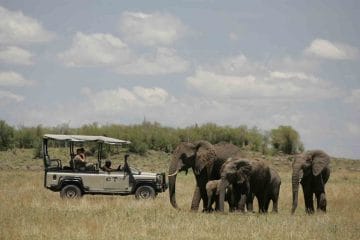
Samburu, Rhinos and Mara Safari
East Africa Kenya Samburu Buffalo Springs
From $ 5880 /USD
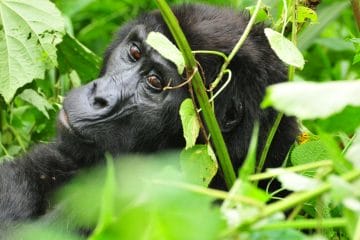
Migration in the Mara and Gorilla Trekking
East Africa Kenya Maasai Mara Uganda Entebbe Bwindi Impenetrable
From $ 6740 /USD
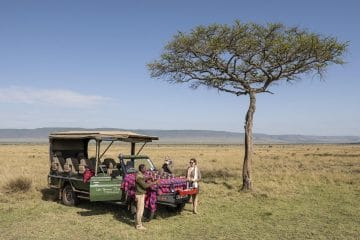
Migration River Crossings Safari with Governors...
East Africa Kenya Maasai Mara
From $ 4440 /USD
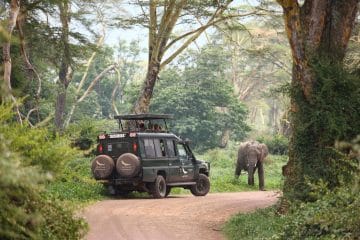
Highlights of East Africa - Luxury experience
East Africa Tanzania Safaris Ngorongoro Crater Serengeti Kenya Maasai Mara
From $ 8900 /USD
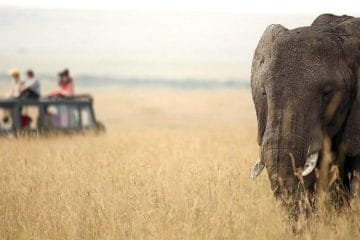
- Masai Mara and Serengeti Combo
East Africa Kenya Maasai Mara Tanzania Safaris Serengeti
From $ 11850 /USD
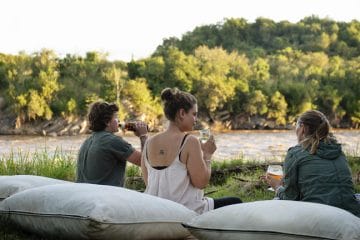
Unplugged Safari in the Mara
From $ 7880 /USD
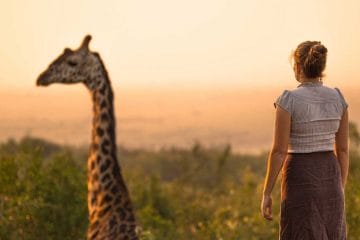
21 Kenya Safaris to choose from
Stay for 4 - 17 days
Experience our Tailor-made Tours in Kenya
Our recommended tours in kenya.
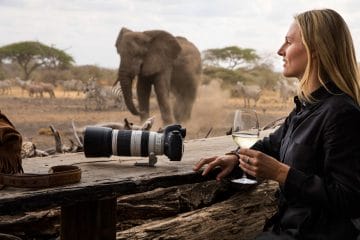
Enchanted Kenyan Safari
East Africa Kenya Chyulu Hills Maasai Mara
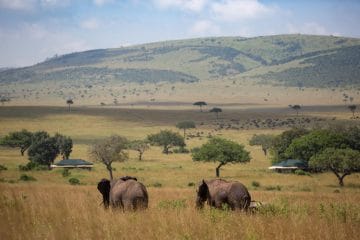
Highlights of Kenya Luxury Fly-In Safari
East Africa Kenya Nairobi Chyulu Hills Maasai Mara
From $ 10068 /USD
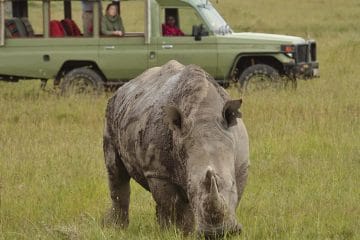
- Family Safari in Kenya
East Africa Kenya Laikipia, Lewa and Ol Pejeta Conservancy Maasai Mara
From $ 15300 /USD
What Our Guests Have to Say?
Read recent reviews from travellers who have planned and booked their trips with us, the travel arrangements and accommodation all worked as planned.
7-Day Tanzania Safari Review
Richard M, United Kingdom 05 Oct 2022
Best honeymoon/vacation of my life.
Honeymoon in Tanzania Review
Eric Holmes, United States 08 Nov 2021
Excellent communication, professional & helpful service with quick response times..
Botswana Five Day Adventure Review
Pete, Ireland 26 Apr 2019
Worked very hard to fulfill all my requirements and more.
Southern African Adventure
Cassie, Canada 16 Oct 2017
Trip of a lifetime (cape town, kruger area, victoria falls).
African Adventure Review
Joe, United States 25 Oct 2016
Well planned safari and good service.
Safari in East Africa Review
Billy, South Africa 11 Dec 2014
Ready to plan your tailor-made safari.

Steve Conradie, Co-founder, Discover Africa
Free safari planning advice from destination experts
- Kenya in January
- Kenya in February
- Kenya in March
- Kenya in April
- Kenya in May
- Kenya in June
- Kenya in July
- Kenya in August
- Kenya in September
- Kenya in October
- Kenya in December
- Amboseli National Park
- Laikipia Plateau
- Masai Mara National Reserve
- Mombasa and Surrounds
- Mount Kenya and Aberdares
- Northwest Safari Circuit
- Rift Valley Lakes
- Samburu Springs and Mount Meru National Park
- Southern Safari Circuit in Kenya
- The Coastal Belt
- Tsavo East and West
- Watamu and Malinda
- Camel Safaris
- Walking safaris – short walks, 2 – 3 hours
- A Relaxed Safari Holiday in Kenya
- Adventure Holidays in Kenya
- An Active Holiday in Kenya
- Beach and Bush Safari Holidays in Kenya
- Big Five Safari Holidays in Kenya
- Birding Safari Holidays in Kenya
- Foodie Holidays in Kenya
- Kenya Honeymoon Safari
- Kenya Photographic Safari
- Malaria Free Holidays in Kenya
- Walking Safari Holidays in Kenya
- Couple Holiday in Kenya
- Solo Travelling Through Kenya
- Affordable Safari Holiday in Kenya
- Budget Safari Holiday in Kenya
- Luxury Safari Kenya
- Changing Money in Kenya
- Cultural Practices of Kenya
- Getting Around in Kenya
- Health Care in Kenya
- Highlights of Kenya
- Is Kenya Safe?
- Kenya Food and Tipping
- Kenya Visa Requirements and Fees
- Kenya vs South Africa
- Kenya vs Uganda
- Languages in Kenya
- Lodges in Kenya: The Do’s and Don’ts
- Medical Emergencies in Kenya
- Medical Insurance in Kenya
- Medical Requirements for Kenya
- Packing List for a Kenya Holiday
- Shopping in Kenya
- Travelling to Kenya
- Welcome to Kenya
- What Vaccinations do I Need for Kenya?
- Wildlife in Kenya
- Kenya Safari
Join our newsletter
Sign up to receive exclusive offers, safari inspiration, and expert tips straight to your inbox.
By proceeding you agree to our Privacy Policy and Terms & Conditions .
POPULAR DESTINATION
Popular tours.
- Luxury Explorers Safari in Botswana
- Romantic Cape Town & Luxury Safari
- Wildlife and Gorillas of Rwanda
- Luxury Honeymoon in Mauritius
POPULAR ACCOMMODATIONS
- Sabi Sabi Earth Lodge
- Chobe Game Lodge
- Khwai Lediba
- Camp Okavango
- Khwai Leadwood
QUICK LINKS
- Safari Cost Estimator Tool
- [email protected]
En route vers votre prochaine aventure
Safari au kenya, mes conseils pour partir en safari au kenya.
Vous préparez un safari au Kenya ? Cela tombe bien, je vous explique dans cet article comment bien préparer et réussir votre safari au Kenya. Depuis toujours, les safaris font partie des voyages que je préfère ! Cela a toujours été un rêve d’enfant pour moi de me retrouver face à un animal sauvage . Si vous ne savez pas que faire au Kenya , je vous recommande fortement d'opter pour le safari, que ce soit sur une journée ou pour plusieurs nuits sur place, je suis certain que ce sera une expérience mémorable 🙂
Pour profiter à fond de votre séjour, je vous ai préparé un petit guide qui vous permettra de bien préparer votre voyage au Kenya .
Pourquoi faire un safari au Kenya ?
Le Kenya vous proposera un vrai moment d’évasion : entre l’observation des animaux dans leur milieu naturel et cette immersion totale dans les plus beaux paysages d'Afrique (la brousse , les prairies, la savane , les montagnes et les forêts), vous ne serez vraiment pas déçus, dépaysement garanti !
Vous trouverez donc ci-dessous mes recommandations, des conseils sur quand partir et quoi emporter, mais aussi des astuces, la liste des plus beaux parcs et réserves du pays . Bref de nombreuses informations qui, au final, vous permettront de profiter à fond de vos vacances, de vivre un safari de rêve et surtout de revenir avec des souvenirs pleins la tête. Il ne me reste plus qu’à vous souhaiter un « bon voyage » en Swahili : « safari njema » 😊
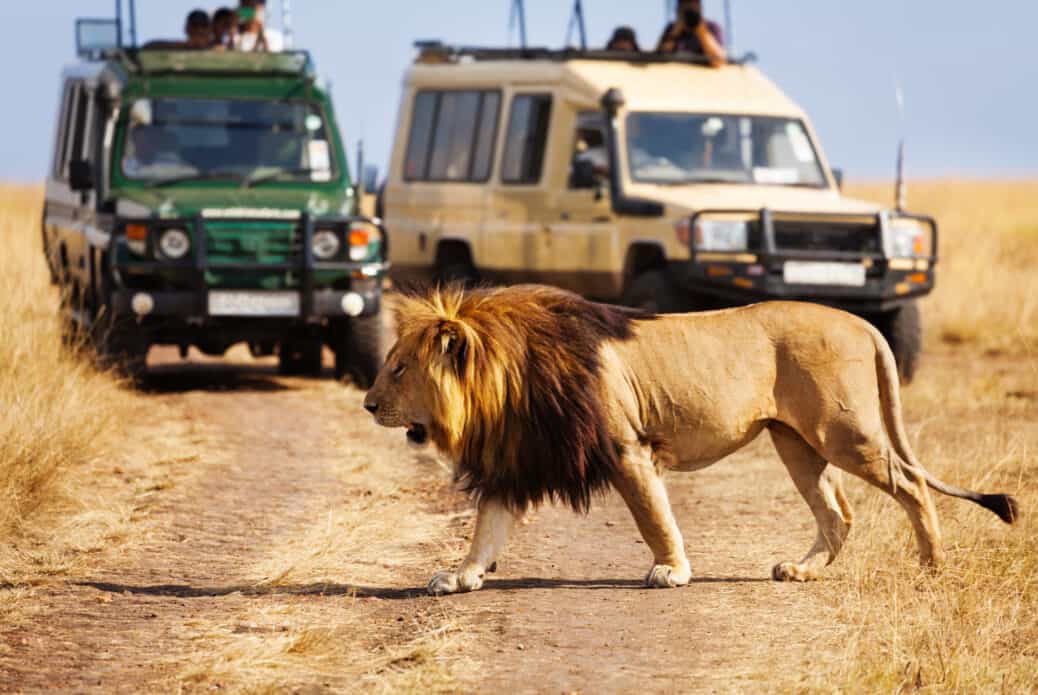
Le safari au Kenya a beaucoup de succès auprès des touristes pour plusieurs raisons. La raison principale est la diversité de la faune : au Kenya vous aurez de grandes chances de découvrir le Big Five . Piqûre de rappel, les animaux du Big Five sont les suivants :
- Le rhinocéros
Ce surnom a été utilisé pour la première fois en 1935 pour désigner les espèces favorites pour les photographies des touristes, mais aussi pour d'autres raisons plus tristes : la chasse de ces espèces qui sont en danger depuis des dizaines d'années.
Beaucoup de parcs et de réserves naturelles se concentrent au Kenya, c'est ce pourquoi ils ont beaucoup de succès. Les safaris du Kenya sont aussi plus abordables que les safaris dans d'autres pays comme la Tanzanie. Pour en apprendre davantage sur les différences entre le Kenya et la Tanzanie vous pouvez lire mon article dédié : safari au Kenya ou en Tanzanie .
Comment organiser son safari au Kenya ?
Si vous avez choisi de partir à l'aventure au Kenya, il vous faut maintenant préparer votre safari du mieux possible . En effet, partir en safari n'est pas une mince affaire et vous nécessitera plus d'organisation qu'un voyage farniente en bord de mer. Bien sûr, il existe différentes options pour l'organisation de son safari au Kenya et je vous dis tout ⬇️
Préparer un self drive safari
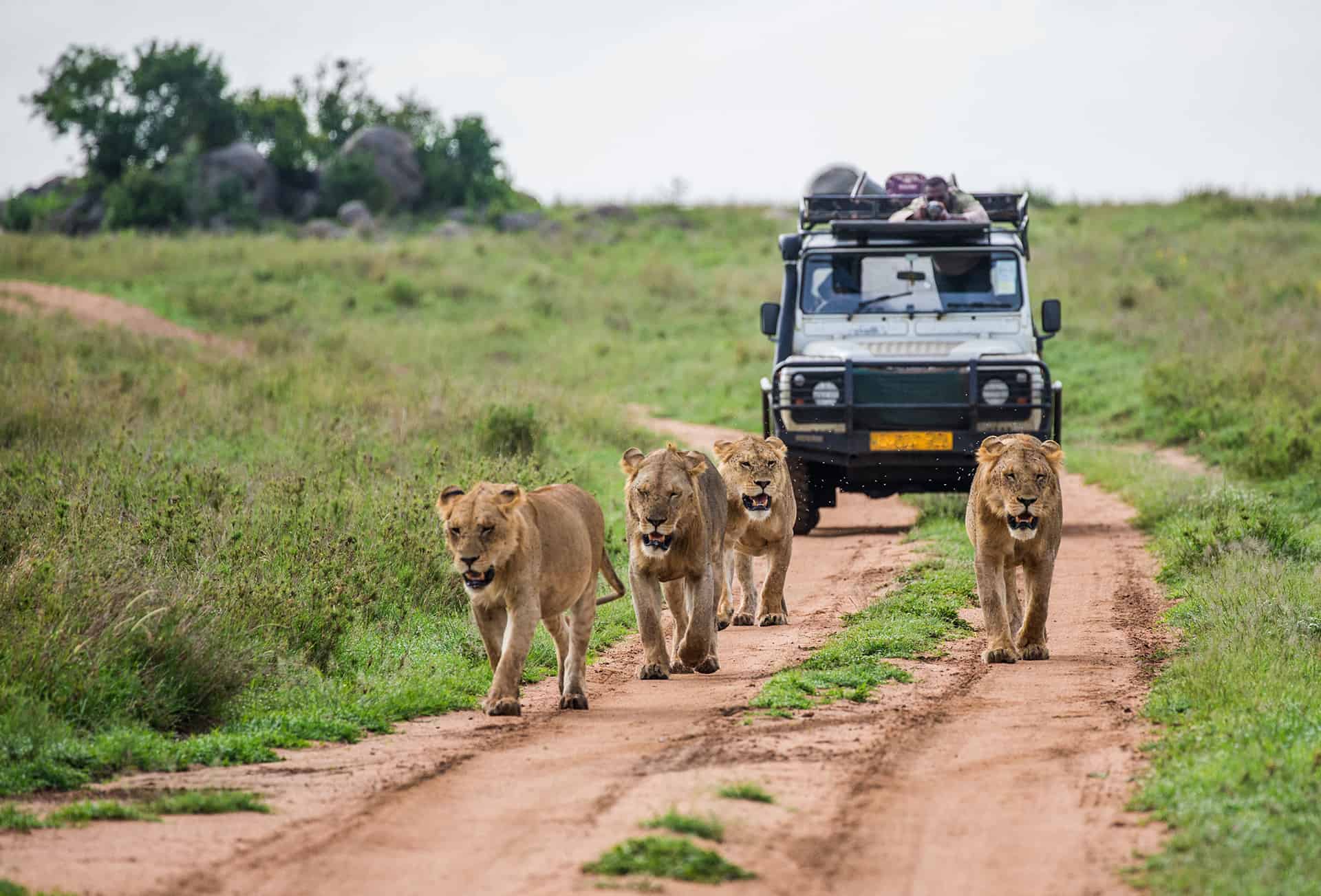
Vous pouvez organiser vous-même votre safari. C'est-ce que l’on appelle un self drive safari . Cela implique qu’une fois sur place, vous devrez louer un véhicule , réserver votre hébergement et réserver vos billets pour les parcs et réserves naturelles.
Aucune inquiétude à avoir, les routes du pays sont en bon état (même si elles sont souvent mal éclairées) et les pistes dans les parcs et réserves sont plutôt bien praticables . Je vous conseille toutefois de louer un 4x4 ou un véhicule de type SUV . Ils sont bien plus pratiques sur les pistes abimées. De plus, vous serez un peu surélevé et cela vous permettra de mieux observer les animaux.
Ce type de safari vous permet de passer un séjour en toute indépendance puisque vous organiserez vos journées comme vous le voulez.

Attention dans les villes, la conduite se fait à gauche et le code de la route n'est pas respecté par les locaux. Je ne vous conseille pas de vous lancer dans un self drive safari si vous n'êtes pas à l'aise en voiture.
Combien coûte une voiture de location au Kenya ?
Pour avoir une idée du budget que vous devrez allouer à votre véhicule de location, consultez un comparateur comme RentalCars et consultez les offres des agences présentes à l'aéroport de votre ville d'atterrissage (bien souvent il s'agira de la capitale, Nairobi ).
Vous pouvez aussi vous diriger vers un prestataire local qui vous proposera une gamme de voitures spécialisées dans les safaris dont les fameux 4x4 avec équipement de camping intégré sur le toit 😉
Voici un tableau récapitulatif des tarifs par jour par type de véhicules pour un safari au Kenya de 10 jours ou plus :
* Du 1er mars au 31 mai
Pour un safari de 10 jours au Kenya, pour un Toyota Landcruiser Stretched avec toit de safari en saison haute, il vous faudra donc prévoir un budget de 1 290 € .
Le safari via une agence locale ou circuit privé
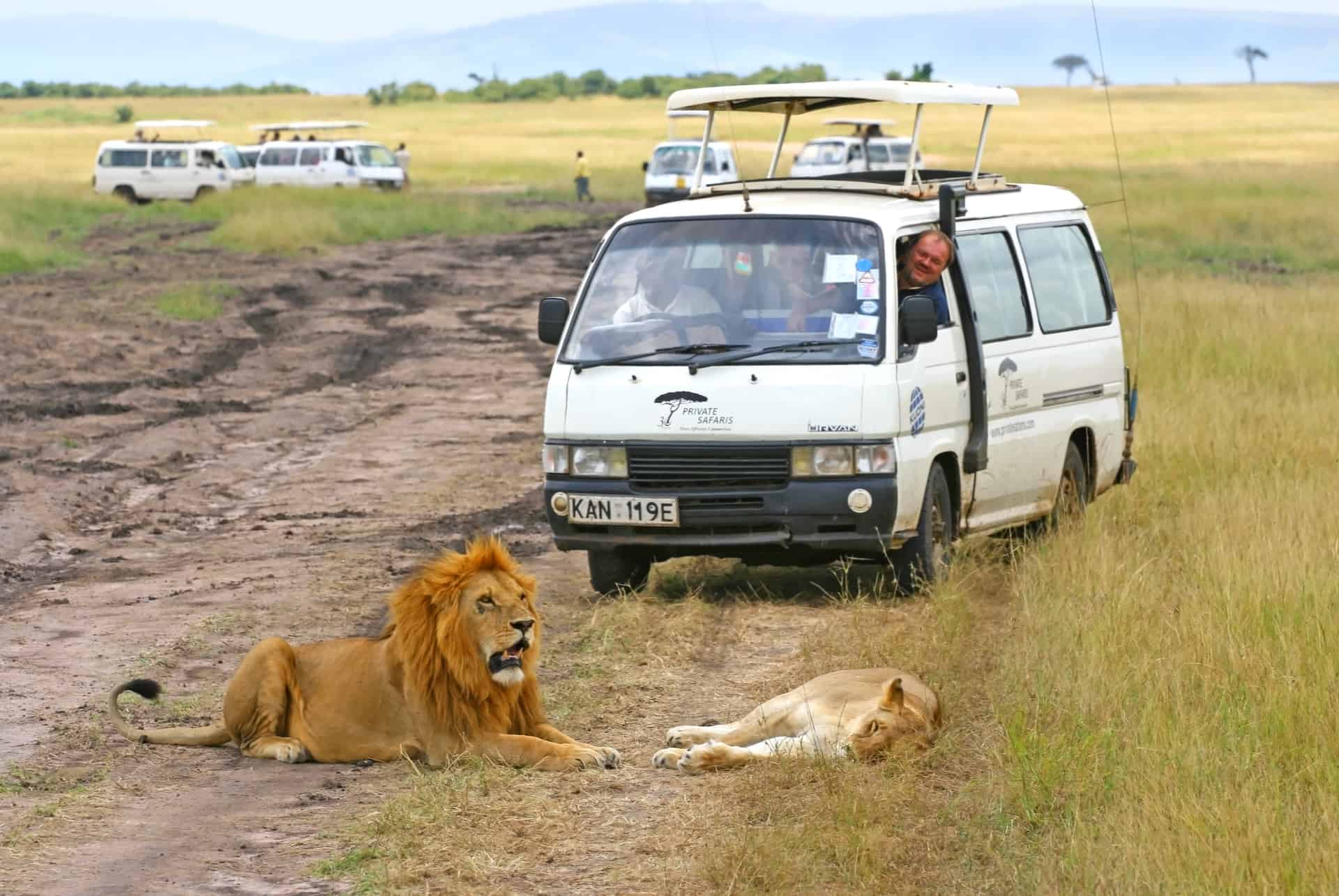
Votre agence de voyage peut vous planifier un séjour sur place selon vos goûts et désirs. Il s’agit le plus souvent de circuits tout compris (vol compris) que vous aurez choisis parmi une liste ou d’un séjour sur mesure . Quoiqu'il en soit vous serez accompagné par un guide ou par un ranger, bref par un professionnel, un réel avantage si vous n'y connaissez rien 😉
Des programmes types sont prévus notamment des game drive à savoir des excursions de 3 à 4 heures à travers la brousse et la savane avec des itinéraires prédéfinis . Ces excursions peuvent aussi avoir lieu de nuit ce sont les night drive . Cela vous donnera l’occasion de voir les animaux chasser la nuit grâce à de grosses lampes torches accrochées au 4x4 ou à la Land Rover.
Vous avez même des safaris itinérants : un voyage personnalisé à travers les plus beaux parcs du pays. Le safari privatif est la solution qui vous permettra de profiter d’un safari avec un guide qui connaît le terrain par cœur. Vous aurez donc plus de chances de voir des animaux !
L'autotour / le circuit accompagné
C’est le même type de safari, mais vous serez en petit groupe : soit avec votre famille ou vos amis soit avec des étrangers. Les groupes sont généralement constitués de 12 personnes (6 par véhicule). Vous ferez les excursions à bord de 4x4 ou de Land Rover avec des sièges surélevés.
Voici d'ailleurs un safari de ce type : 3 jours au départ de Nairobi vers la réserve naturelle de Masai Mara . Vous serez pris en charge à vôtre hôtel à Nairobi le matin et partirez vers Masai Mara. Le premier jour, vous passerez par le point de vue de la vallée du Grand Rift. Vous partirez le soir en excursion pour observer les animaux sauvages de la réserve. Le 2e jour, vous partirez à la recherche du Big Five et pique-niquerez dans la savane. Ce jour-là, vous irez jusqu'à la rivière où les gnous traversent le Mara depuis le Serengeti.
Le dernier jour, vous reprendrez la route vers Nairobi à moins que vous ayez choisi une option comme le tour en montgolfière. Si vous voulez en apprendre davantage sur cette réserve, je vous conseille de lire mon article dédié à la visite du Masai Mara au Kenya . Prix du safari ? Environ 385 € par personne.
Combien coûte un safari au Kenya ?
Il y a beaucoup de paramètres à prendre en compte pour établir un budget safari au Kenya . Selon le type de safari, vous vous devrez penser à plus ou moins de choses. Si vous partez avec une agence, vous n'aurez qu'à consulter leurs offres mais si vous organisez vous-même votre safari voici le budget pour un safari au Kenya .
Prix du vol France - Kenya
Pour trouver un vol pas cher, la meilleure solution sera d'utiliser un comparateur de prix de vol comme Skyscanner . Vous devrez définir vos dates de séjour, vos horaires de vol souhaitées et même votre budget. Ne comptez pas moins de 500 € en moyenne l’aller-retour.
Si les compagnies “ Air France ” ou “ Kenya Airways ” proposent des lignes directes vers le Kenya, d'autres proposent des vols avec escale, c'est par exemple le cas d' Ethiopian Airlines et cela rend le vol bien moins cher . Le trajet sera plus long et pénible mais c'est un bon moyen de faire des économies .
Prenez-vous bien à l'avance et si vous ne comptez pas réserver immédiatement, choisissez l' onglet de navigation privée pour ne pas voir les tarifs augmenter lors de votre retour sur le site quelques jours plus tard. Notez que vous atterrirez soit à l’ aéroport de Nairobi , la capitale, soit à Mombasa à 500 km de là.
Prix de l'hébergement durant un safari au Kenya
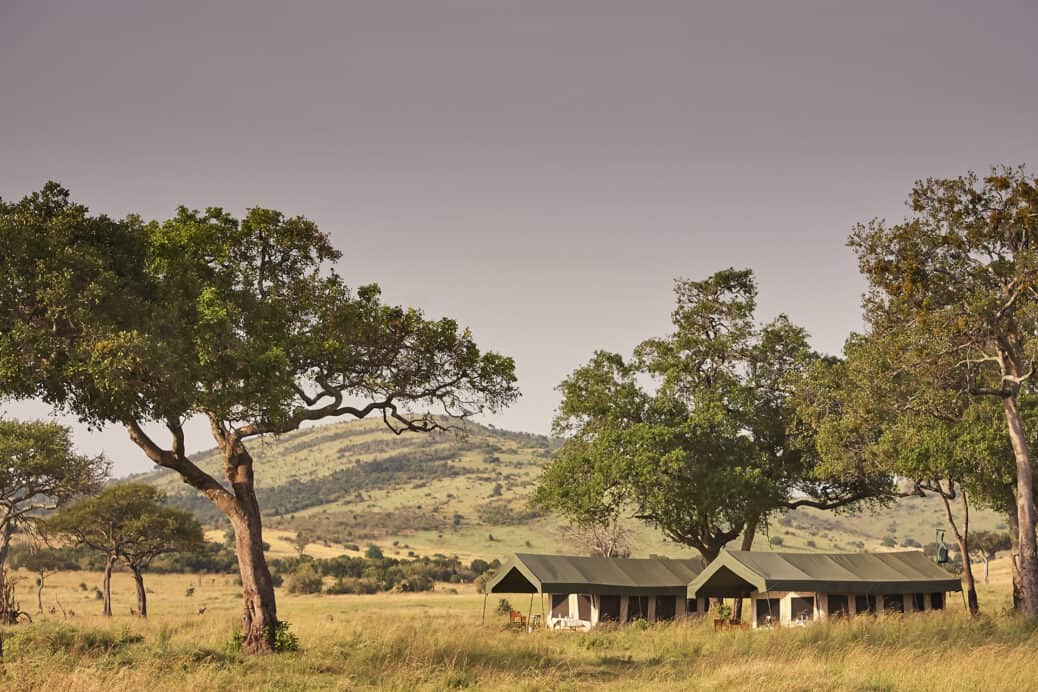
Si vous avez opté pour un self drive safari à savoir un safari avec un véhicule que vous conduirez vous-même, vous pourrez faire du camping, voire même dormir dans votre véhicule tout équipé .
Vous pouvez aussi opter pour un hébergement en hôtel (du 2 au 5 étoiles). Des sites comme Booking proposent un large éventail de choix pour passer quelques nuits au cœur des parcs et réserves.
Si vous avez réservé un safari sur mesure à savoir safari + hébergement , vous logerez sûrement dans des lodges aussi appelés hôtels de brousse . Il peut s’agir aussi bien de chambres sur pilotis que de chambres luxueuses. Leur petit plus ? Vous aurez un super point de vue sur les animaux. Bien évidemment ce genre de circuit propose aussi des hébergements en camping.
Voici donc un exemple de chaque type d'hébergement de ma sélection personnelle :
- Le Jambo Mara Safari Lodge est un lodge situé au coeur de la réserve de Masai Mara. Comme pour la plupart des lodges, les prix par nuit sont assez élevé mais celui-ci se trouve dans la moyenne basse avec 288 € tout en proposant des services de qualité : balcon d'observation dans chaque chambre, tous les repas sont compris et activités sportives.
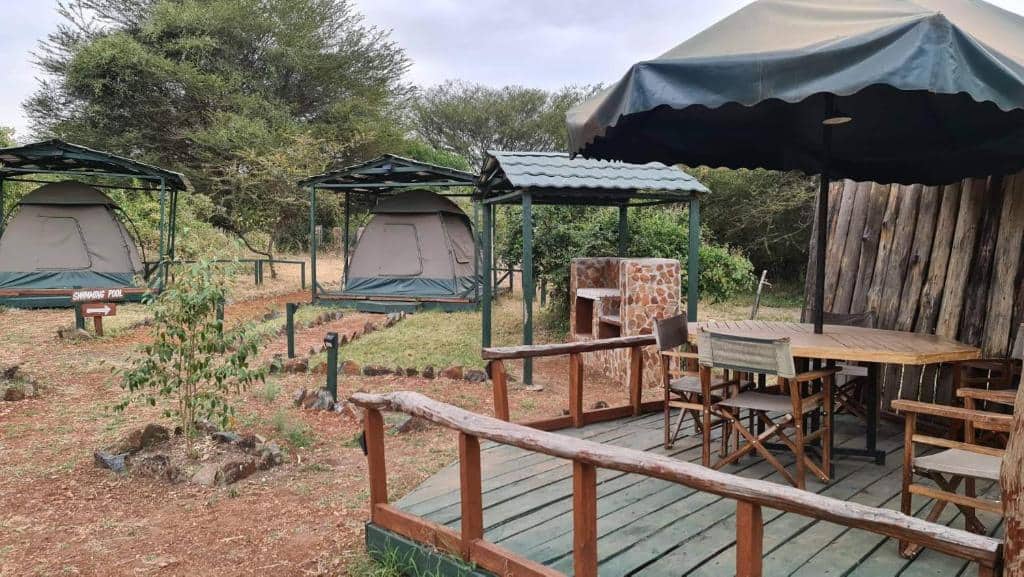
- Greenwood Safari Camp est l'un des meilleurs campings au Kenya et se situe lui aussi dans la réserve naturelle de Masai Mara . Vous ne profiterez bien sûr pas de services similaires au lodges luxueux mais le tarif y est très attractif : 38 € par nuit . En ajoutant 5 € vous profiterez même d'un petit-déjeuner. Le campement dispose aussi d'aires de jeux pour les enfants, c'est selon moi la meilleure façon de s'immerger intégralement dans l'aventure que représente un safari 🤩
Tarifs des entrées dans les parcs et les réserves
Ils diffèrent d’un parc à un autre et ils ne sont pas les mêmes pour les locaux et les touristes. Prévoyez en moyenne 50 à 60 $ pour un adulte et 30 à 40 $ pour un enfant.
Notez que la monnaie du pays est le “ shilling kényan ” (KSH), mais vous pouvez utiliser le dollar américain . Vous pouvez payer par carte bancaire ou retirer de l’argent dans un distributeur automatique. À titre informatif 100 KSH = 0,76 €.
Les meilleurs parcs pour faire un safari au Kenya
Le Kenya compte une quarantaine de parcs et réserves animalières . Certains sont nationaux, d’autres privés. Voici selon moi les 10 meilleurs parcs du pays et je vous conseille d'en visiter au moins 2 voire 3 si vous partez pour une longue durée.
1 - Le Parc National d’Amboseli
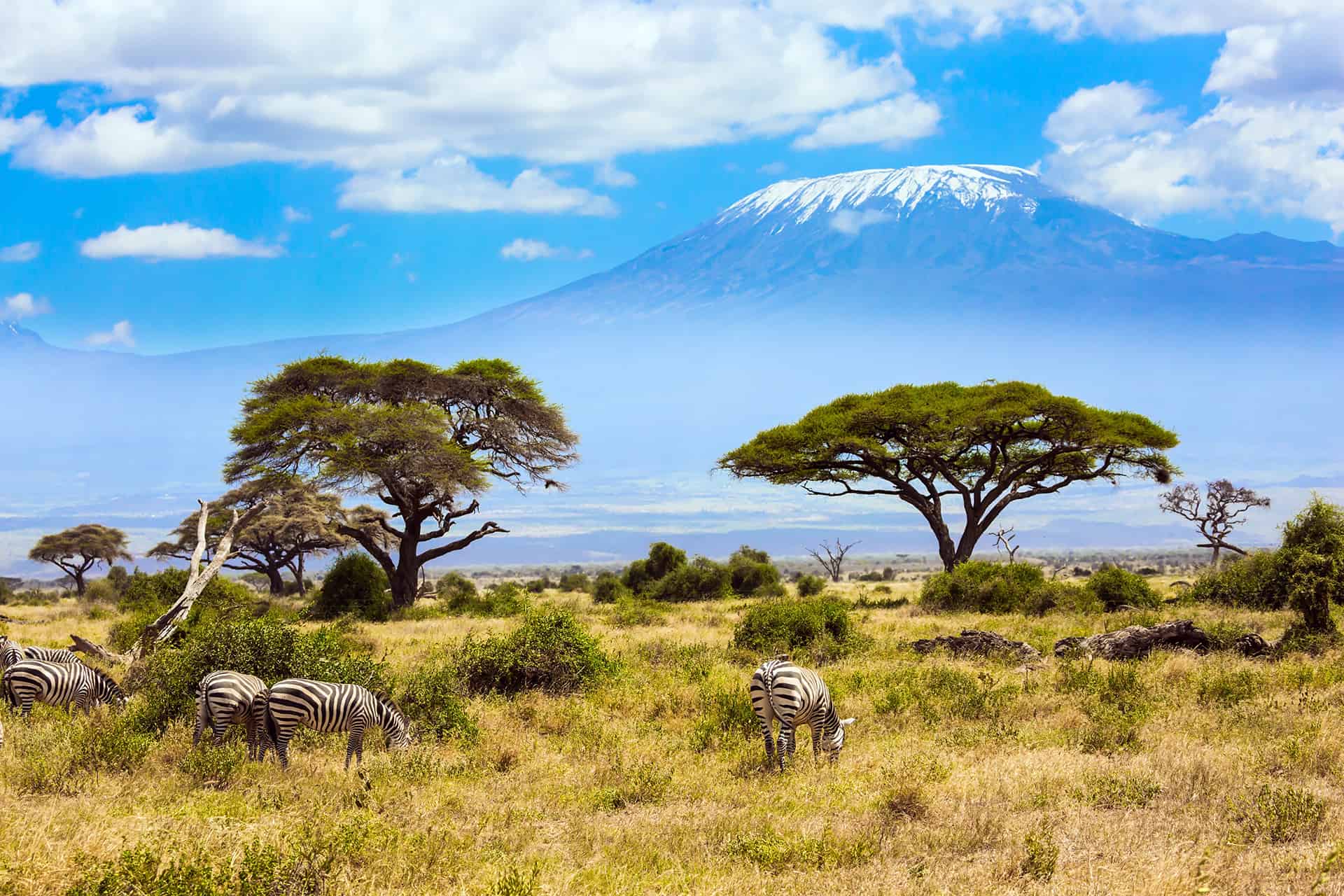
C'est sans aucun doute l'un des plus beaux parcs du continent africain et donc l'un des meilleurs pour faire un safari au Kenya. C'est le parc le plus connu et vous avez déjà forcément vu une photo prise dans ce parc avec le Kilimandjaro en arrière plan 🙂
Sur ses 392 km² , divers écosystèmes se côtoient : des plaines, des forêts d’acacias, mais aussi des étendues désertiques et des marécages. D'ailleurs il a été classé réserve de biosphère de l’UNESCO.
Le parc abrite des éléphants (le plus grand nombre dans le pays), des guépards , des girafes , des impalas, des gazelles. Mais il y a aussi des tas d’oiseaux qui y vivent comme des grues , des ibis sacrés, des hérons et des marabouts.
Le top dans ce parc c’est que vous y aurez un cadre exceptionnel à savoir une vue exceptionnelle sur les neiges éternelles du mont Kilimandjaro (5 895 mètres). L’accès est aussi très facile depuis Nairobi ! Le hic, c’est qu’il est très fréquenté . Le parc est ouvert tous les jours de 6h à 19h .
Depuis Nairobi, je vous propose une excursion à la journée au parc national d'Amboseli . Celle-ci comprend l'entrée au parc avec votre camionnette au toit ouvrant. Le midi, vous déjeunerez dans un lodge luxueux et un guide professionnel vous emmènera au plus proche des animaux sauvages. Prix de l'excursion avec prise en charge de votre hôtel à Nairobi : environ 295 € .
Tarifs d’entrée :
- Adulte : 70 $
- Enfant (moins de 18 ans) : 20 $
- Véhicule : 2,73 $
2 - La Réserve Nationale du Masai Mara
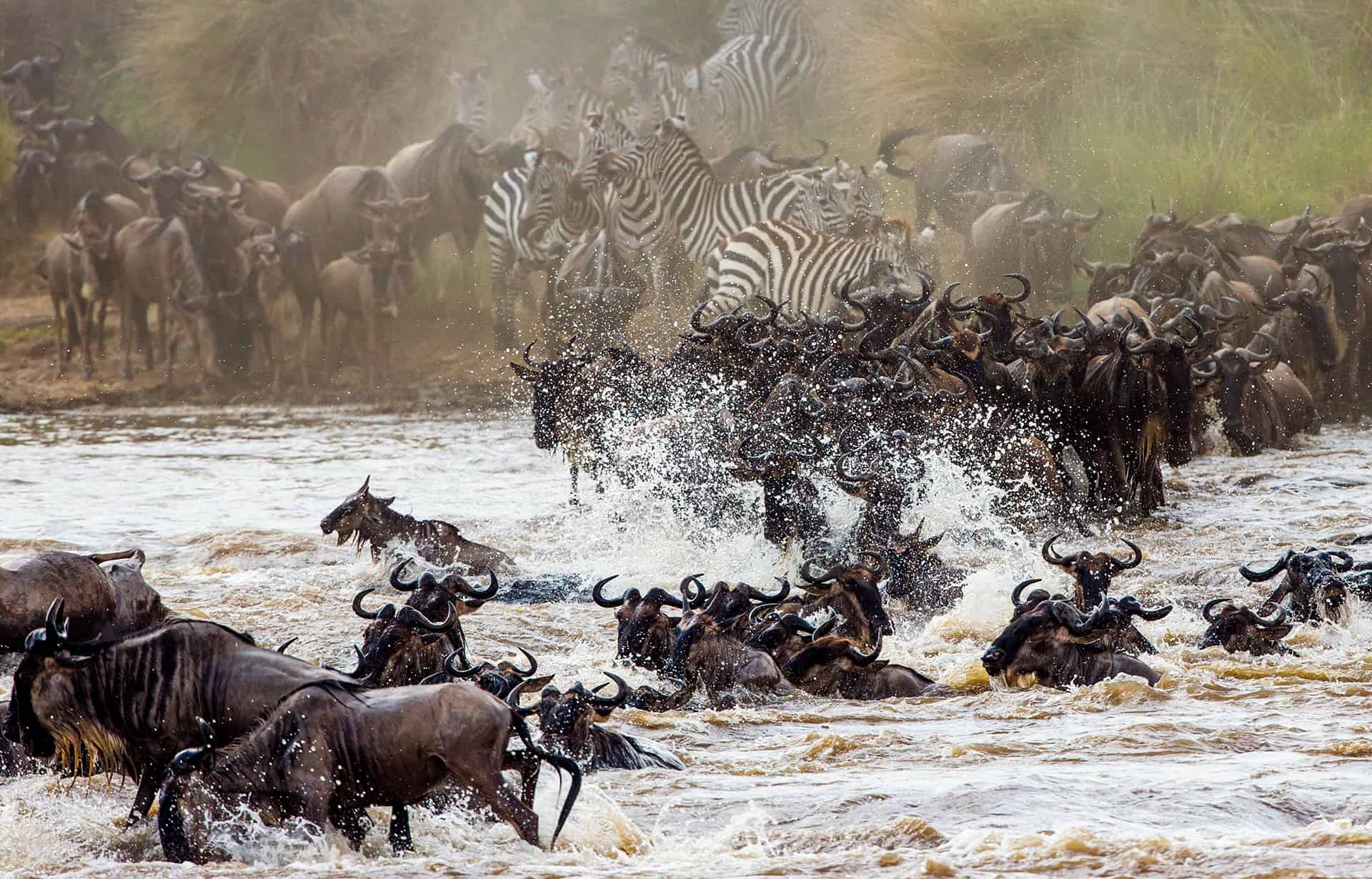
Je vous en parle depuis le début, située dans le sud-ouest du Kenya à la frontière avec la Tanzanie , la Réserve de Masai Mara ou Maasaï-Mara s’étend sur 1 510 km² et se trouve en altitude (1 500-2 100 mètres).
Elle s’appelle ainsi car la célèbre tribu des Masaïs y vit. Vous pourrez d'ailleurs visiter un village Masaï dans une des zones de conservation du parc. Elle est aussi traversée par une rivière, la Mara .
C’est une réserve unique au monde avec des paysages variés : des plaines, des collines, des falaises, de la savane, des marécages, des ruisseaux... Vous pourrez y observer les “Big Five”, mais surtout de nombreux herbivores comme des zèbres , des gazelles ou des gnous. Cette réserve est en effet leur lieu de migration préféré de mi-juillet à fin septembre et c’est un super spectacle inoubliables !
Près de la rivière Mara, vous verrez aussi des crocodiles et des hippopotames ainsi que de près de 470 espèces d’oiseaux dont des martins-pêcheurs , des vautours et des aigles.
Le top, c’est que vous avez la possibilité de faire un vol en montgolfière au-dessus du parc. Le hic ? La réserve du Masai Mara est une des plus visités du pays surtout en haute saison !
- Enfant (moins de 18 ans) : 40 $
Tester le montgolfière au kenya 🪂
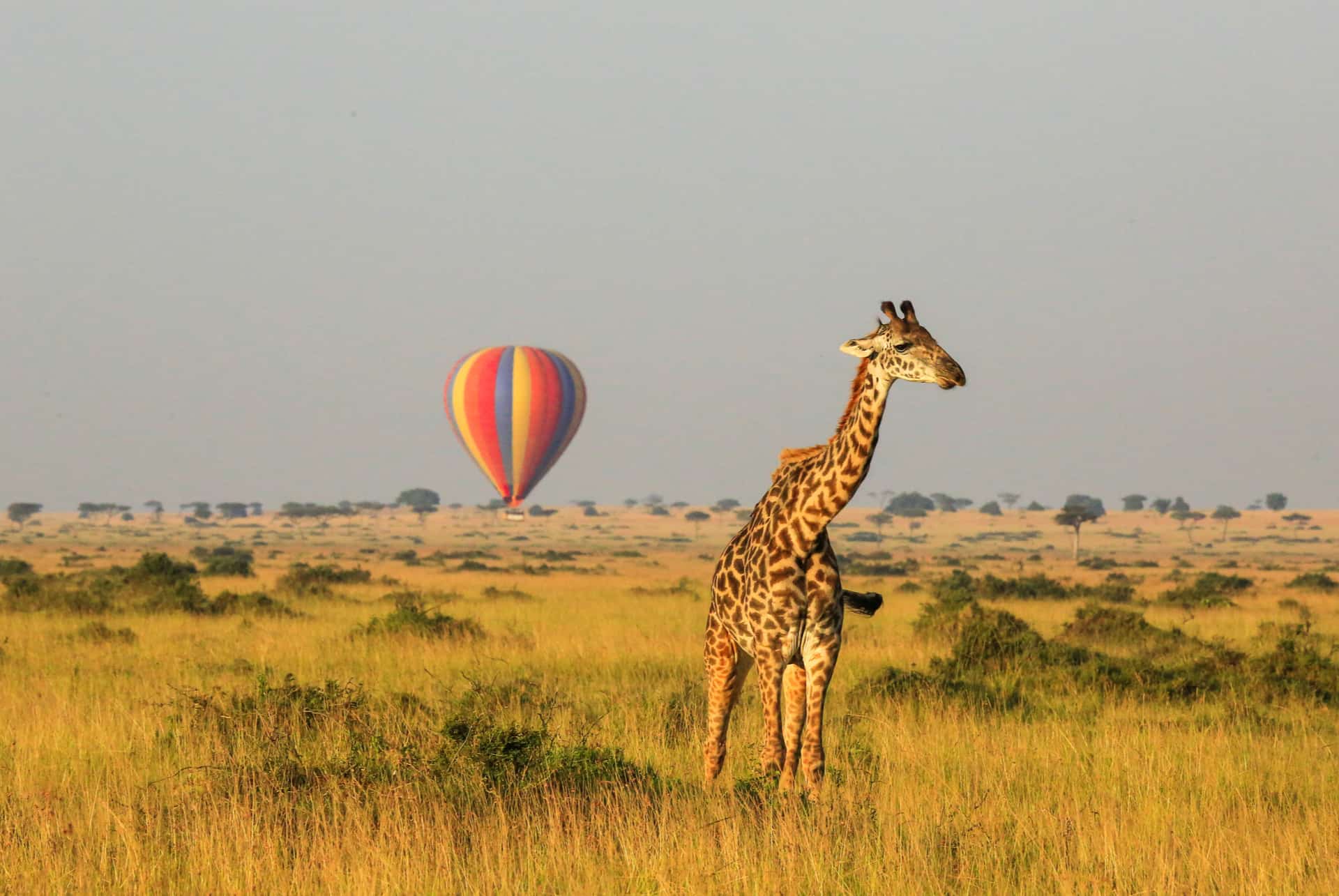
Pour finir un safari au Kenya en beauté, rien de plus marquant que d' embarquer à bord d'une montgolfière . Vous décollerez au petit matin pour admirer le lever du soleil et les animaux en contrebas. Le vol durera environ 1 h 10 et quand vous atterrirez, l'on vous proposera un buffet de petit déjeuner continental accompagné de champagne . Votre safari en montgolfière se terminera par un transfert vers votre hébergement en Jeep ouverte pour faciliter l'observation des animaux. Pour ce moment luxueux et privilégié prévoyez tout de même un budget d'environ 390 € 🙂
3 - Le Parc National Tsavo
Le Parc National Tsavo est la plus grande réserve du pays (4% de la superficie du Kenya – 20 812 km² ) ainsi qu’une des plus anciennes. Elle est divisée en deux parties : Tsavo Est et Tsavo Ouest .
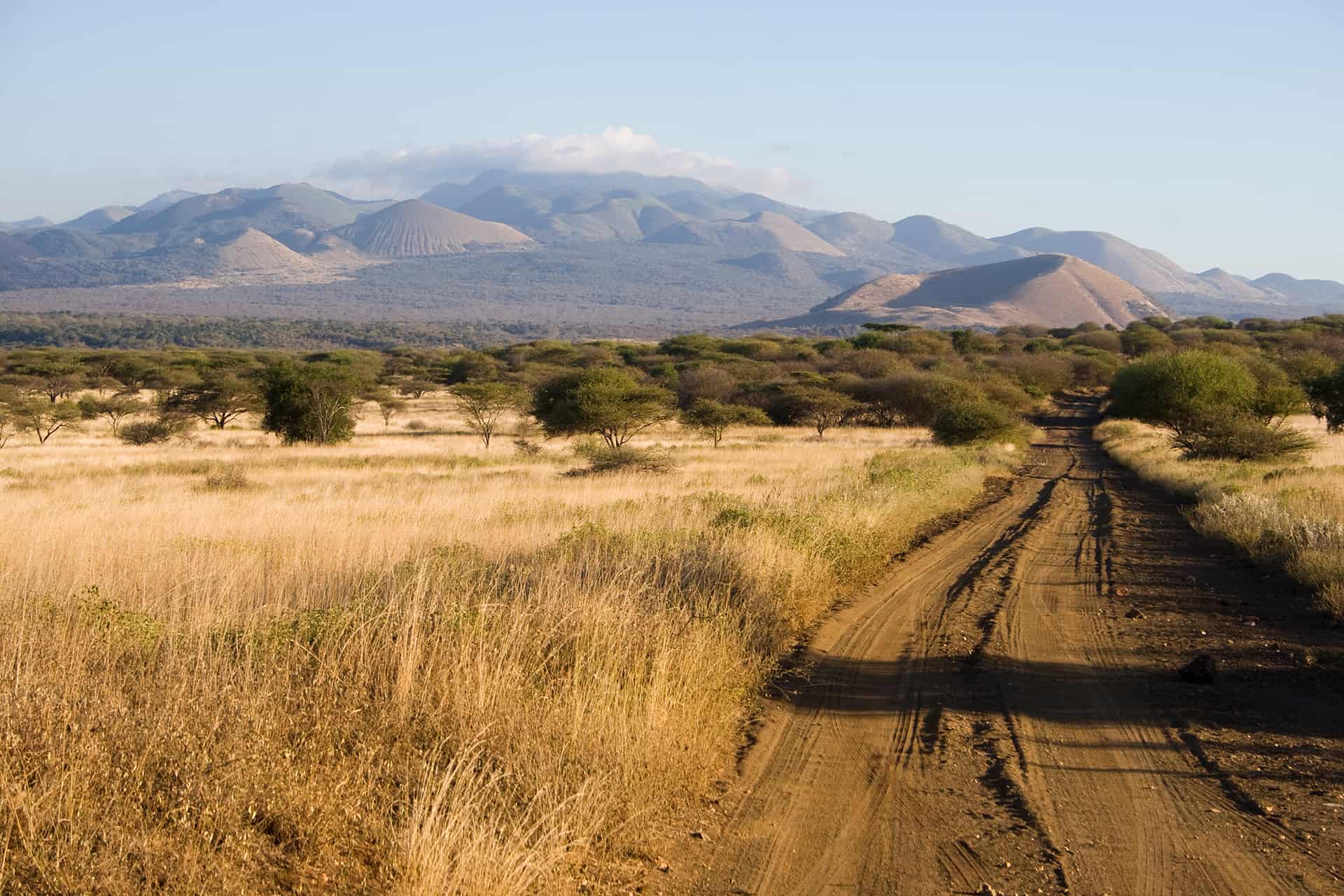
C'est une superbe région volcanique à la terre rouge et ocre avec des paysages à couper le souffle, très différents d’une partie à l‘autre. Il y a des collines, une chaine de montagnes ( Taita Hills – 2 200 m d’altitude), de la brousse, des rochers et de grandes plaines avec de nombreuses sources.
Le parc est tellement grand que vous aurez du mal à apercevoir les différents animaux qui y vivent notamment les fameux “ éléphants rouges ” de Tsavo. Vous aurez peut-être la chance d’observer des girafes ou encore des léopards à l’est et des crocodiles et des hippopotames à l’ouest. Le parc abrite aussi des chacals et de nombreuses lionnes avec leurs lionceaux.
Plus de 500 espèces d’oiseaux y ont trouvé refuge dont l’ autruche de Somalie , des pintades, des guêpiers de Révoil ou des alouettes. Le parc national Tsavo Ouest est ouvert tous les jours de 6h00 à 19h00 .
- Adulte : 60 $
4 - Le Parc de Nairobi
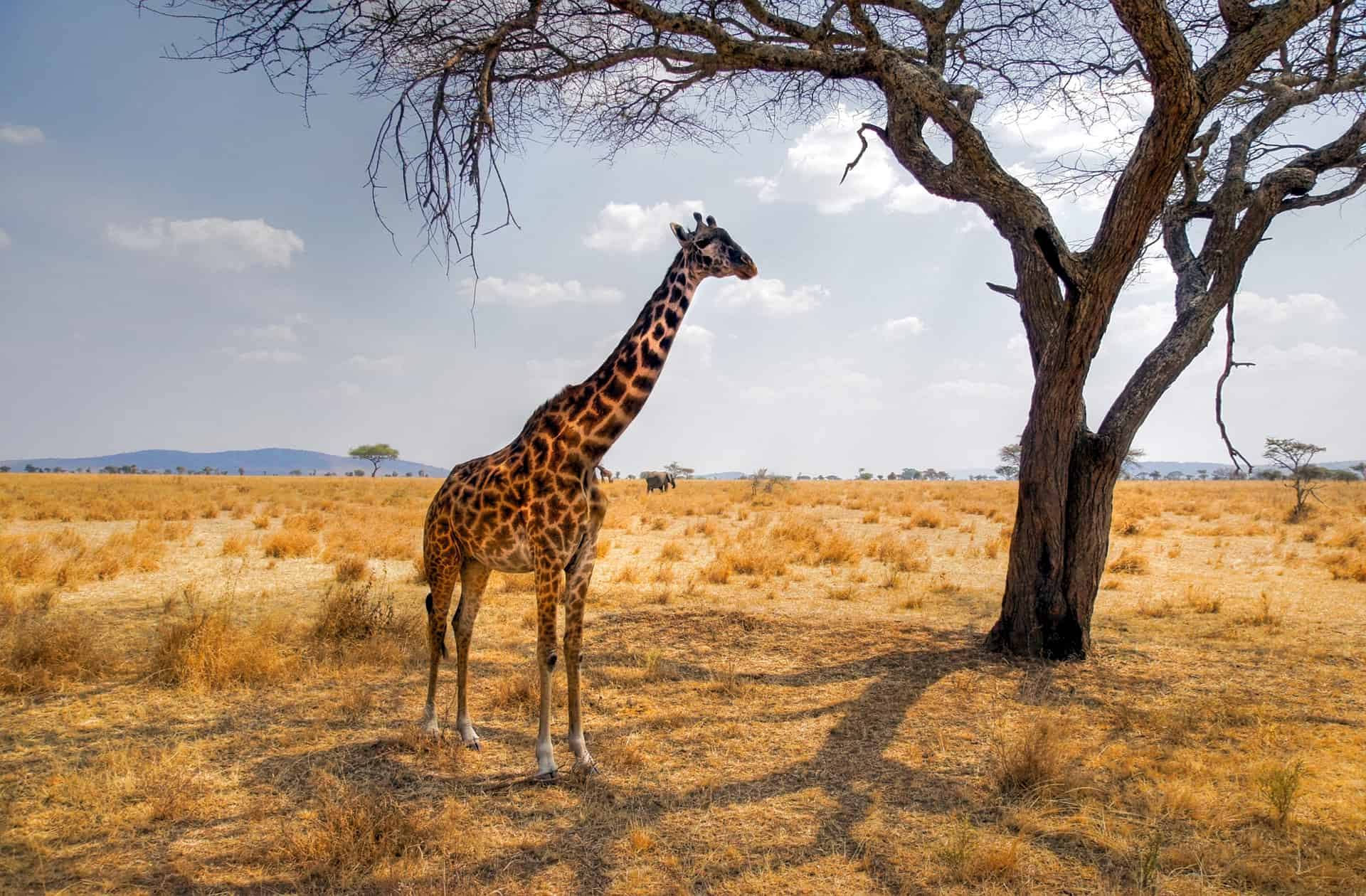
Le Parc de Nairobi est un petit parc (114 km²), idéal pour les safaris en famille surtout parce qu’il se trouve à à peine sept kilomètres de Nairobi.
Il n’y a pas beaucoup éléphants dans ce parc, mais vous pourrez y voir des lions, des guépards, des rhinocéros, des zèbres, des élans, ou encore des autruches. Beaucoup de girafes dont des girafes réticulées (une espèce avec un pelage composé de carreaux en forme de polygones).
C’est le meilleur endroit pour observer le petit koudou (une antilope) et des rapaces comme l’aigle. Le parc est ouvert de 6h à 18h . Je vous propose d'ailleurs une excursion guidée au parc national de Nairobi qui durera le temps d'une journée. Pour cela, vous dépenserez environ 68 € par personne.
Tarifs d’entrée sans guide :
5 - Le Parc National Nakuru / Lac Nakuru
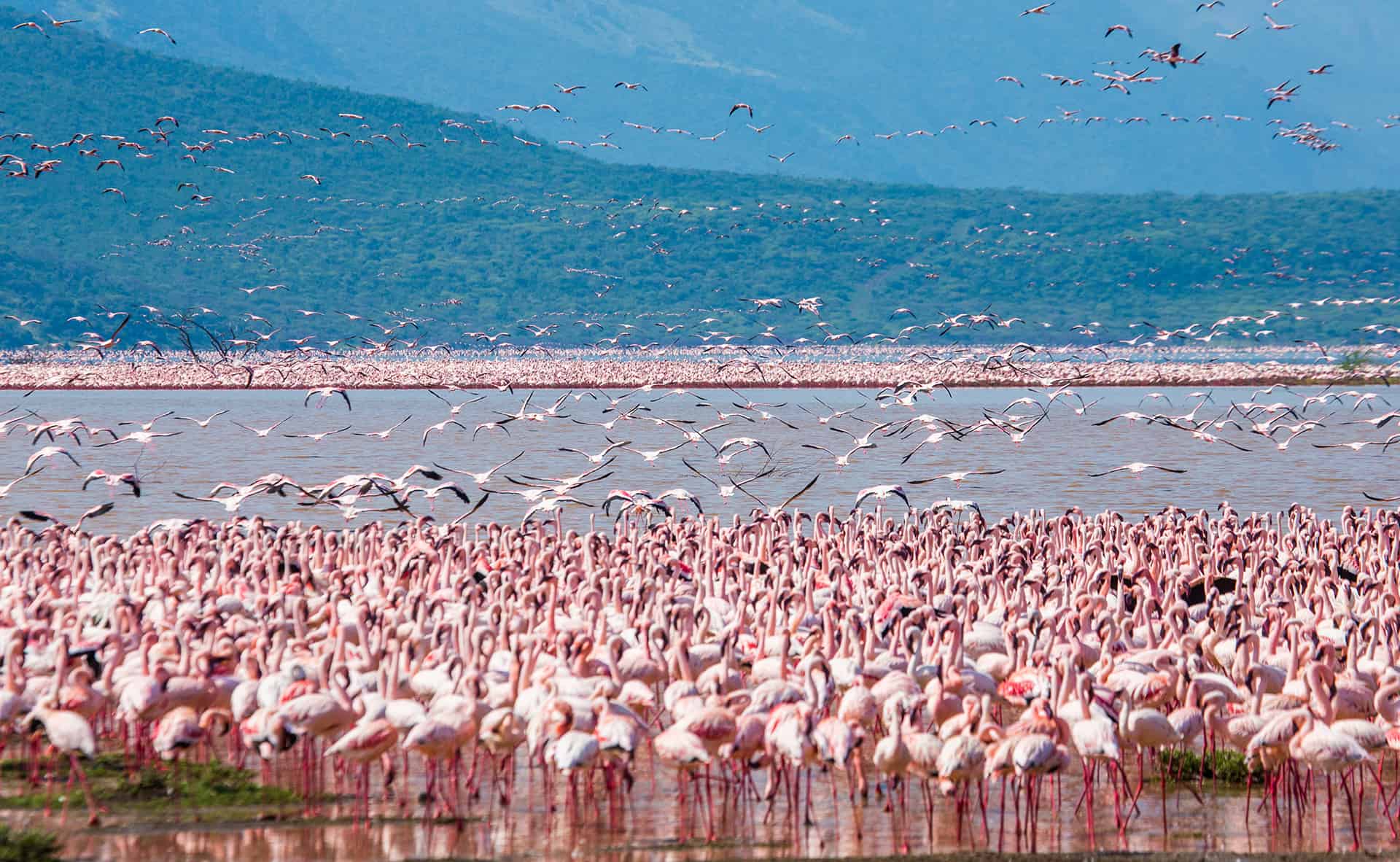
Situé au nord de Nairobi et classé au patrimoine mondial de l’UNESCO, le Lac Nakuru (200 km²) est un des parcs incontournables à faire !
Dans ses prairies et forêts, vous pourrez voir la plus grande concentration de rhinocéros blancs du Kenya , mais également des rhinocéros noirs. Il abrite aussi d’autres animaux sauvages comme des lions et des buffles ainsi que de nombreuses espèces d’oiseaux.
Le parc est juste magnifique : vous devez vraiment aller le voir ne serait-ce que pour son superbe lac turquoise et ses volcans ! Pour moi il a fait partie de mon itinéraire pour mon safari au Kenya par deux fois déjà !
6 - Le Domaine de Samburu, mon coup de cœur pour un safari au Kenya
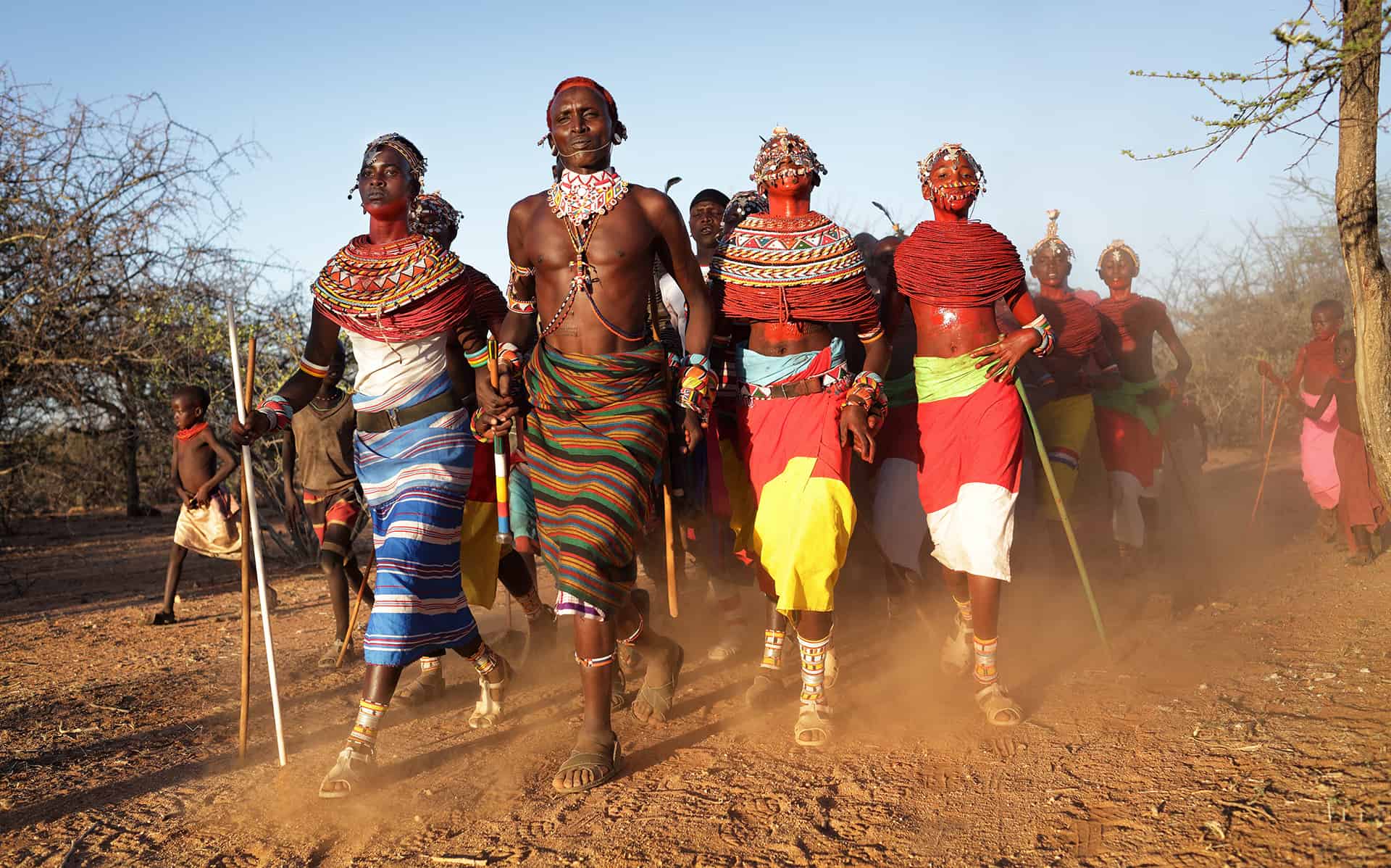
Situé au nord du pays, c'est l'un des parcs les moins connus du pays . Il est par conséquent l'un des moins fréquentés, ce qui est plutôt un avantage. Pourtant c’est un vaste espace naturel qui regroupe la Réserve de Shaba et celle de Buffalo Springs soit une superficie de 844 km².
Dans son climat semi-aride, vous pourrez observer des éléphants, des léopards, des crocodiles, des zèbres et des oryx . Et si vous avez de la chance des lions, des léopards, des guépards, des hyènes et même des lycaons .
Si vous en avez l’occasion, allez voir les Samburu , une tribu nomade originaire du Soudan . Ils vous feront découvrir leur culture et leurs traditions avec grand plaisir. Si vous souhaitez passer quelques nuits sur place, vous aurez peut-être l’occasion de dormir dans une de leurs huttes traditionnelles.
7 - Le Parc National des Aberdares
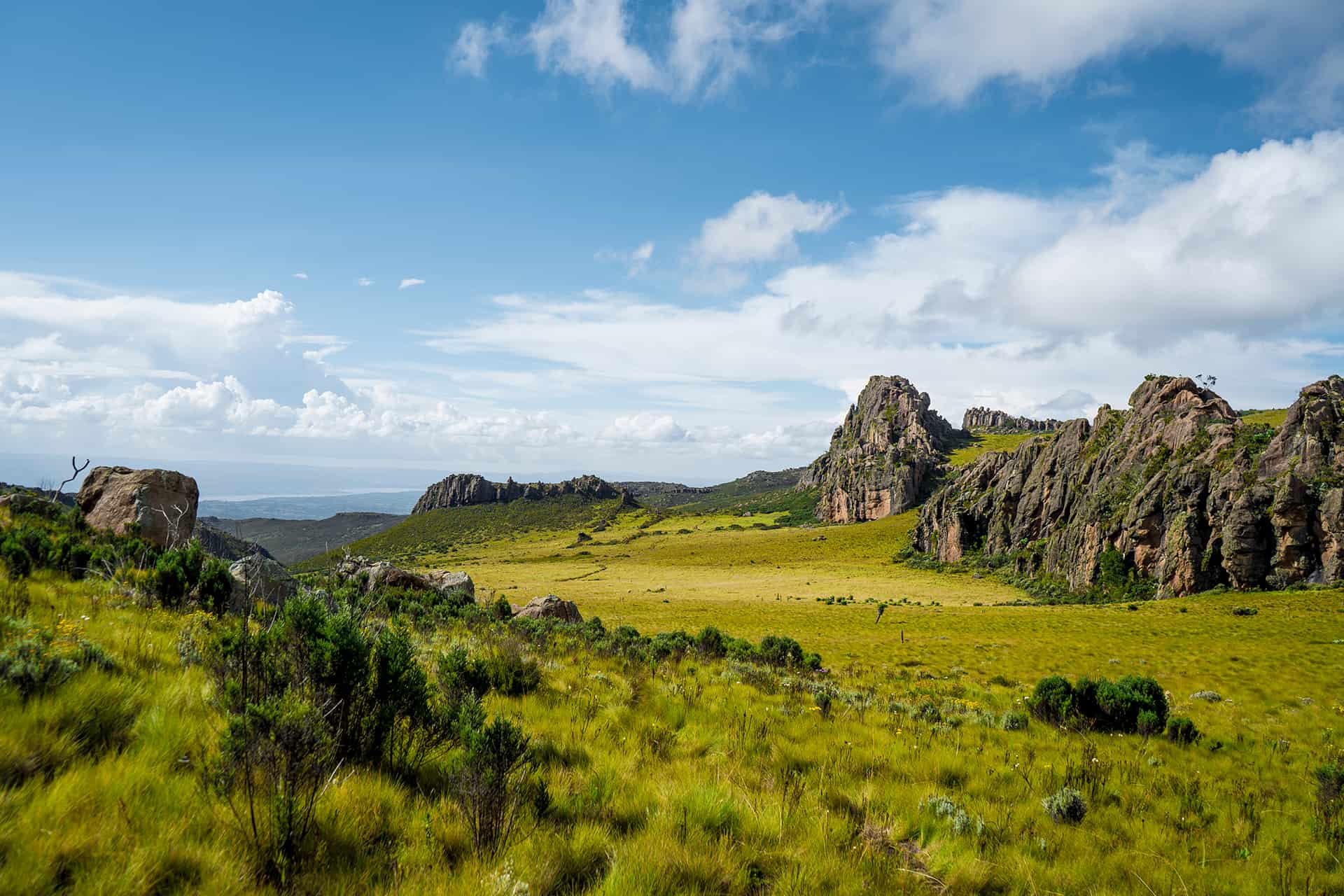
Situé à 4 000 m d’altitude, le Parc des Aberdares propose une expérience différente du safari. On y trouve en effet une végétation tropicale et dense avec de nombreuses forêts avec des rivières et des cascades. La possibilité donc pour vous de voir des singes !
Il y a aussi des montagnes et des vallées où se regroupent les éléphants, les buffles, les lions et les guépards. J'ai découvert ce parc lors de mon deuxième safari au Kenya. Pour plus d'infos sur ce parc, rendez-vous sur le site officiel 🙂
8 - Le Parc National de Méru
Situé à 200 km au Nord Est de Nairobi, le Parc de Méru est aussi un des parcs les moins fréquentés du Kenya. Pourtant dans ses 870 km² de zone humide, vous verrez des paysages très variés (des marais et des hautes herbes) et des animaux très divers comme l’oryx, le koudou et le gerenuk .
Près de 427 espèces d’oiseaux vivent dans ce parc. C'est dans ce parc que vous pourrez admirer les plus belles girafes d’Afrique.
9 - La Réserve privée Lewa Downs
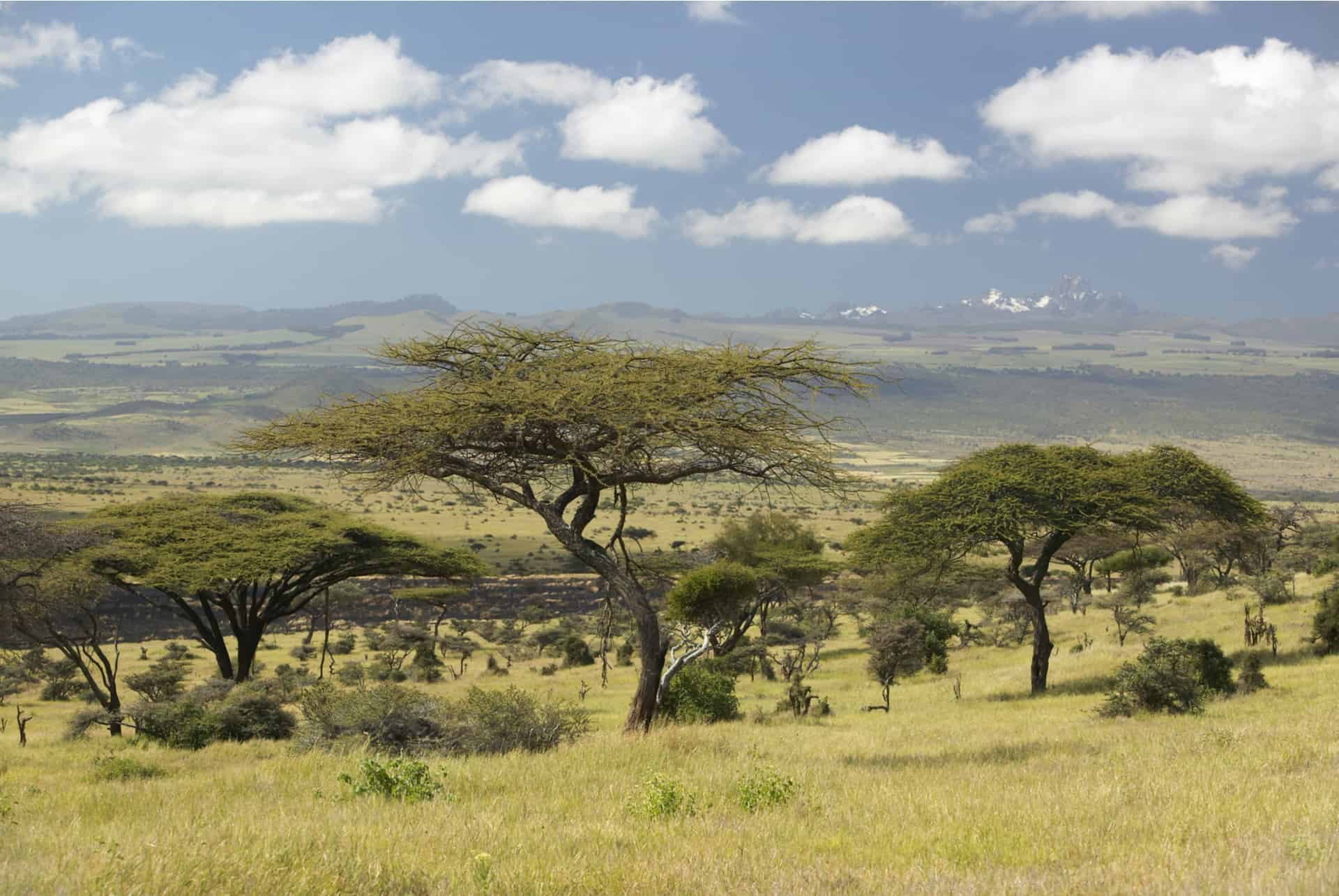
La Réserve privée Lewa Downs se trouve à 200 km de Nairobi. Ce n’était qu’un simple ranch au départ, mais cette propriété, créée par la famille Craig , est devenue un vrai sanctuaire pour les animaux (The Lewa Wildlife Concervancy). Et depuis 1922, elle passe de génération en génération.
Dans cette petite réserve de 242 km² située à 2 000 mètres d’altitude, avec des forêts de cèdres et des plaines, vous pourrez observer des rhinocéros blancs et noirs, des lions, des éléphants, des chacals ainsi que des zèbres et des girafes.
Si vous avez envie de vivre un safari au Kenya plus intimiste et luxueux, c’est dans cette réserve que vous devez absolument aller ! Pour plus d'informations et pour réserver, rendez vous sur le site officiel 🙂
10 - La Réserve Nationale de Shimba Hills
La Réserve Nationale de Shimba Hills se trouve à 33 km de Mombasa , sur la côte de l’océan Indien. C'est l'endroit parfait pour démarrer un safari si vous ne savez pas que faire à Mombasa .
C'est un petit safari de luxe de 2h30 environ (200 km²) qui vous permettra quand même de voir les principaux animaux sauvages du Kenya : des éléphants, des antilopes, des buffles et plus...
Si vous avez envie de faire un safari tout en voulant faire une bonne action, cette réserve est faite pour vous. Votre safari vous permettra de contribuer à la sauvegarde et à la protection du parc géré par la Kenya Wildlife Reserve .
- Adulte : 25 $
- Enfant (moins de 18 ans) : 15 $
Quand partir au Kenya ?
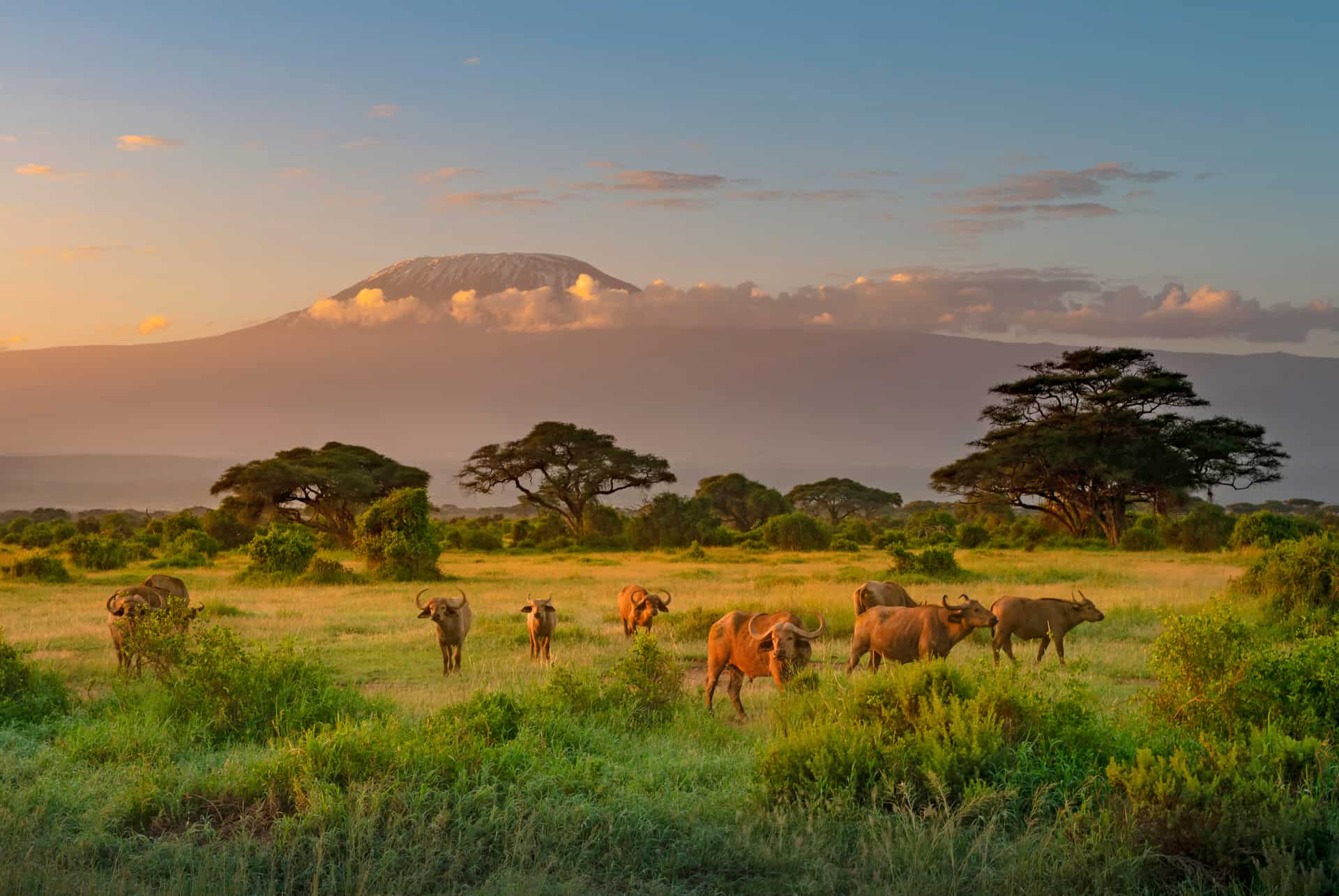
Vous pouvez faire un safari au Kenya tout au long de l’année, car peu importe la saison, les températures sont agréables (30 °C en moyenne) et les animaux se feront voir.
Néanmoins, la période qui va de juin à novembre est l'une des meilleures. Pourquoi ? Car il s'agit d'un juste milieu entre la saison des pluies un peu avant et l'été sec juste après. Cette période vous fera profiter d’un temps moins sec et moins chaud, d’une végétation bien plus verte et moins haute où les animaux ne pourront pas se cacher. C’est aussi une période de forte migration chez de nombreux animaux (notamment celle des gnous).
Vous pouvez bien sûr partir faire un safari pendant la saison des pluies et c’est bien moins cher , mais attendez-vous à des sols gorgés en eau et donc à des déplacements beaucoup plus difficiles. Surtout si vous avez décidé de faire un safari avec un véhicule de location !
Notez que cette période est l'une des plus fréquentées par les touristes, vous ne serez donc pas seuls sur place ! Mais pour en apprendre davantage sur la meilleure période, je vous recommande mon article quand partir au Kenya 😉
Les formalités administratives
Pour partir faire un safari au Kenya , il vous faut obligatoirement un visa de tourisme . Vous pouvez en faire une demande auprès de l’ambassade du pays, auprès d’une agence spécialisée ou de votre agence de voyage. Quoiqu'il en soit, prenez-vous au plus tard 2 semaines avant votre départ, le plus tôt sera le mieux.
Pour ces démarches, vous aurez besoin d’un passeport en cours de validité (+ 6 mois après la date de retour) avec au moins une page vierge , votre billet aller-retour pour le Kenya , vos réservations sur place ainsi qu'une photo d’identité .
Bien sûr vous pouvez effectuer cette démarche en ligne et bénéficier d'un visa électronique (E-Visa) , il vous suffit de remplir le formulaire sur le site (renseignements personnels, cordonnées, date et durée du séjour...), d’effectuer votre paiement (par CB) puis de télécharger, votre E-Visa au format PDF .
Vous obtiendrez votre visa en quelques jours. Il est valable 90 jours et coûte 40 € par personne, sans compter les suppléments si vous passez par une agence ou si vous le demandez sur internet (entre 50 et 80 euros en moyenne).
Attention, ne vous y prenez pas non plus trop tôt car le visa de tourisme n'est valable que 90 jours, soit 3 mois. Si votre séjour dure 2 semaines, je vous conseille de vous y prendre 1 mois à l'avance 😉
Faut-il des vaccins pour aller au Kenya ?
Avant votre départ, je vous conseille quand même d'aller consulter votre médecin traitant. Il regardera si vos vaccinations sont à jour et vous recommandera sûrement d'autres vaccins dont celui de l’ hépatite A (1 injection 15 jours avant le départ) et de la fièvre jaune (au minimum 10 jours avant le départ).
ll vous conseillera peut-être également de prendre des traitements préventifs contre le paludisme et vous donnera des conseils contre les piqûres de moustiques. Je ne préfère pas m'engager sur ce point, chaque médecin fonctionne différemment et je ne suis pas médecin ! 🙂
Faut-il une assurance voyage pour voyager au Kenya ?
Bien plus complète que l’assurance comprise avec votre carte bancaire, je vous conseille de choisir une assurance voyage . Celle-ci vous permettra de partir sereinement au Kenya. En effet, elle vous permettra d’être mieux couvert en cas de pépins au cours de votre voyage : blessures, hospitalisation sur place, rapatriement.
Ne passez pas outre d’autant plus que vous pouvez en choisir une pour quelques dizaines d’euros seulement ! Ce n’est vraiment pas cher payé pour voir ses frais médicaux remboursés et profiter d'autres garanties comme la responsabilité civile ou l’assurance bagages !
Si vous ne savez pas laquelle choisir, vous pourrez faire un choix facilement après avoir lu mon comparatif des assurances voyages .
Que mettre dans vos bagages ?
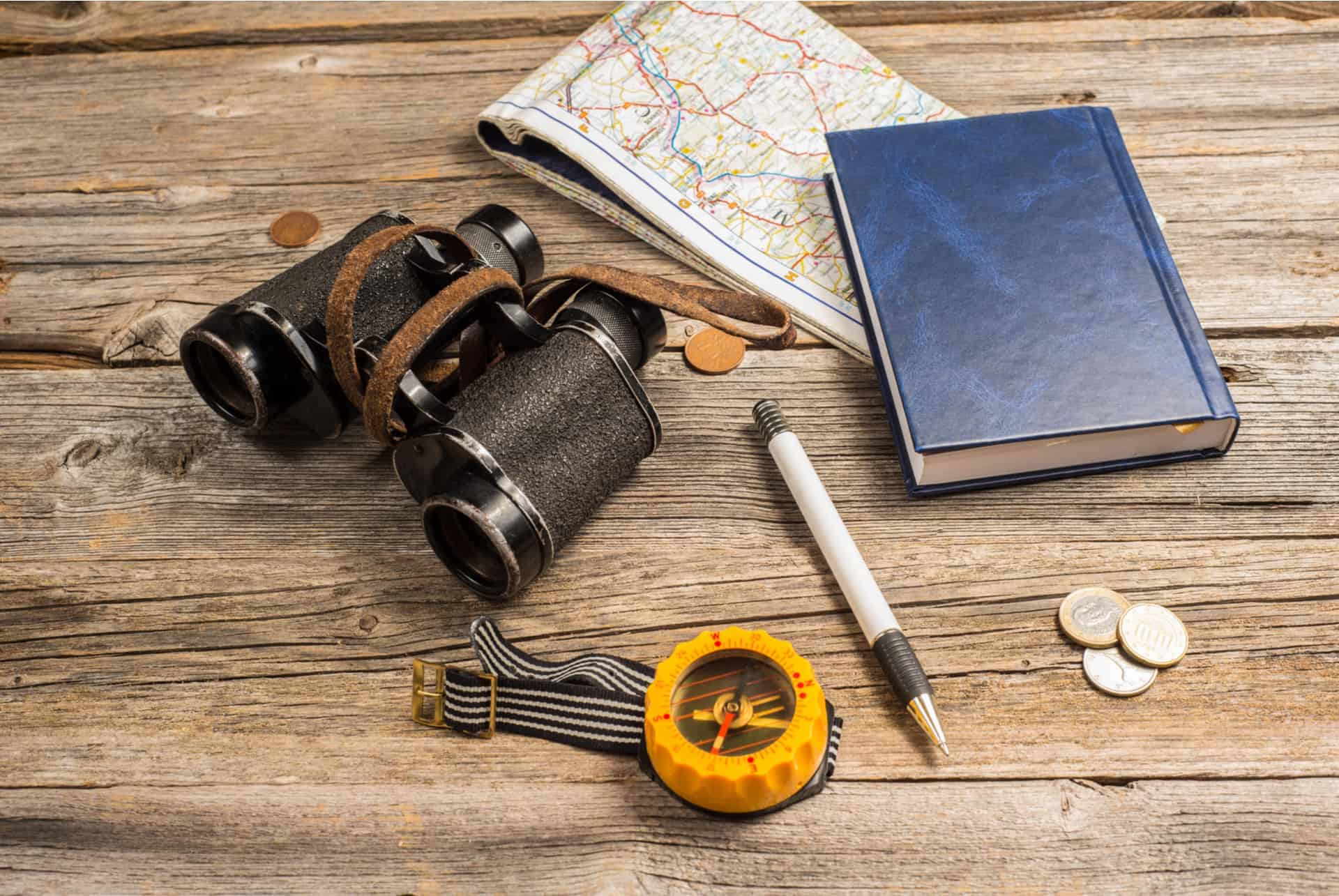
Comme je l’ai dit, il fait bon toute l’année, vous n'aurez donc pas besoin de vêtements d'hiver. Une petite laine suffira pour les randonnées du matin et du soir. Par contre, prévoyez des vêtements simples et confortables . Évitez les couleurs vives (même le blanc et le noir) et privilégiez les tons neutres qui se fondent dans la nature (comme le kaki ). Optez de préférence pour des manches longues et des pantalons à la place des shorts, car vous devrez souvent marcher dans la broussaille. Un foulard peut aussi vous être bien utile contre la poussière.
Pour éviter les coups de soleil, emportez avec vous un chapeau / une casquette et des lunettes de soleil . Pensez aussi à la crème solaire et à l’après-soleil. Un baume à lèvres et une crème pour hydrater votre peau en fin de journée ne seront pas de trop !
Pensez au répulsif pour les moustiques , notamment si vous avez opté pour un hébergement en campement. La nuit, une moustiquaire peut être d’une grande utilité. Tout comme une bonne lampe frontale !
Santé et hygiène
Mettez dans vos bagages une trousse de premiers soins comprenant des médicaments pour les maux de tête, des sparadraps, des onguents/pommades et des antibiotiques pour les maladies dites du globe-trotteur (votre médecin vous en parlera). Emportez aussi avec vous un savon pour laver vos vêtements et des lingettes humides pour vous rafraîchir.
Équipement photo/vidéo
Prenez un appareil qui vous permettra de bien prendre en photo ou vidéo les animaux lorsqu’ils sont loin (avec un téléobjectif permettant de zoomer) et lorsque la luminosité n’est pas très bonne (tôt le matin et en fin de journée). Une paire de jumelles ne sera pas de trop non plus !
Pensez à prendre une batterie de secours pour vos appareils et un adaptateur . Vous n’aurez pas forcément tout le temps accès à l’électricité (les générateurs ne fonctionnent pas 24 heures sur 24 dans les campements) N'oubliez pas non plus des cartes mémoires supplémentaires .
Vous pouvez acheter un petit trépied pour stabiliser votre appareil quand vous le pourrez (les 4x4 ont parfois des trappes sur le toit qui vous permettront de prendre de bonnes photos).
Et pourquoi ne pas prendre avec vous un guide sur la faune et la flore présentes sur place ? Cela vous permettra de mettre un nom sur ce que vous verrez ! Certaines agences de voyage vous en fournissent un.
Consignes et astuces pour voir les animaux lors d'un safari au Kenya
- Vous ne pourrez pas voir toutes les espèces animales dans un seul et même parc. Donc pour augmenter vos chances, visitez-en plusieurs !
- Vous verrez les animaux en bord de piste, sur la route où ils seront cachés dans la savane. Ne faites surtout pas de hors-piste !
- Les animaux que vous allez voir sont sauvages : gardez une distance de sécurité avec eux.
- N'attirez pas leur attention, ne les nourrissez pas !
- Attention, même si les attaques sont rares : ne descendez jamais de votre véhicule sans l’accord du guide ! Et préférez les safaris accompagnés par un ranger armé.
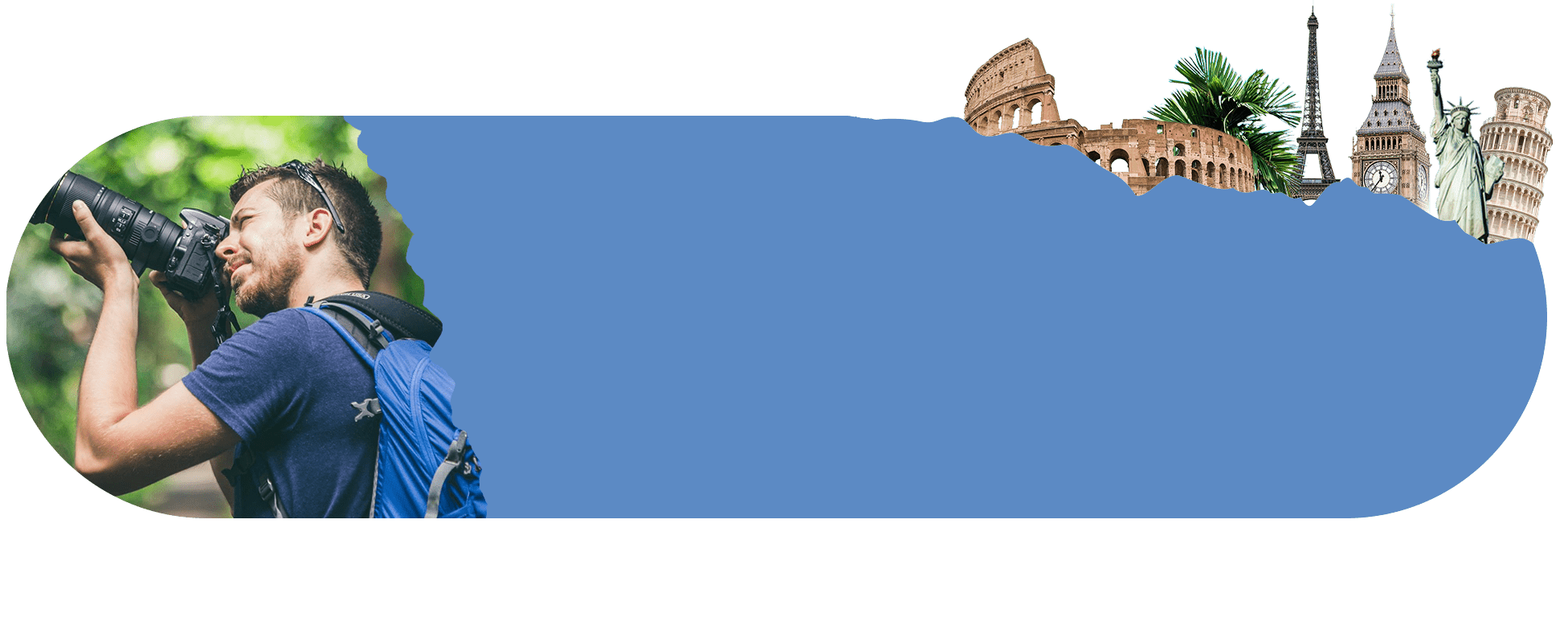
Les voyages ? Une passion ! Depuis 2013 (déjà !) je partage mes aventures sur ce blog voyage et je vous donne des conseils pour préparer vos prochaines escapades en Europe et un peu partout dans le monde !
Où partir en Juillet au soleil ? Nos conseils
Les derniers articles
Mexique en août
Où dormir à la Spezia ?
Brussels Card
D’autres articles qui pourraient vous intéresser
Que faire au Kenya ?
Que faire à mombasa , 0 commentaires, soumettre un commentaire.
Votre adresse e-mail ne sera pas publiée. Les champs obligatoires sont indiqués avec *
Commentaire *
Enregistrer mon nom, mon e-mail et mon site dans le navigateur pour mon prochain commentaire.
Soumettre le commentaire
Nos conseils et bons plans
Inscrivez-vous et recevez chaque mois nos conseils et bons plans pour inspirer vos prochaines aventures !
- Kenya Tours
- Kenya Travel Guide
- When to Visit Kenya
Kenya in November: Shoulder Season Weather and Travel Tips

- ~ mins read
Kenya bids farewell to the dry winter season in November. As the country transitions into summer, sporadic rainfall is common during this time of year. But holidaymakers can take heart, for rain showers usually occur in the afternoon or evening, which means that morning safaris and tours are rarely affected. Plus, the country is brimming with adventures of all kinds this month.
Visiting Kenya in November is also a good idea for those travelers who wish to avoid large tourist crowds. The month falls in the shoulder season, so there are fewer visitors to the country. Besides relatively crowd-free attractions, travelers can also find good deals on flights and accommodations during this month. Take this opportunity to spot the Big Five during an African safari experience in Maasai Mara National Reserve , or swim among the marine life in the Indian Ocean.
- Mark Bromley
- Kyle Isacson
- Teddy Maina
Kenya Weather in November

Kenya is an equatorial country and sports only two seasons: wet and dry. November marks the start of the wet season. So expect overcast skies and torrential thundershowers, particularly during afternoons and evenings. It is best to head towards the coastal areas of the country for relatively drier and warmer conditions. Temperature-wise, Nairobi, the country’s capital, scores a daily high of 25ºC and a low of 14ºC. In Mombasa, on the Kenyan coast, day temperatures could hit 30ºC. The water temperature in the Indian Ocean off the country’s coast hovers at around 27°C during this month.
For a seasonal overview, check out our travel guide on the best time to visit Kenya .
Weather in Kenya in November - Rainfall and Temperatures
Why visit kenya in november.

As November falls in the shoulder season of the tourism calendar, this is the perfect month for budget travelers to explore Kenya . Below are some of the perks visitors can enjoy in Kenya in November.
- Better rates: Low tourist footfall means the travel and accommodation rates fall down during this time of year. Enjoy a luxury holiday at an affordable rate during your stay in the country in November.
- Fewer crowds: Experience the rare pleasure of relatively crowd-free safaris and sightseeing tours while you are in Kenya in November and take in the country’s top wilderness destinations at your own pace.
- Diving season: With lower waves and optimal visibility, November is a great month to see marine life in the Indian Ocean. This is the best chance to spot whale sharks and manta rays.
- Enjoy safari and bird-watching: Rains not only make the vegetation lush but also settle the ambient dust, improving visibility and your chance of spotting wildlife during safaris. Besides being one of the best times for safari tours, November is also perfect for bird-watching.
- Mombasa Carnival: Visit Mombasa to dance to the traditional tunes of Africa and revel in the colorful parade that takes place during the carnival.
Where to go and what to do

Kenya tops the list when it comes to wildlife safaris. Pick any national park or wildlife reserve in the country and you are sure to be stunned by the sheer variety of animals. Enjoy a crowd-free game drive in Maasai Mara and spot a variety of creatures like giraffes, elephants, and big cats. Go for a guided bush walk or book a hot air balloon safari over the Masai Mara plains. You can also head to Amboseli to see elephants and other wild animals grazing in the grasslands with Mount Kilimanjaro looming in the background.
Make sure that you add Lake Nakuru to your itinerary if you wish to see pink flamingos. For maritime fun, Watamu Marine Reserve and Kisite are great destinations. Here you can spot whale sharks, humpback whales, manta rays, and many other exotic marine life.
What to Bring

Pack judiciously before catching your flight and you should be sorted. If your itinerary includes destinations in higher altitudes and early morning game drives, you will need warm clothes. Rainproof gear will come in handy if you encounter sudden showers. If you are visiting coastal areas, a light, airy garment and a rain jacket will suffice. Make sure that you also carry mosquito repellent and sunscreen with you.
The weather in Kenya in November is extremely tricky. But with proper planning, you can have a memorable holiday experience. This is the time when the country is less crowded, so take this opportunity to get to know its highlights more intimately. Travel and hotel rates are also relatively cheaper during this time of year, allowing you to pack more tours and holiday activities in your itinerary.
Not sure how many days to spend in Kenya? Plan a customized trip to Kenya with the support of our local travel specialists for an itinerary that best suits your requirements. For more information, check out our tours to Kenya in November .
Related Articles
Related categories.
- How Long To Stay In Kenya
- Kenya Travel Advice
- Kenya Wildlife
- What To Do In Kenya
- When To Visit Kenya
- Where To Go In Kenya
- Previous Post

Popular Destinations
- Europe Tours
- Everest Base Camp Trek
- Italy Tours
- Spain Tours
- Argentina Tours
- Canada Tours
- Sri Lanka Tours
- Chile Tours
- Antarctica Tours
We use cookies to analyze traffic and give you personalized content and ads. It's an essential part of giving you a great site experience. Click on the 'Accept' button if you agree with our use of tracking and analytical cookies. Please refer to our Cookie Policy for more information.

- Kenya safaris
Kenya safari guide – where & when to go, and what to see
Kenya safaris rock! Kenya is one of East Africa’s premier safari destinations, with massive open savannah regions hosting a huge breadth and depth of African wildlife. Over 10% of the country is protected in some form or other, and national parks in Kenya rate as some of the best in the world. A safari in Kenya almost guarantees you a sighting of the big five African animals of lion , buffalo , elephant , rhino , and leopard . Alongside these big-hitters are hundreds of other species of African animals, and some of the world’s most diverse bird-life.
Straddling the equator, Kenya is dominated by the Rift Valley – a huge range of valleys strung along a 5,000 km crack in the earth’s crust that runs through East Africa. Within the Rift Valley are Africa’s highest peaks – in Kenya these are the volcanoes of Mount Kenya and Mount Elgon. East of the Rift Valley are the coastal plains, whilst the north of Kenya is made up of arid wastelands. The prime Kenya safari destinations are the Central Highlands and areas within the Rift Valley. The south of the country hosts the great migration of plains animals and their predators each year between June and November. In short, Kenya safaris are up there with the very best in terms of wildlife and scenery.
Self-drive safaris are an option in many national parks in Kenya, though to enjoy full access to the most remote (and tourist-free) areas you’ll need a 4WD car or jeep. If you fancy taking a tour or arranging your own guide and/or driver have a look at our list of safari tour companies in Kenya before arrival in the country.
Alongside safaris and wildlife spotting, a visit to Kenya allows you to easily extend your safari with a visit to a resort on the Indian Ocean coast, or with activities such as trekking, hiking, sailing or diving .
Useful resources
- Book a Kenya Safari
- Kenyan Ministry of Tourism
- Kenya Wildlife Service
Kenya safari highlights
Experience maasai culture.
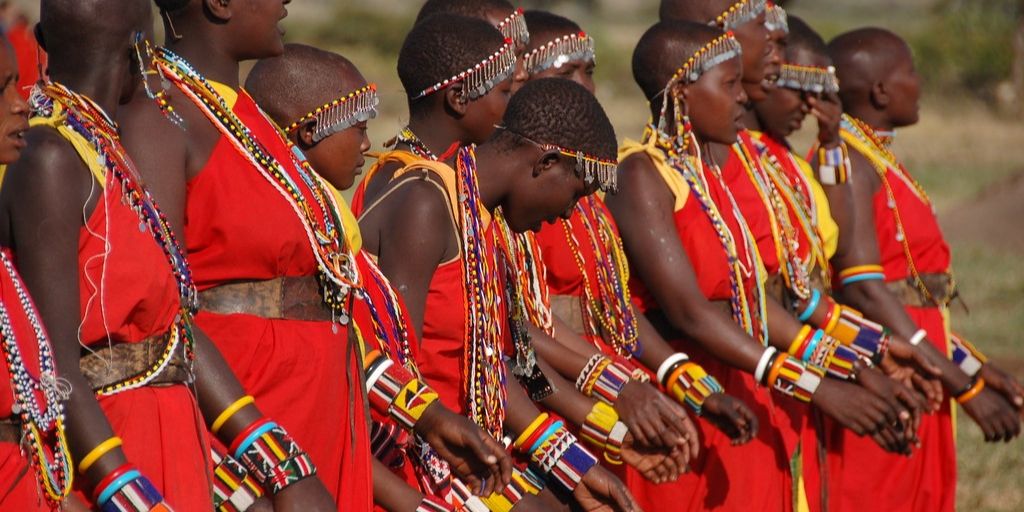
The Maasai are one of the few African tribes who have retained most of their traditions, lifestyle, and lore – along with their distinctive red robes. Many safari lodges and operators work with local Maasai on community projects. Experiencing some time in a Maasai village whilst in Kenya is a unique cultural experience that will help put your visit in context.
Big five spotting

Big five spotting in Kenya is high on most visitor’s safari checklist, and with Kenya’s superb network of national park gems seeing Africa’s biggest beasts up close and personal is a realistic goal. Destinations rich in lion, leopard, elephant, rhino, and buffalo are clustered in the south of the country, particularly Amboseli, Masai Mara and East and West Tsavo (for the Tsavo lions !) national parks.
Watch the ‘Great Wildebeest Migration’

Indian ocean beach perfection

Best time to safari in Kenya
The peak tourist season in Kenya is January and February when the weather is consistently warm and dry, with wildlife easy to spot in large concentrations. If you take a Kenya safari in peak season expect to be in company with crowds of tourists, and paying top dollar for your safari. If you’re specifically after catching sight of the annual great migration, June to October is the time to head to the Masai Mara National Park in southern Kenya.
The long rains hit Kenya through March, April and May, and the short rains from October to December. During the short rains, it generally rains only for short periods at a time, meaning your wildlife viewing will not be too disrupted. This is the time you can get some great deals on safari tours, or safari lodges if you’re travelling independently.
Flights To Kenya
Search, track and book flights to Kenya, from anywhere in the world.
Kenya Accommodation
Find safari accommodation in Kenya – from budget campsites to luxury lodges.
Kenya Car Hire
Considering a self-drive safari? Research and book car hire in Kenya.
Activities in Kenya
Search and book things to do in Kenya – tours, excursions and activities.
National parks in Kenya
With a stunning array of wildlife and more than 10% of the country given over to national parks and reserves, Kenya is undoubtedly one of the world’s best safari destinations. Whilst the world-famous Kenyan national parks such as Masai Mara and Amboseli National Parks can be uncomfortably heaving with tourists in January and February, Kenya has plenty of smaller, out of the way national parks that see only a trickle of visitors year-round. As such it’s well worth taking the time to consider whereabouts in Kenya to go on safari if you’re visiting during peak season.
Top Kenya national park picks
Masai mara national reserve.
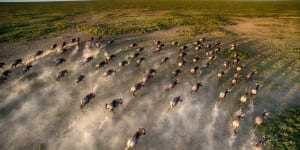
Situated in southwest Kenya, the Masai Mara is part of the northern section of the Serengeti National Park, and is generally recognised as one of the greatest wildlife reserves in Africa. The reserve is famous for the abundance of predators – particularly big cats – and the great wildebeest migration to feed these predators, as well as the Maasai people themselves.
- Lake Nakuru National Park
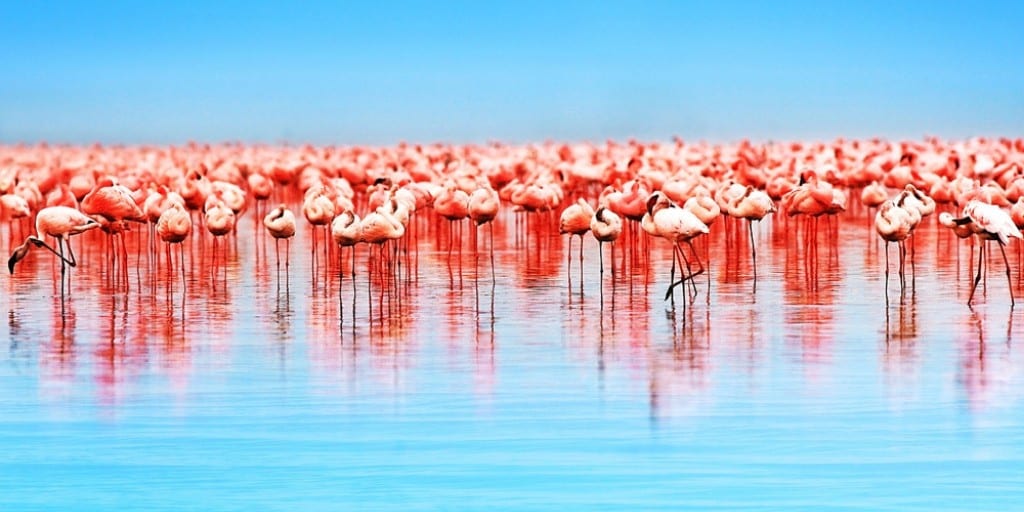
The stunning Lake Nakuru National Park is on the floor of the Great Rift Valley, surrounded by bushy grasslands and woods. There are 56 species of mammal in the park, but the star show are the thousands of flamingos, arriving in their millions some years.
- Amboseli National Park

Crowned by Africa’s highest peak, Mount Kilimanjaro, Amboseli is one of Kenya’s most popular parks . The name ‘Amboseli’ comes from the Maasai language and means ‘salty dust’… perfect for the large herds of elephants that roam the park.
- Meru National Park
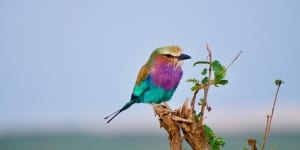
Meru National Park is a Kenyan park is located 350 km from Nairobi, featuring multiple landscapes including grasslands, swamp, jungle and rivers. It’s a birders paradise with over 427 recorded bird species, in addition to the big five .
All national parks in Kenya
Use the map below to locate all national parks in Kenya. Click the icons for more info.
Get Directions
- Aberdare National Park
- Arabuk Sokoke National Park
- Hell’s Gate National Park
- Kakamega National Park
- Lake Bogaria National Park
- Malindi Watumu National Park
- Masai Mara National Park
- Mount Elgon National Park
- Mount Kenya National Park
- Nairobi National Park
- Saiwa Swamp National Park
- Shimba Hills National Park
- Tsavo National Park
Kenya safari resources
Kenya safari companies.

There are plenty of companies offering safari tours around Kenya. The focus is on the high end, but there are some companies that specialize in mid and budget safaris. Check out our reviews of safari tour companies in Kenya .
Kenya safari lodges
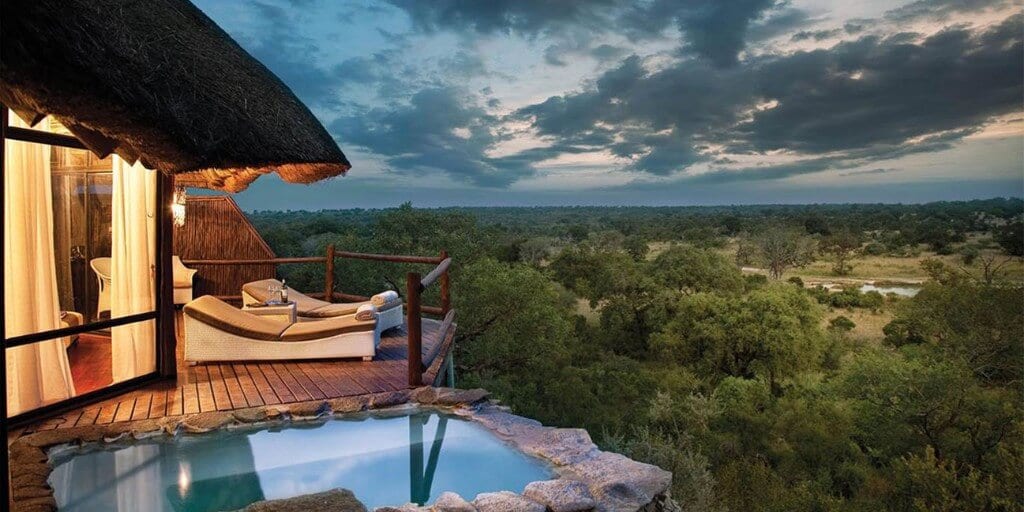
As a tourism-focussed country, Kenya has plenty of choice when it comes to safari accommodation. Lodge standards vary from rustic to modern, from the simple room to extreme luxury with en-suite private plunge pool. Search and book accommodation in Kenya .
For a trip to Kenya, travellers are required to apply for a visa. The easiest, most commonly used visa for going on a safari in Kenya, is the Kenya e-visa . It is valid for 90 days, and can even be extended once to 180 days once you arrive in Kenya. The visa can easily be applied for online and will save you the hassle of having to apply at an embassy or consulate.
Read safari guides to all countries
Botswana safaris , Namibia safaris , Rwanda safaris , South Africa safaris , Tanzania safaris , Uganda safaris , Zimbabwe safaris
Do you have any experience of planning or going on safari in Kenya?
We’d love to hear any feedback or tips you may have – please get in touch , or add to the comments below.
Top countries for safaris
- Botswana safaris
- Namibia safaris
- South Africa safaris
- Tanzania safaris
- Uganda safaris
Safari basics
- Safari animals
- How to find the right safari company
- When to go on safari
- What to take on safari
- Safari clothing – what to wear
- Safari rules & etiquette
- Wildlife spotting tips
Most read articles
- All about the ‘big five’ animals
- Collective nouns for animals
- Safari movies to watch before you go
- The world’s fastest land animals
- Apex predators
- 10 Fascinating African tribes
- The biggest animals in the world
- 17 Epic hybrid animals
- The world’s ugliest animals
- Why are flamingos pink?
Africa’s best game reserves
- Chobe National Park, Botswana
- Etosha National Park, Namibia
- Kruger National Park, South Africa
- Masai Mara National Reserve, Kenya
- Moremi Game Reserve, Botswana
- Okavango Delta, Botswana
- Serengeti National Park, Tanzania
Session expired
Please log in again. The login page will open in a new tab. After logging in you can close it and return to this page.
Kenya Safari | Luxury, Lodges and Tours
Kenya safaris consistently rank in the top 3 destinations for safari-goers in Africa and it’s easy to see why. Home to prime game viewing, the incredible Masai Mara savannah, luxury lodges, stunning beaches and the famous Mount Kenya, this east Africa wonder packs a powerful punch.
Nearly 1.5 times the size of California at 224,000 sq miles, this incredible land neighbours five countries including Sudan, Tanzania, Uganda and with Somalia and Ethiopia to Kenya’s east and north.
The best time to visit Kenya is from July to September, during the country’s dry season, which also coincides with the Great Migration of wildebeest and zebra. The rainy seasons are also good times to travel, as there are fewer visitors and you can admire the striking emerald vegetation.
Table of Contents
Why Kenya for a safari
Kenya is renowned as a premium destination for big 5 wildlife viewing, luxury lodges, Masai Mara safari tours , Amboseli National Reserve and incredible Kenya beaches have international visitors flocking from the U.S, U.K, Europe and beyond.
Famous not just for its incredible wildlife at Tsavo National Park, Kenya is also surrounded by calderas and mountain ranges with the Great Rift Valley dividing the country.
To the east of this sweeping valley, you can climb the snow-cloaked equatorial peaks of Mount Kenya and fish for trout in crystal-clear streams.
Hell’s Gate National Park harbours obsidian caves and hisses with natural geysers and hot springs. To experience the romance of Kenya’s colourful colonial history captured in the film Out of Africa, head to Nairobi.
This bustling capital is the gateway to one of the world’s most evocative and exciting travel destinations. Discover more places to visit in this fascinating country with our list of the top tourist attractions in Kenya.
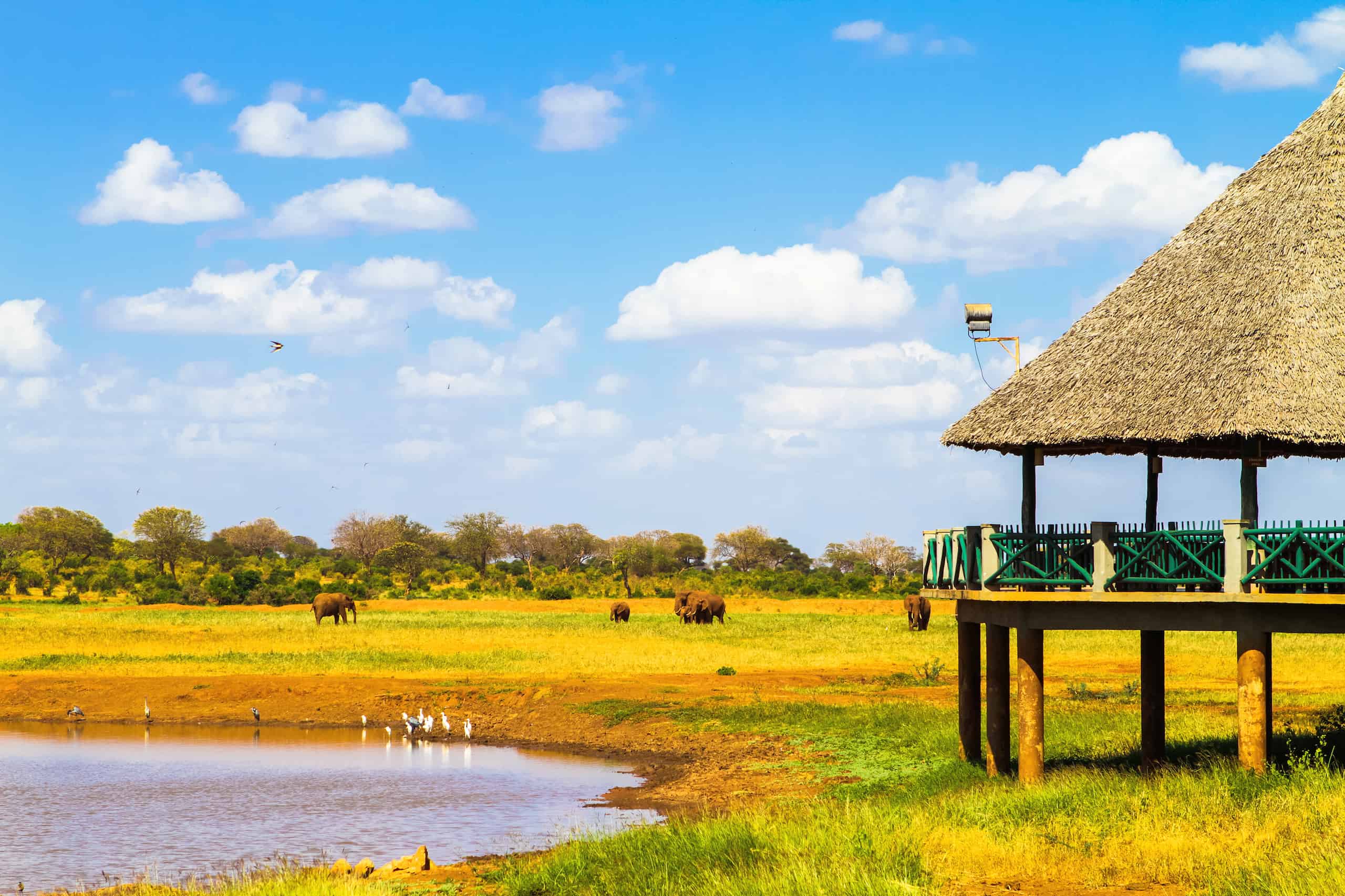
Top attractions visitors can expect from a Kenya safari include:
Kenya is a country of incredible bio-diversity, and one of the world’s most exciting wildlife destinations. Famous for its wildlife, visitors will find Wildebeest, Diceros, Impalas, Dik-diks, Impalas, giraffes, hyenas, African wild dogs and many more.
All Big 5 game animals can be found roaming including the African bush elephant, the lion, black rhino and white rhino, leopard and the African buffalo. Endlessly intelligent and iconic, African elephants continue to capture the hearts of travellers to Kenya.
In addition to watching the largest land mammals roam the savannah, you can opt to visit the David Sheldrick Elephant Orphanage where they care for young elephants and rhinos before releasing them back to the wild.
Kenya is also a birdwatcher`s paradise, teeming with birdlife, with diverse habitats in spectacular scenery. Over 1100 bird species have been recorded in the country, and it is possible to see well over a half of these without undue effort on a safari tour.
Best Parks & Reserves
Kenya has numerous parks, reserves and sanctuaries, all of which have their own charm, accommodation and wildlife attractions.
With 24 national parks, 15 national reserves, 6 marine parks, and private conservancies on top of that, the choice can be overwhelming when it comes to visiting Kenya’s national parks.
Of particular note amongst all of the incredible parks, Maasai Mara is widely regarded as being one of the best safaris in Kenya as well as Amboseli National Reserve and Tsavo National Park.
- Masai Mara National Reserve — Kenya’s most famous park, known for having some of the highest concentrations of the big five in Africa, but it also witnesses the phenomenal Great Migration. Sharing a border with Serengeti National Park in Tanzania, Masai Mara safaris receive a massive seasonal wildebeest migration.
- Amboseli National Park — Due to its proximity to Nairobi and the abundant wildlife, Amboseli is the second most famous national park in Kenya after Masaai Mara. The landscape ranging from semi-arid dry lake beds to wet swamps attracted a wide variety of animals. The highlight of the park are the elephant herds population, featured in many documentaries. The park connects tourists with the local Maasai people, whose villages you can visit via guided tours.
- Tsavo East National Park — Occupying almost 8,700 square miles, Tsavo East is one of the largest national parks in Kenya in a semi-arid climate zone with big numbers of Tsavo Lions without any manes.
- Tsavo West National Park – Covering an area of 3,500 square miles, Tsavo West National Park is more mountainous and wetter than its Tsavo East park counterpart with swamps, Lake Jipe and the Mzima Springs.
- Aberdare National Park — Cool and cloudy Rift Valley park with lots of large game, and over 250 species of bird recorded.
- Hell’s Gate National Park – A small National Park close to Nairobi, which allows you to get out of the car and offers some nice opportunities for rock climbing and some game
- Lake Nakuru National Park — A stunning 400 species of bird have been recorded here including the largest flocks of Flamingos anywhere on earth
- Lake Elementaita — One of the smaller lakes in the Great Rift Valley recently declared a UNESCO world heritage site. scenic and rich in bird life.
- Nairobi National Park — Located in Nairobi and a great option to see large game for those on a tight schedule.
- Meru National Park – a wide range of wild beasts like elephant, hippopotamus, lion, leopard, cheetah, black rhinoceros and some rare antelopes.
- Sibiloi National Park – listed as a UNESCO World Heritage Site as a part of Lake Turkana National Parks.
- Mount Elgon National Park – Home to over 300 species of birds, including the endangered Lammergeyer. The higher slopes are protected by national parks in Uganda and Kenya, creating an extensive trans-boundary conservation area which has been declared a UNESCO Man & Biosphere Reserve.
- Lake Naivasha National Park The crater rim here provides great scenic views across the beautiful Rift Valley all the way to Lake Naivasha with big cats and major wildlife at Mount Longonot including buffaloes, elands, lion, leopard, bushbucks, common zebra, giraffes and Grant’s gazelles.
Other parks popular with visitors include the unique Saiwa Swamp NP and mesmerising Mwaluganje Elephant Sanctuary .
Safari tours
A safari tour package in Kenya is typically organized by a tour operator, safari tour company or via a self drive Africa safari trip.
Spread across the country including safaris and beach holidays to neighbouring Zanzibar, or indeed the stunning Seychelles , Kenya’s parks and reserves can take several hours/flight to one another.
It is therefore important to take many elements into account when visitors plan their Kenya tour including:
- Which animals you would like to see
- Budget for the trip
- Travel party (solo, with friends or a larger family group)
- Activities revolving around the best things to do in Kenya including the national parks, Kenya hot air balloon safaris and walking safaris
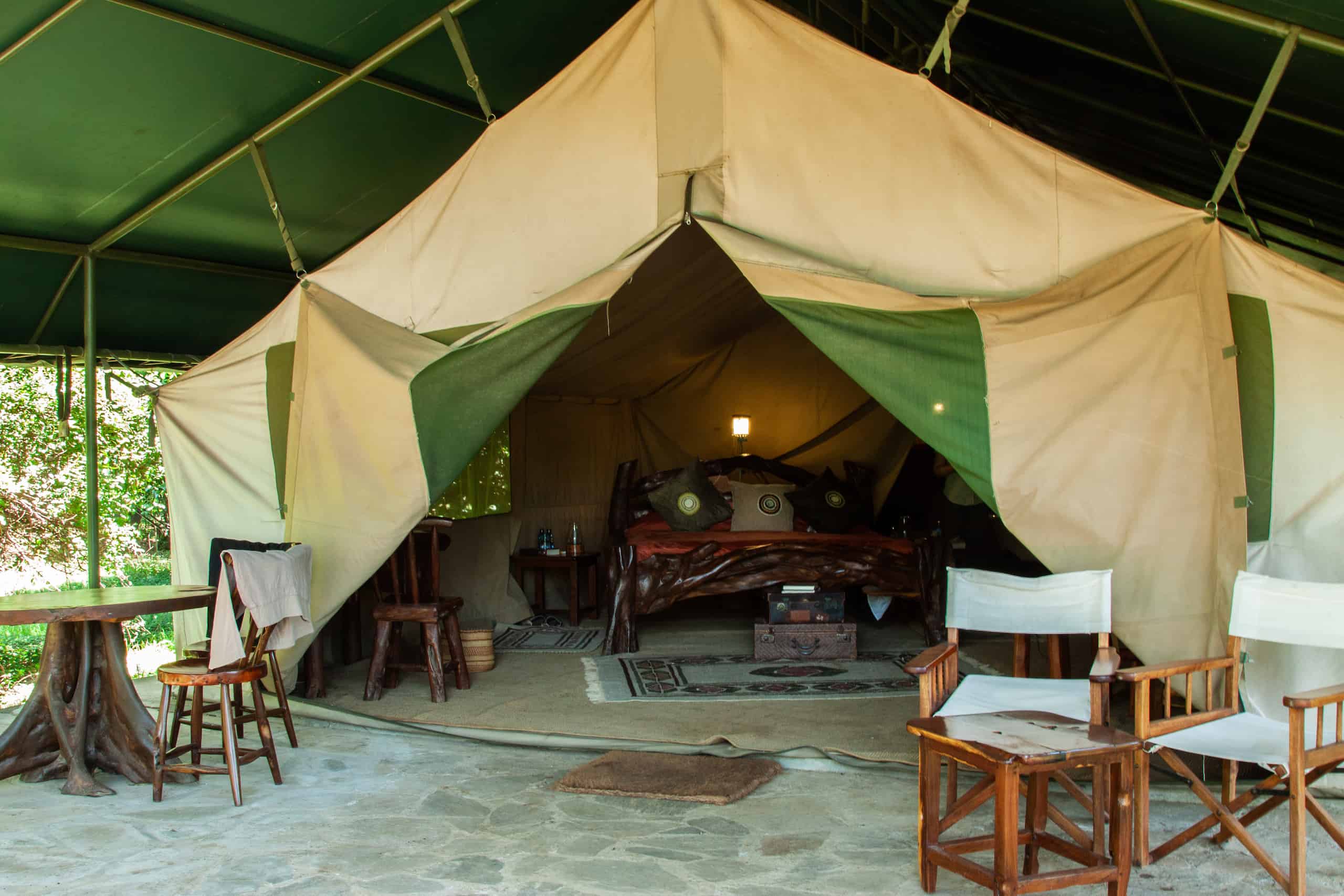
Guided tour
A guided safari package brings the benefit of:
- Transfer via plane/4×4 to the safari camps and lodges
- Luxury lodge packages
- Meals/drinks all catered for
- Safari guides and transport
- Facilities prepared including showers, wifi, cocktails and all requests
- Combined trips to neighbouring Tanzania and beach trips
- Tailored trips including chimp trekking tours
Self drive safari
For self-drive African safaris, visitors can hire their own 4×4, whilst accommodation can be secured in park campsites or in the vehicle itself if a campervan option is selected.
Part of the fun of a self drive safari is spotting the abundant wildlife on your own and taking the time to spend viewing your favourite animals.
A normal 2 wheel drive car may be sufficient, and of course cheaper, for some parks however other parks have deeper sand and a 4*4 will be required.
Best time to go to Kenya
Kenya is a beautiful country to visit, regardless of the season and popular with visitors from the U.S, Europe and South Africa.
Certain periods are more favorable for a safari in the best conditions. To know the best time to travel to Kenya , visitors should take into consideration the following key criteria:
- Regions visited
- Weather conditions
Overall, July to September is the best time to visit Kenya during the country’s dry season, which also coincides with the Great Migration of wildebeest and zebra.
Kenya safari cost
Kenya is a premier safari destination in Africa, thus incurring the more expensive costs associated with this.
There are multiple factors that can impact the Kenya safari prices including accommodation selected, trip duration, safari costs, tours, flights, transfers, meal options and additional activities visitors may request.
Travellers on a budget can reduce costs by booking their own flights, accommodation and activities as well as hiring a 4*4 to travel between the parks and reserves.
Organizing your safari
There are a number of different options available for organizing your safari in Kenya including:
Organizing your own safari is possible but only recommended for more experienced travelers and visitors on a strict budget. This option requires time and know-how to plan for all flights, transport, meals, accommodation and safari tours.
Without the knowledge of specific safari destinations and logistics in navigating an African country, this may be a challenging option for many travelers.
Tour operators
The biggest tour operators will offer safaris in Kenya where visitors can book a package that will cover their flight, transport, accommodation, activities and food, an ideal option for those with no previous safari experience in preparing for such a trip.
Safari travel agencies
Visitors will often find dedicated safari travel agencies to be the best option in booking their dream safari. These agencies have many years experience in booking safaris as well as multiple partnerships with local tourism networks and lodges/game reserves.
Travel agencies typically offer:
- Tailor-made tours
- Local tour guides
- Trips to must-see wildlife areas and parks
- All transportation
- High quality accommodation at reduced prices
The cost of the service of these specialized agencies can be a bit higher compared to other options, a cost worth bearing given the quality and ease of services provided.
Accommodation
Visitors typically will have the choice between lodges, chalets and campsites as well as African tent camps, suites and bedrooms.
Luxurious facilities are common including swimming pools, restaurants, bars, spas and terraces. Game viewings and plane transfers are organized by the accommodation providers.
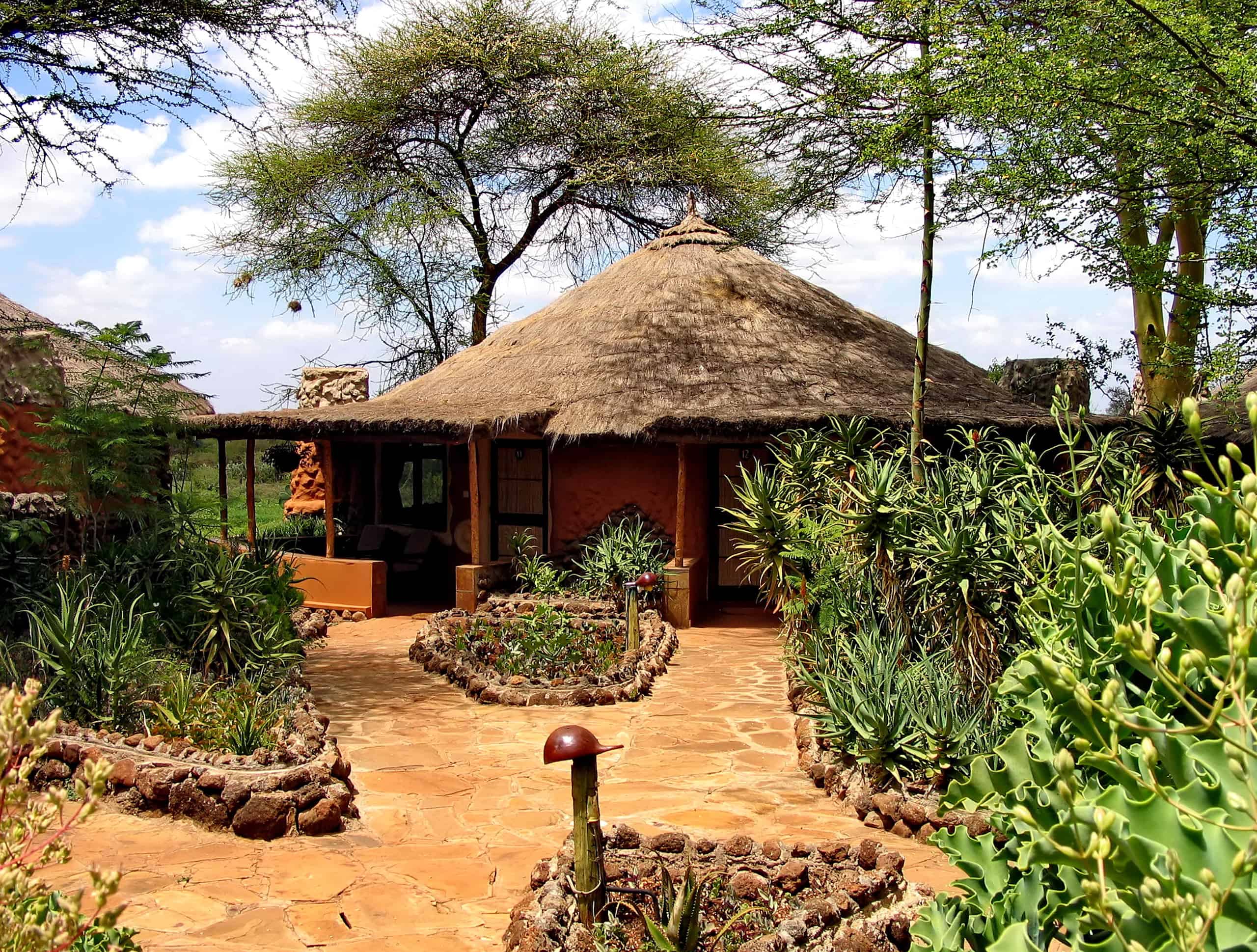
Trip preparation
International flights arrive via Jomo Kenyatta International Airport (NBO) for visitors wondering how to get to Kenya . Most tourists will have to obtain a Kenya visa including citizens of the U.S, U.K, EU, India and Canada.
Kenyan entry visas are exclusively issued electronically, with passengers required to obtain their e-visas before departure. Visitors can apply for single entry and transit visas on the e-visas website .
Visitors can expect to wait approximately 1 to 3 days for the visa to be approved and processed, and receive their Kenya eVisa in their inbox. Once approved, travellers are permitted a 90-day stay in Kenya.
Your passport should be valid for a minimum period of 6 months from the date of entry into Kenya. Make sure you have two blank pages in your passport on arrival.
The CDC and WHO recommend the following vaccinations for Kenya: Covid-19, Hepatitis A, hepatitis B, typhoid, rabies, meningitis, polio, measles, mumps and rubella (MMR), Tdap (tetanus, diphtheria and pertussis), chickenpox, shingles, pneumonia and influenza.
Yellow fever may be required if traveling from a yellow fever endemic country.
Malaria is prevalent in Kenya, particularly outside Nairobi. One of the highest risk areas is Mombasa which is where many travellers will find themselves at some time.
Malaria is transmitted by the bite of an infected mosquito and so the first line of defence is to protect yourself against mosquito bites. Malaria Prophylaxis may be prescribed to you during your consultation depending on your itinerary.
Check with a travel medicine specialist to see if antimalarials should be considered to help prevent malaria contraction. Visitors can find further information on Kenya vaccine details here .
At all ports of entry, visitors to Kenya who are above the age of 12 will be required to present documentation of either a COVID-19 vaccine or a negative COVID-19 PCR test performed no more than 72 hours prior to departure.
For further info on Kenya vaccine requirements , read our detailed and entry requirements.
What to pack
The essential items to pack for your Kenya safari include:
- Neutral coloured clothes
- Long-sleeved shirts protecting against the sun and mosquitoes
- Sunscreen, sunglasses, a hat and insect repellent
- Jackets and sweaters for early morning game drives
- Comfortable walking shoes
The currency of Kenya is the Kenya Shilling (KES). USD $1/GBP £0.75 = Approximately 114 KES.
Carrying a small amount of Kenyan currency , the Kenya Shilling (KES) is recommended to pay for groceries and smaller items where credit cards aren’t accepted.
Driving in Kenya
Driving is conducted on the left hand side of the road in Kenya and driving is generally considered to be safe.
Visitors driving through parks may require a 4×4, whilst carrying a map & GPS is recommended.
Visitors should consider travel insurance when planning their trip to help protect and cover the costs of hospitalization or repatriation if required.
Some credit cards may already include travel insurance. Online travel insurance comparators are also useful in finding suitable offers.
How much does a safari in Kenya cost?
Visitors can expect to pay between $800 to $1,100 per person per day.
When to go on a safari in Kenya?
Between July and September is the best time to go on a safari in Kenya, during the dry season.
- Central African Republic
- Democratic Republic Of Congo
- Indian Ocean
- Republic Of Congo
- South Africa
- Latin America
- Galapagos Islands
- North America
- Polar regions
- Arctic Canada
- Australasia
- Gorilla Tracking
- Grizzly Bears
- Polar Bears
- Puma Tracking
- Snow Leopards
- Blue Whales
- Bengal Tigers
- Siberian Tigers
- African Lions
- Spirit Bears
- Lowland Gorillas
- Experiences
- Jungle Holidays
- Bush and Beach Combinations
- Conservation Travel
- Natural World Heroes
- Work with Us
- Consumer Protection Overview
- Privacy Policy
- Press and Awards
- Client Reviews
- Expedition Leaders
- Specialist Leaders
- Expeditions for Change
- Journey to Natures Edge
- Country: Settings: Country:
- Currency: Currency:
- Call Us 01273 691642
- Destinations
- Gorilla Trekking
- EXPERIENCES
- Bush & Beach
- Small Group Safaris
- In the Press
- Journey to Nature's Edge
When to visit Kenya
The best time to visit Kenya is between June and October. Due to Kenya’s equatorial setting, the country enjoys year-round warm weather and relatively low annual rainfall. However, with a range of altitudes and the country’s two rainy seasons, it is possible you will experience some variation depending on when and where you visit. The temperatures vary greatly from Nairobi to Laikipia, and from Nakuru to the coastal regions.
Kenya's best time to see wildlife coincides with the dry months of June through October. During this time, there are fantastic possibilities to see the Great Migration, when millions of wildebeests and zebras travel over the savannah, in national parks like the Maasai Mara and Amboseli. The combination of this show with the open skies and lush surroundings creates an outstanding safari experience. Additionally, viewing the Big Five and a variety of other African species in their natural habitats is perfect during the dry season.

Talk to a Kenya Destination Specialist
The best time to visit kenya.
January is generally a warm and dry month in Kenya, with hot temperatures and low humidity. The weather is ideal for outdoor activities and wildlife viewing, making it a popular time to visit the country. The average temperature in Kenya during January is around 25°C (77°F), with average highs of 29°C (84°F) and lows of 21°C (70°F). In terms of rainfall, most parts of Kenya experience little to no rain in January, making it a great time to visit for those who want to enjoy the outdoors without being hampered by wet weather. However, some areas along the coast may experience occasional brief showers. January is a great time to go on safari in Kenya, as wildlife is abundant and easily visible in the dry, open plains. It's also a great time to visit Kenya's beaches and coastal areas, as the weather is sunny and warm, and the sea is calm. It's important to note that January is peak tourist season in Kenya, so prices for accommodations and tours may be higher, and popular destinations can be crowded. It's advisable to book in advance to secure preferred accommodations and activities.
June to October in Kenya
This long dry season coincides with the Great Migration of wildebeest and zebra, a great time to visit Kenya.
November to May in Kenya
Known as the low season, this period of rain brings about beautiful green scenery, ideal for wildlife photography. This can be one of our favourite times due to the quieter parks, the green back drop and plentiful game.
Experience Kenyan Culture
There are many cultural events throughout the year that ignite the whole country. Visitors are welcome to join in with festivities but should always observe religious and private gatherings from a respectful distance, unless otherwise invited of course! Of particular note, are the Mombasa Carnival in November and the Ramadan celebrations of May/June.
Experience the Great Migration
The exact timing of this renowned natural event can never be guaranteed, as it is ultimately up to the whims of the wildebeest, but it goes without saying that this is one of the best times to visit Kenya if you are wanting impactful wildlife events! The animals' movements can be estimated to a fair degree of accuracy, however: they can arrive in the Masai Mara as early as July, but as a general rule they can be found in abundance between August and September, beginning their journey back to the Serengeti around October. This is a spectacular event where you can witness river crossings and predator-prey interactions.
Safaris & Planning

Short Big Cats & Game Safari
Enjoy a tailor-made safari to Kenya taking in the big cats and game of the Masai Mara and the private Olare Motorgori Conservancy. After catching a flight to the Masai Mara Reserve, you will be able to spot game en route during your transfer to Naibor Camp. Due to the stunning location of the camp there may even be a number of resident game wandering through the grounds as you arrive.

Luxury Kenya Safari
Take in the best of Kenya in ultimate luxury. Starting in Nairobi where you can stay in one of the most exclusive properties in town, before heading out to the Chyulu hills located between Kenyas Tsavo and Amboseli parks, take part in some unique safari experiences such as on horseback or by mountain bike and spot elephants and big cats.

Masai Mara Kenya Safari
A memorable safari, exploring the Masai Mara and Ol Pejeta Conservancy before relaxing on the Kenyan coast, surrounded by the beautiful Indian Ocean. Spend some quality time with your family within idyllic private camps.
Kenya climate guide
Additional kenya information, visit a national park.
Kenya boasts a remarkable array of national parks and reserves, each with its own unique ecosystem and wildlife population. These protected national parks are at the heart of Kenya's incredible commitment to wildlife conservation and offer some of the most spectacular and well-known safari experiences in Africa.
National parks include:
- The Maasai Mara National Reserve
- Amboseli National Park
- Tsavo National Park
- Samburu National Reserve
- Lake Nakuru National Park
- Aberdare National Park
- Meru National Park
- Mount Kenya National Park
- Nairobi National Park
- Hell's Gate National Park
Discover more on where to go in Kenya in our detailed guide.
Take a Hot Air Balloon Safari
A hot air balloon safari in Kenya offers a truly unique way to experience Kenya's wildlife and landscapes. It can provide an opportunity to see African wilderness from a new perspective, high above the savannah, and offers a serene and magical experience. Trips are typically offered in several Kenyan wildlife reserves and parks, with the Maasai Mara National Reserve being one of the most popular due to its abundant wildlife and stunning vistas. Flights typically occur as the sun because to rise over the African plains where the stillness of the early morning make for a breathtaking and peaceful experience. Witness animals in their natural habitat without disturbing them with opportunities to spot elephants, giraffe, antelopes and even big cats like lions and cheetahs.
Explore the Great Rift Valley
The Great Rift Valley is a journey through one of the most geologically significant and visually stunning regions on Earth. The massive geological trench, often referred to as the "Cradle of Mankind", stretches from the Middle East down through East Africa. Your visit to the Great Rift Valley could include wildlife viewing, hiking and trekking, exploring the many lakes and cultural encounters with the various ethnic communities.
What to expect from a trip to Kenya

Safaris in Kenya
Beyond the tourist hotspots, Kenya is a country of breath-taking wilderness, home to some of Africa’s most dramatic locations and wildlife.
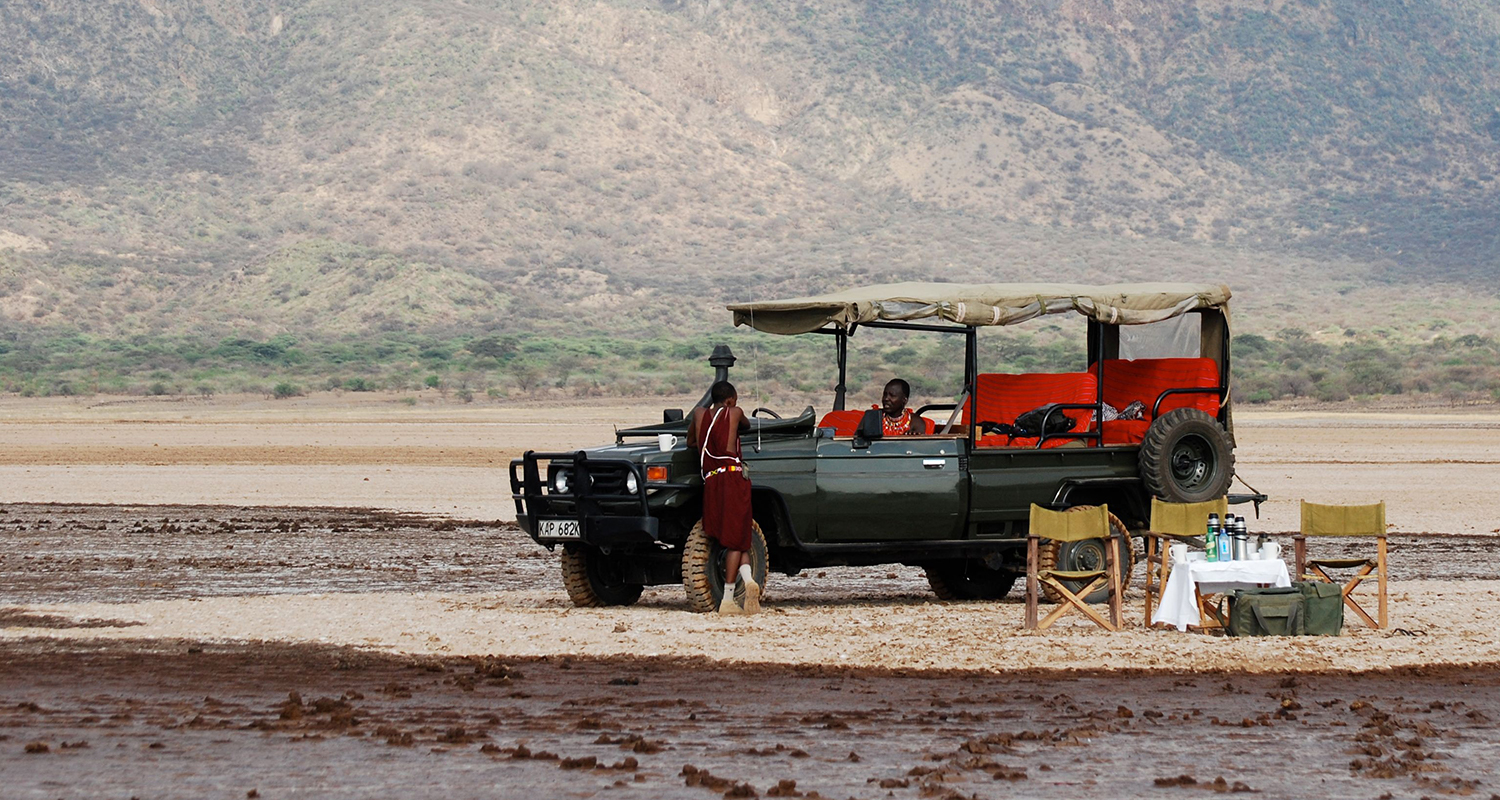
- Best Time to Visit
- Top Experiences
- Itineraries
- Parks & Areas
- Accommodation
ABOUT KENYA
A safari in Kenya is an intoxicating blend for those after a real adventure. Expect sensational wildlife and wilderness, as well as wildly stylish camps and bush homes, a huge range of activities and a high degree of flexibility and freedom.
The Kenyans practically invented the concept of safari; today’s best guides were yesterday’s barefoot bush-kids, so their knowledge is rooted in a muddy-kneed, dirt-on-hands level of personal experience. Consequently, the best safaris offer a relaxed authenticity that other countries struggle to match.
The country is blessed with some of Africa’s best wildlife as well as some of its most photogenic scenery, however in the past it struggled to shake off its reputation for nose-to-tail traffic jams of tour buses. So our focus is all about showing you the other side of this sensational country. Places like the Laikipia Plateau, the conservancies on the fringes of the Masai Mara or the Matthews Range where tourists are a rarity.
The Masai Mara is still one of the best game experiences you could hope to have. Aside from the undeniably spectacular prospect of seeing tens of thousands of wildebeest brave the crocodiles as they cross the Mara river en masse, the Mara has a huge variety of wildlife including lion, cheetah and leopard.
However, the Mara has seen a lot of development over the past 15 years, so you should choose carefully where to go. Community conservancies now provide an important buffer to the reserve itself and these are often the best places to find small, authentic camps in beautiful areas, far from the busier game routes.
Away from the Mara, stretching from the slopes of Mount Kenya to the rim of the Great Rift Valley, the Laikipia Plateau harbours an abundance of wildlife and a fine collection of eccentric lodgings. Days spent on Laikipia are a strikingly different experience to the rest of east or southern Africa. First and foremost it is made up of a patchwork of independent working ranches, rather than being a conventional National Park, and therefore the rules or, more likely, the lack of them, are down to your hosts.
The sense of liberation is palpable here. While in a National Park it may not be possible to walk, travel in an open vehicle, use a spotlight at night, ride a horse, bike or camel – it’s all possible here. Add to this the sensational wildlife, which includes the Big Five (there are eight separate rhino sanctuaries) and arguably the best place on the continent to track wild dog.
+ Read More
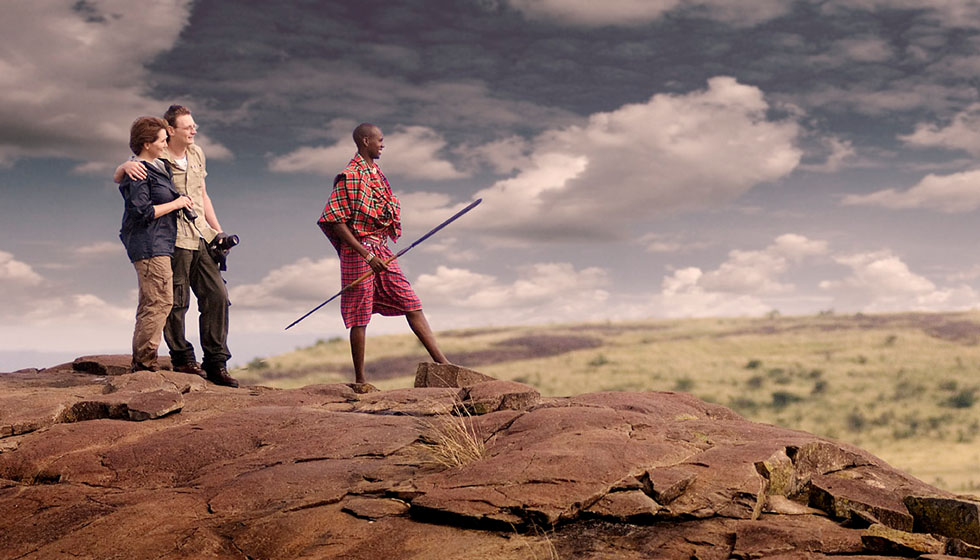
- Epic safaris on private conservancy ranches
- Sweeping plains with incredible wildlife
- Private bush homes
- Pristine beaches with miles of white sandy beaches

A print anthology of safari and wilderness travel with over 220 pages of travel inspiration.
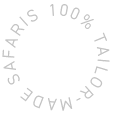
Top Reasons To Visit Kenya
Often the best safaris involve looking beyond the obvious highlights. It’s about the myriad exhilarating encounters that will make your heart sing. These are encounters that nobody could ever predict, but that make your safari genuinely unique.
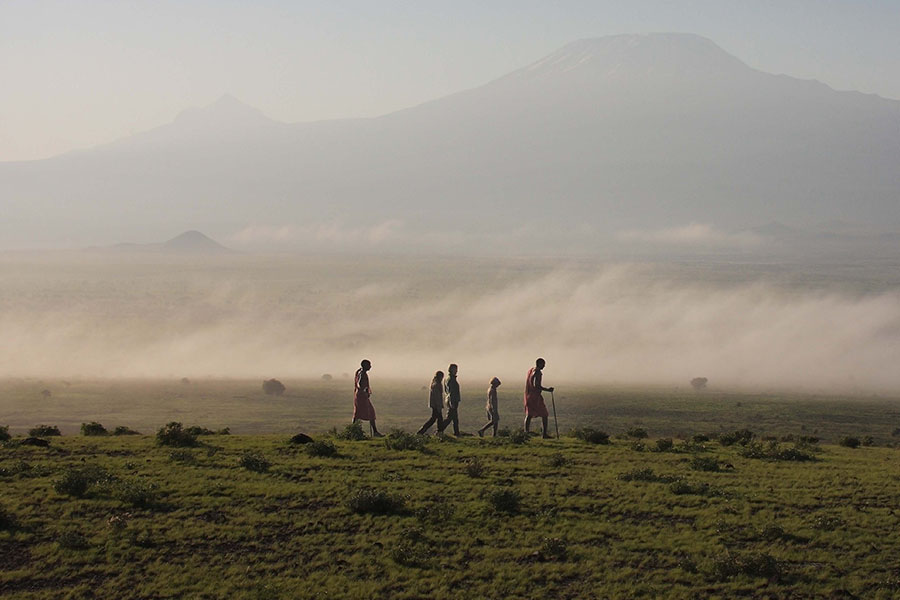
Best Time To Visit Kenya
Wildlife spectacles abound in kenya’s dry season.
Like much of the rest of Sub-Saharan Africa the conventional wisdom applies to Kenya; to see most, travel in the long dry season between June and October.
This is when wildlife concentrates around remaining water sources becoming more plentiful and easier to see. The wildebeest migration usually arrives in the Masai Mara from the Serengeti and the Loita Hills in late July, bringing drama on an unprecedented scale as hundreds of thousands of wildebeest cross the Mara and Talek rivers, braving vast crocodiles.
If you want to head to Kenya’s coast during the dry safari season, your best bet is to visit between late July and October. March and April tend to be the hottest times, while the seasonal rains arrive between late April and early July with short rains in late October to November.
Beat the crowds during Kenya’s green season
Don’t ignore the green season between December and May – wildlife remains outstanding, there are few tourists and the bush turns a lush green, alive with the extravagant plumage and sounds of breeding birdlife.
Some areas like the Chyulu Hills are arguably at their best once the rains have come. Canny travellers can pick up a combination of low season rates and few other tourists by travelling in low and shoulder seasons.
It’s also a great time to head to the Kenyan coast for some rest and recuperation. The Kenyan coast offers white sandy beaches and turquoise waters to rival anywhere in Africa, so makes a great addition to any safari. It’s at its best between late November and March.
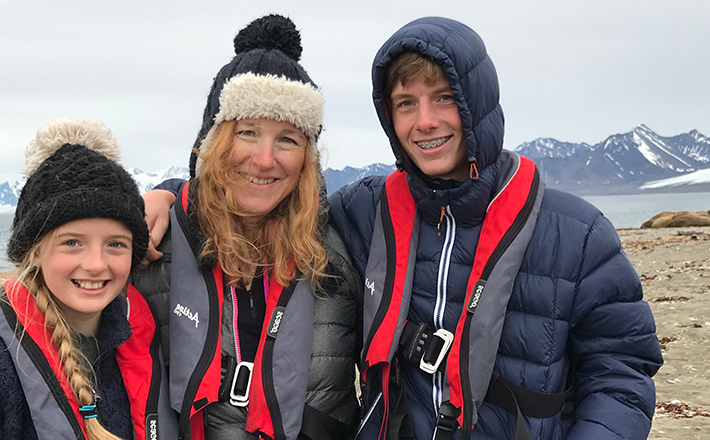
Talk to our Experts
They’ll be happy to let you in on their travel secrets, and help you plan a tailor-made trip that’s truly unforgettable.
Kenya’s Top Experiences
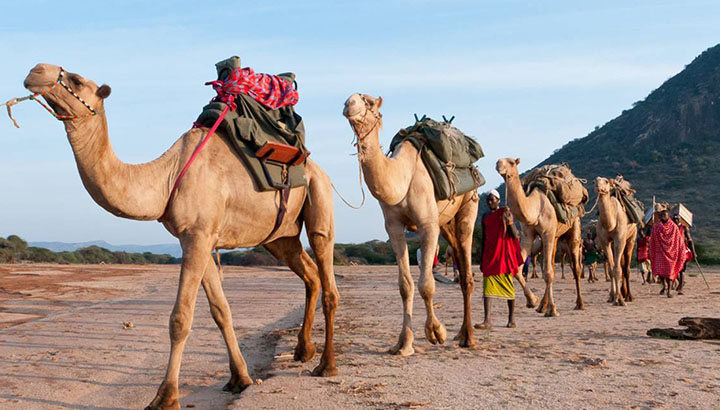
- June – October
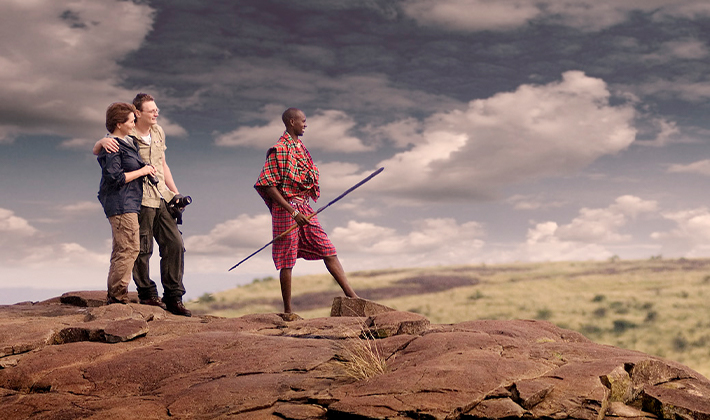
Laikipia & the Masai Mara under canvas
- June – August
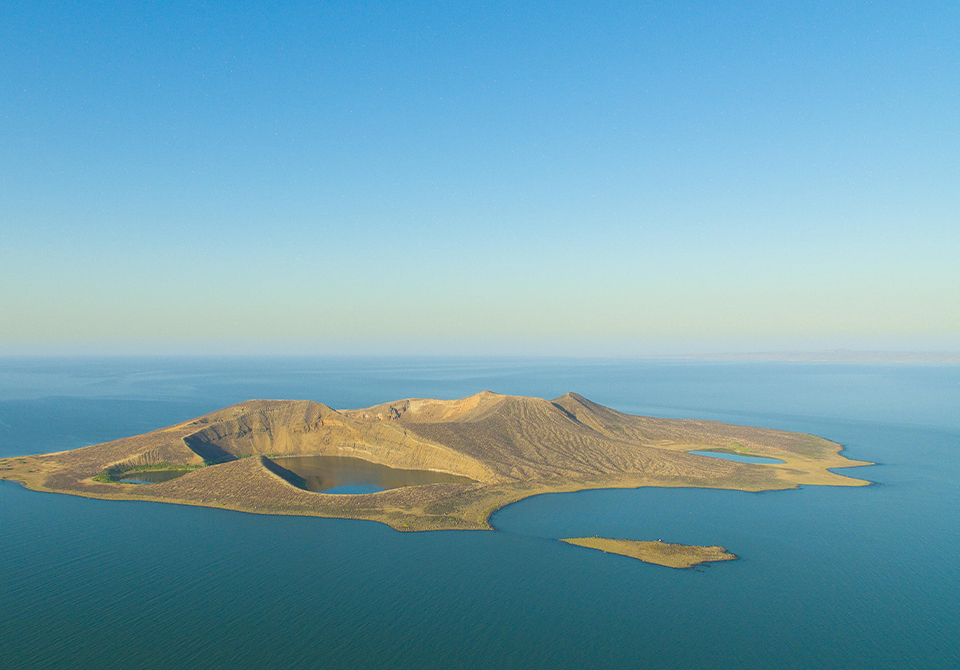
Kenya Safari Expedition to Lake Turkana
Popular safaris in kenya.
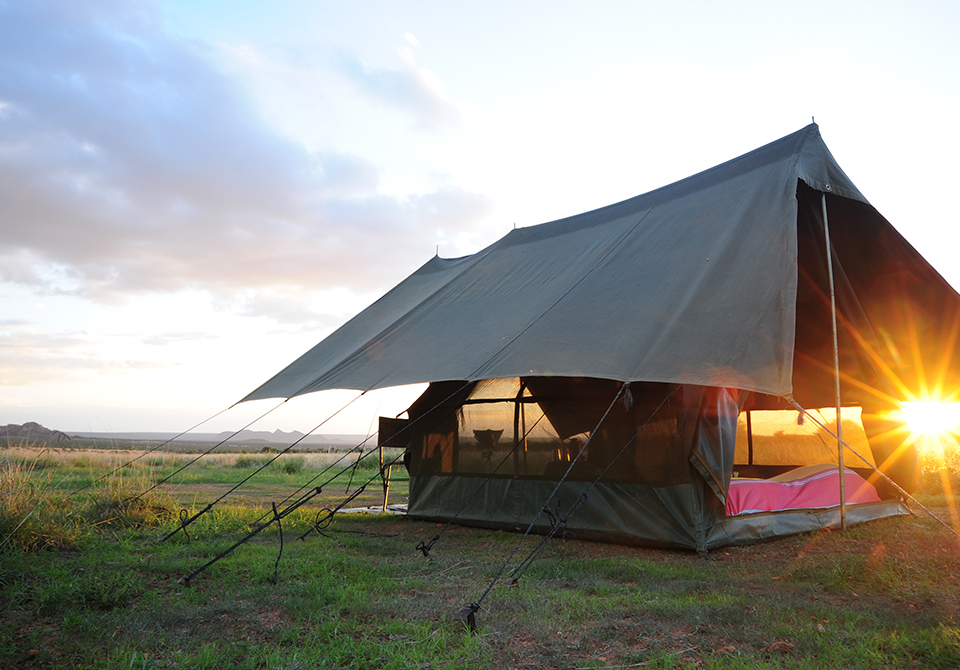
- Experience the freedom of a safari in Laikipia
- Camel safari led by Samburu guides
- Off the beaten track in Meru National Park
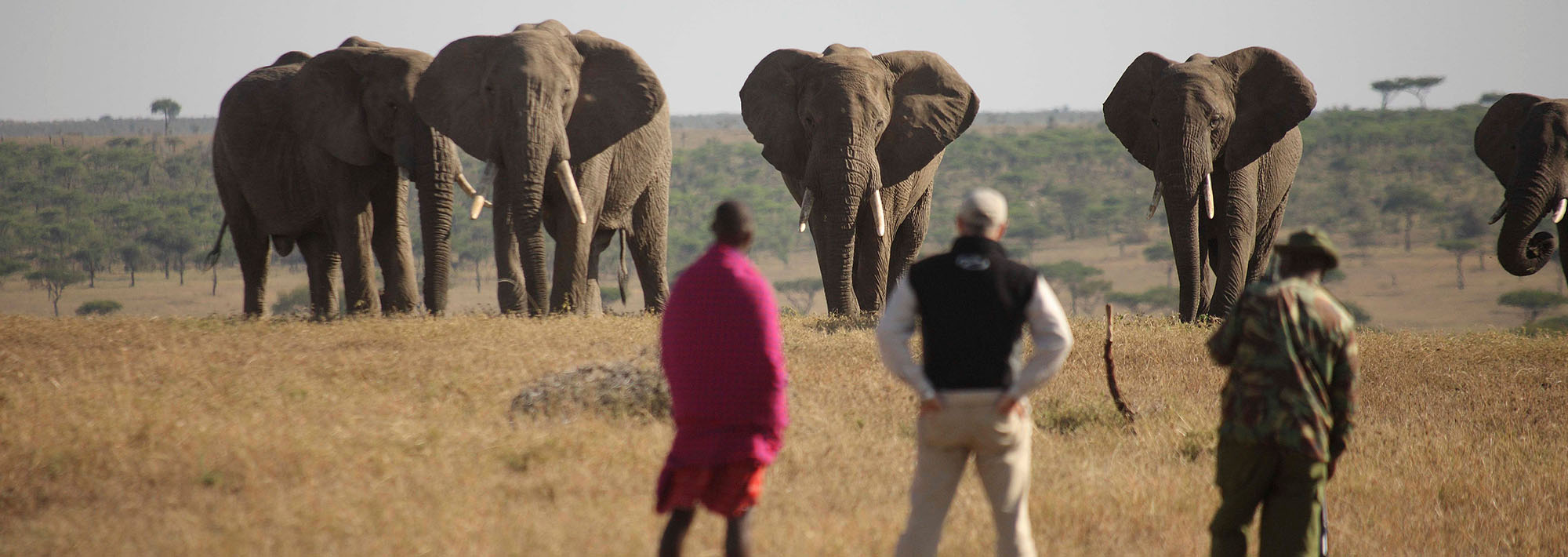
- Epic wildlife and freedom to explore off the beaten track
- Wilderness safari in Laikipia with expert walking guides
Kenya's Parks & Areas
Kenya can get a bad rap for being overrun with tourists, but if you know where to go it is remarkably easy to avoid the masses.
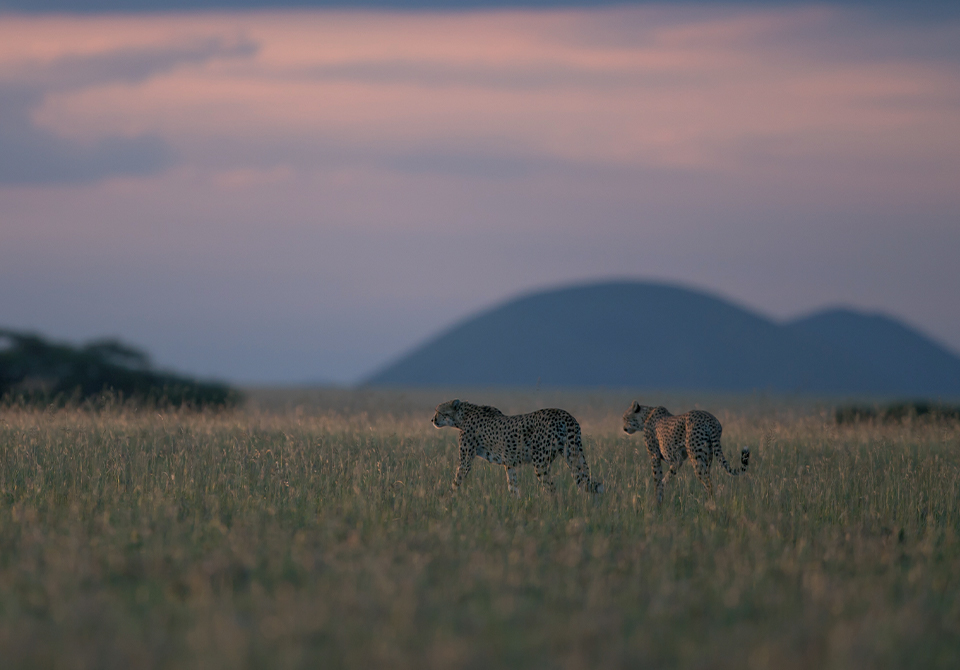
Chyulu Hills & Amboseli
Amongst the most scenic settings in Africa, every vista is dominated by the majestic snow-capped peak of Mount Kilimanjaro.
- Riding across the plains
- Good for seeing the pachyderms
- Remote and wild safari experience
- Stunning views of Mount Kilimanjaro
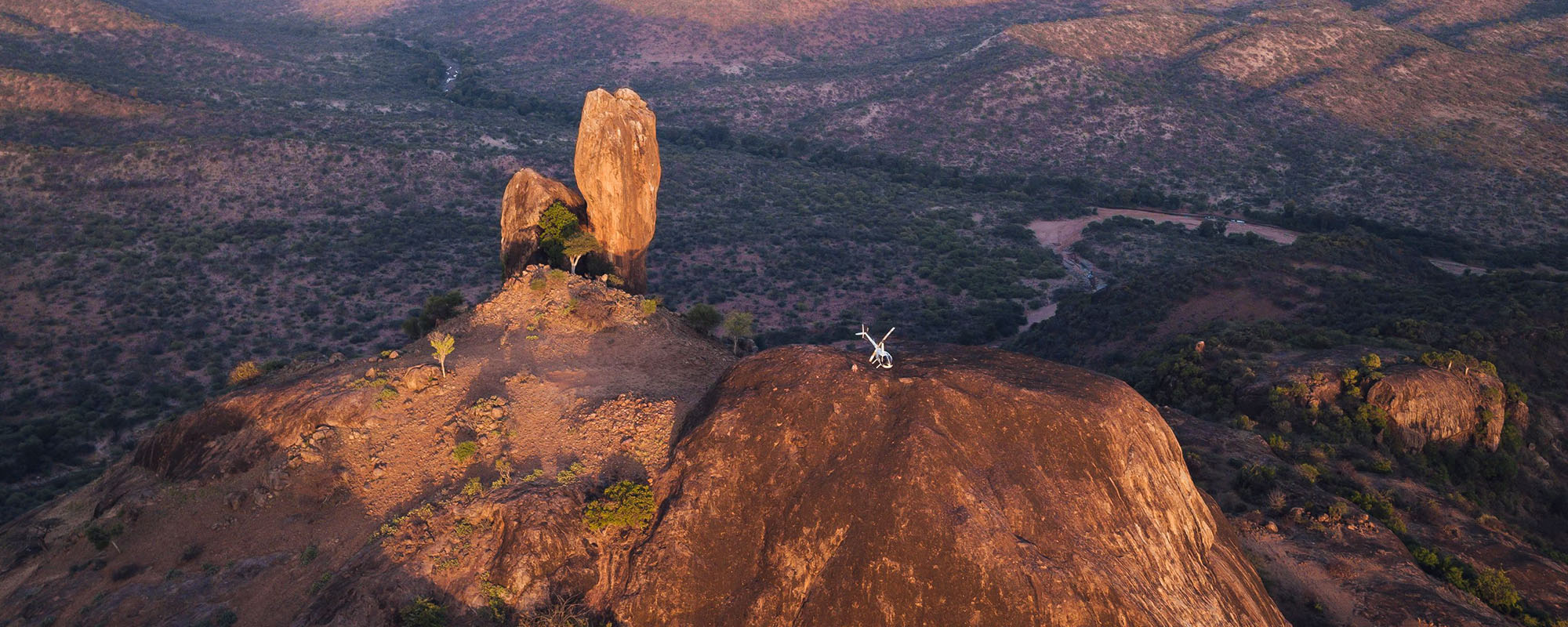
Laikipia Plateau
Explore the unique beauty of Laikipia Plateau to enjoy a fresh take on the traditional Kenyan safari experience.
- Spend part of your safari in private bush houses
- Epic safaris on private conservancy ranches
- Great for rhino and wild dog sightings
- Take to the saddle for a unique riding safari
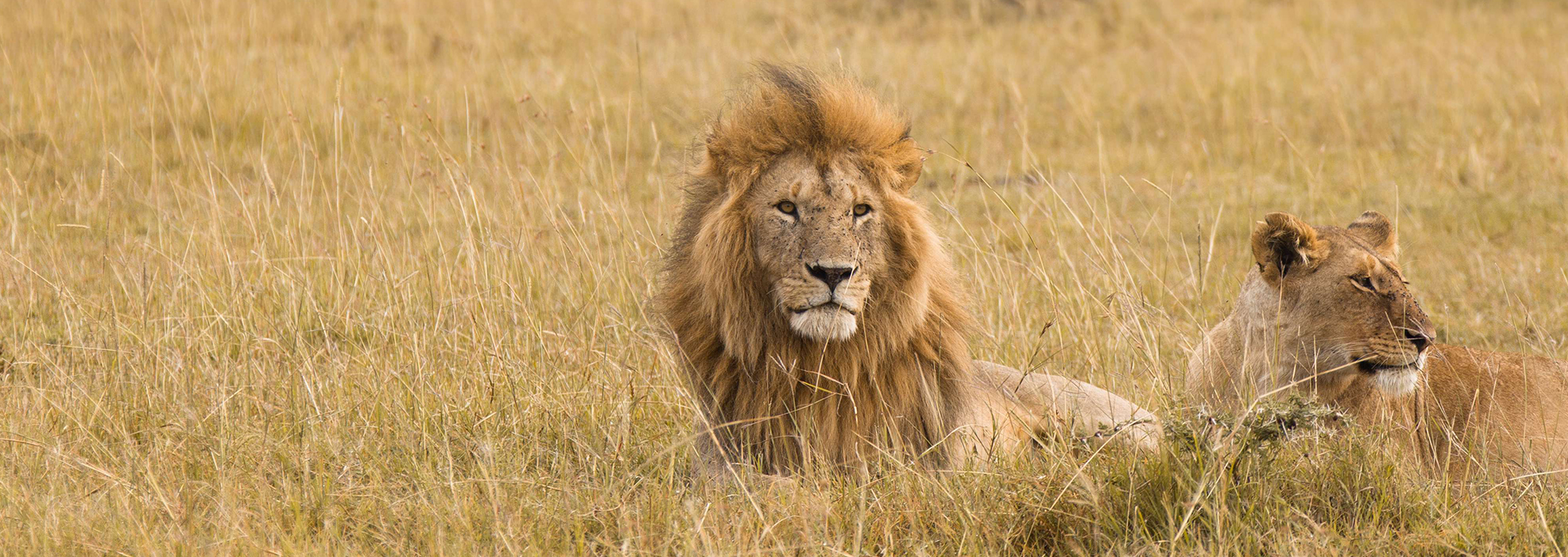
Masai Mara Game Reserve
One of the best-known wildlife areas in Africa, a Masai Mara safari promises iconic East African scenery and a wealth of wild animals.
- Home to greatest migration on earth
- Classic African safari scenery
- Sweeping plains and epic wildlife
- Acacia trees across the horizon
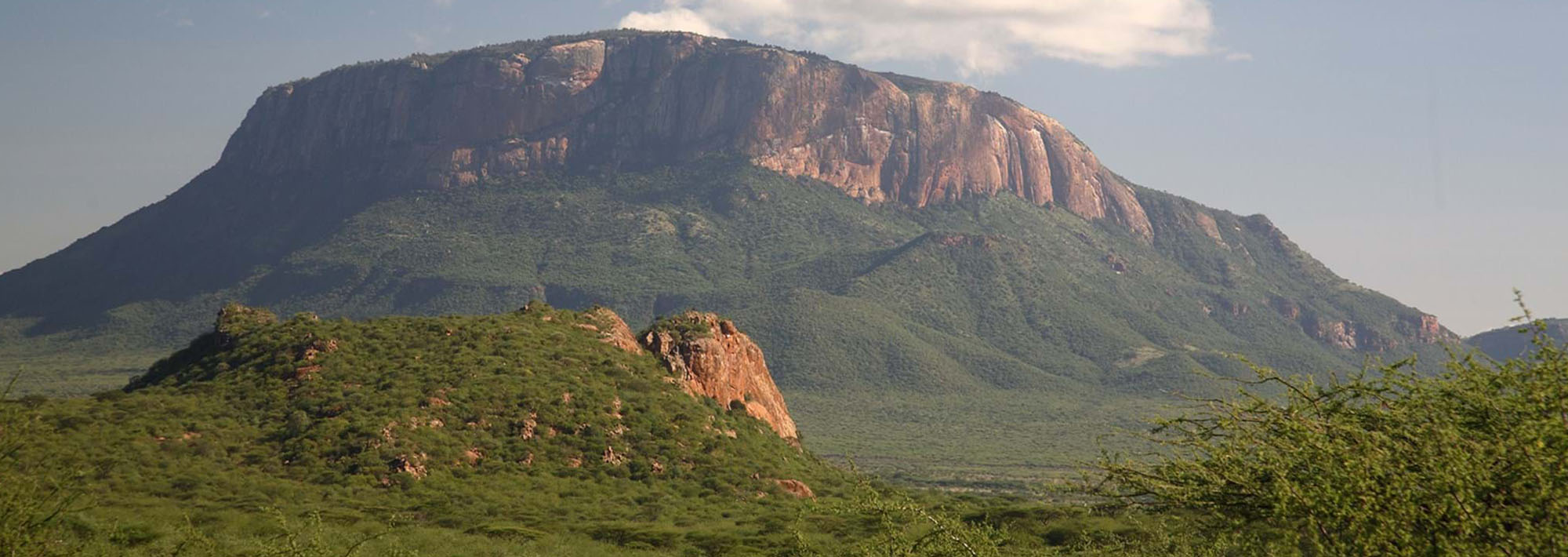
Samburu National Reserve
Samburu National Reserve straddles the Ewaso Nyiro river and is one of the most picturesque parks in northern Kenya.
- Dramatic desert scenery
- Endemic animals such as gerenuk
- Remote and wild
- Fly-camping under the stars
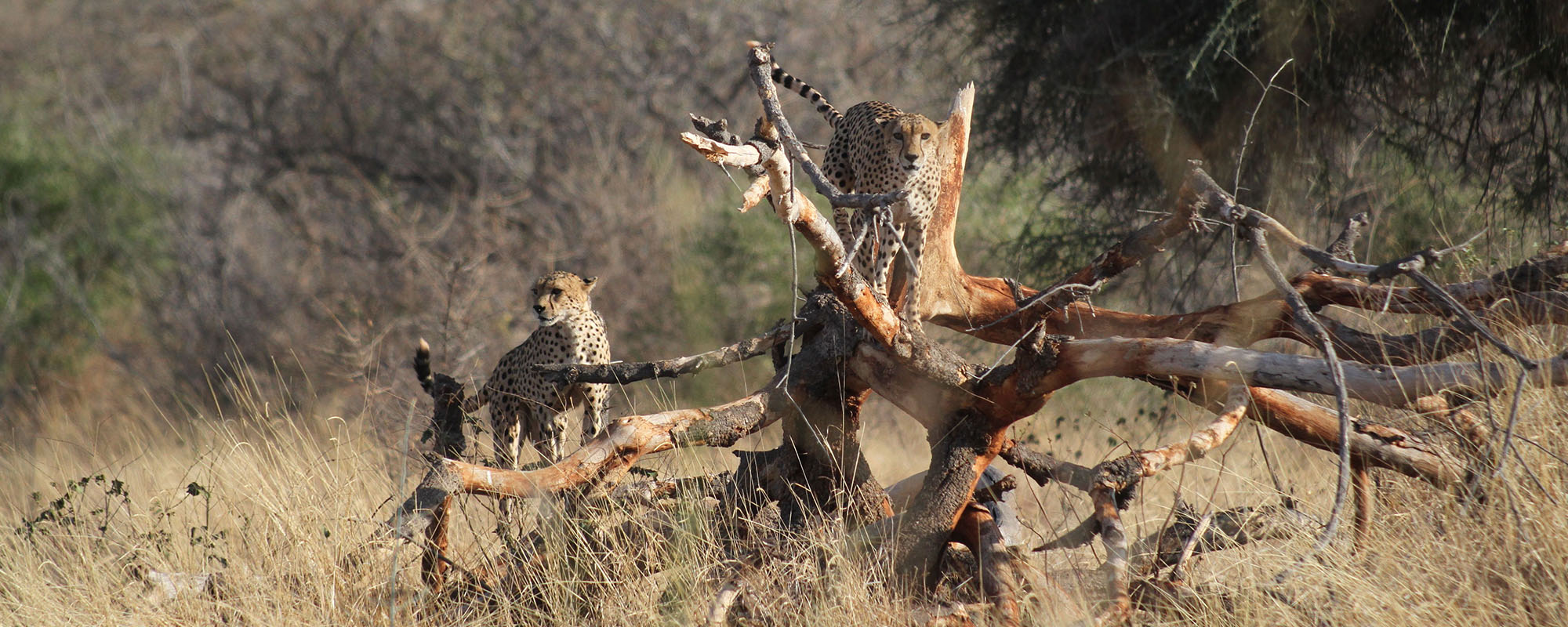
Meru National Park
Welcome to the best-known safari destination in the world, renowned for staging one of the most extraordinary wildlife spectacles on the planet.
- Home of beautiful camp, Elsa's Kopje
- Redolent of George and Joy Adamson history
- Views of Mount Meru
- Bi-sected by 13 rivers and numerous mountain-fed streams
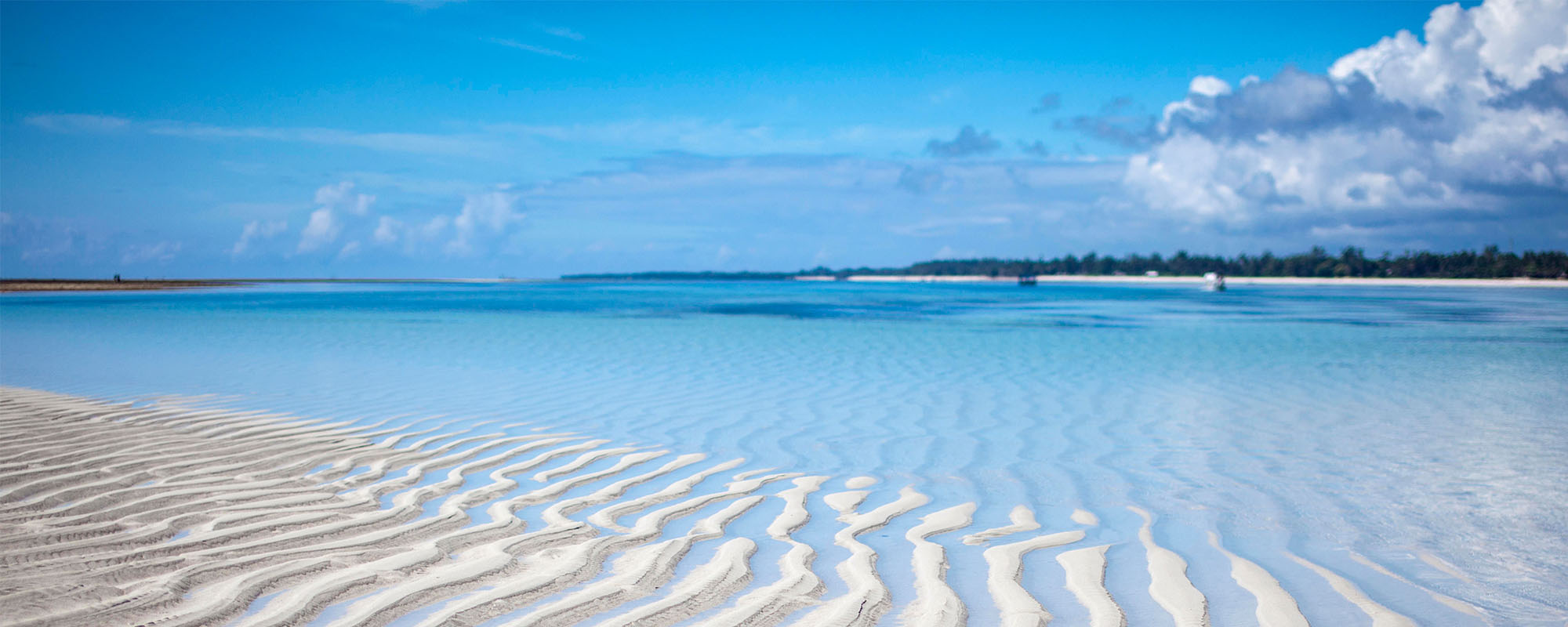
Diani Beach & the Kenyan Coast
Diani Beach is one of the most popular destinations on Kenya’s coast. A mix of amazing private homes and stylish resort hotels, it manages to retain its identity, and provide fun for all.
- Great watersports for all the family
- Pristine beaches with miles of white sandy beaches
- Seafood to die for
Our Favourite Camps & Lodges
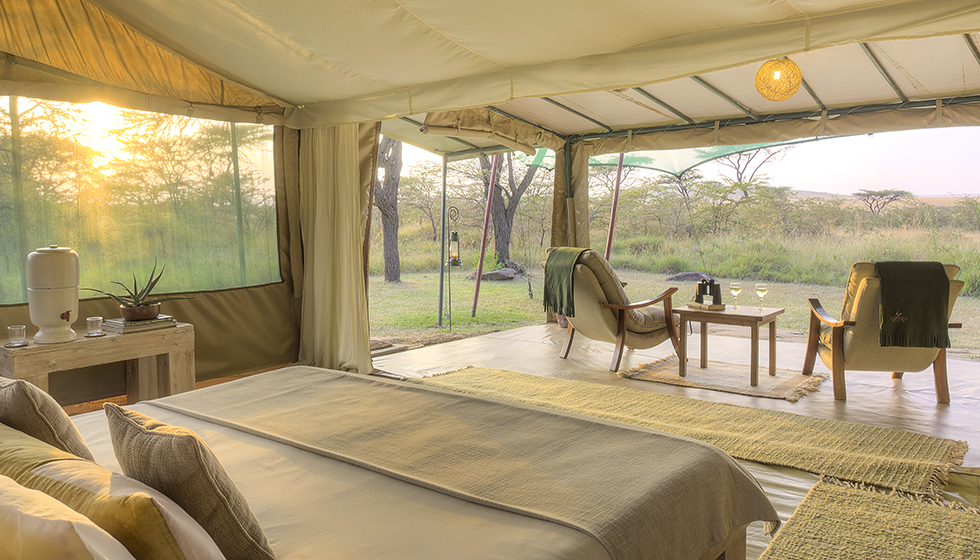
Spacious and tastefully furnished, the six bespoke tents are equipped with either twin or double beds, one can be made up as a triple if need be.
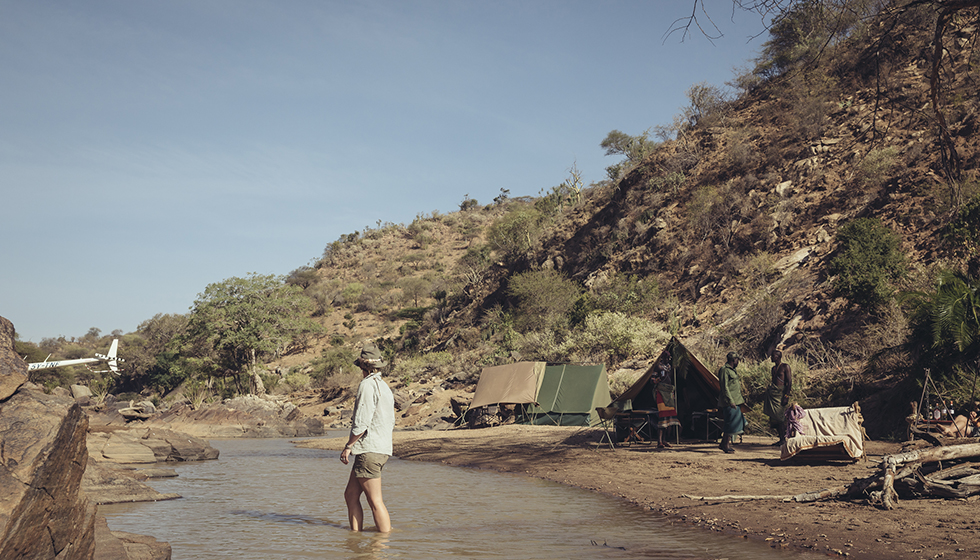
Wildlife is not a highlight here, but you do stand the chance of seeing a real gem such as wild dog, if you have the patience to look.
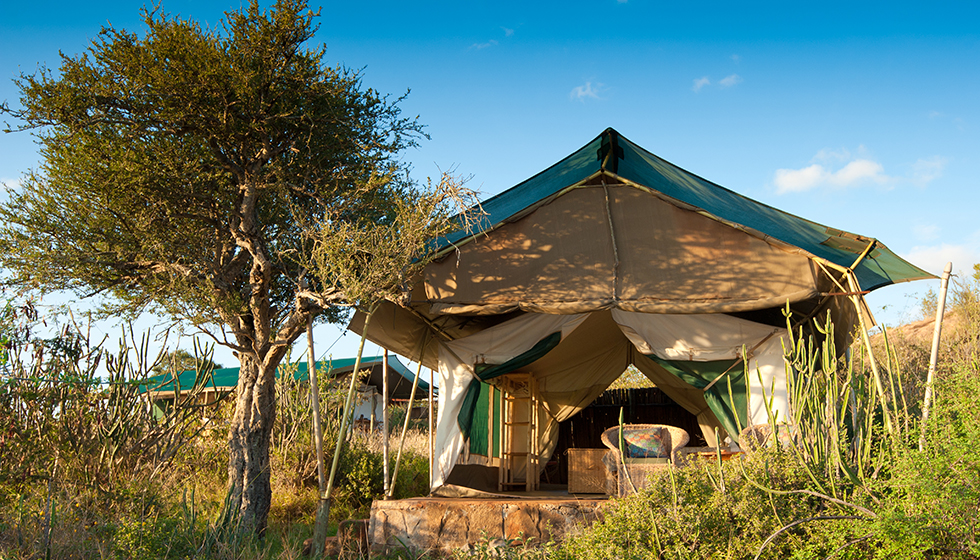
The wildlife in the surrounding area is supreme, being one of the best wild dog spotting sites Africa has to offer.
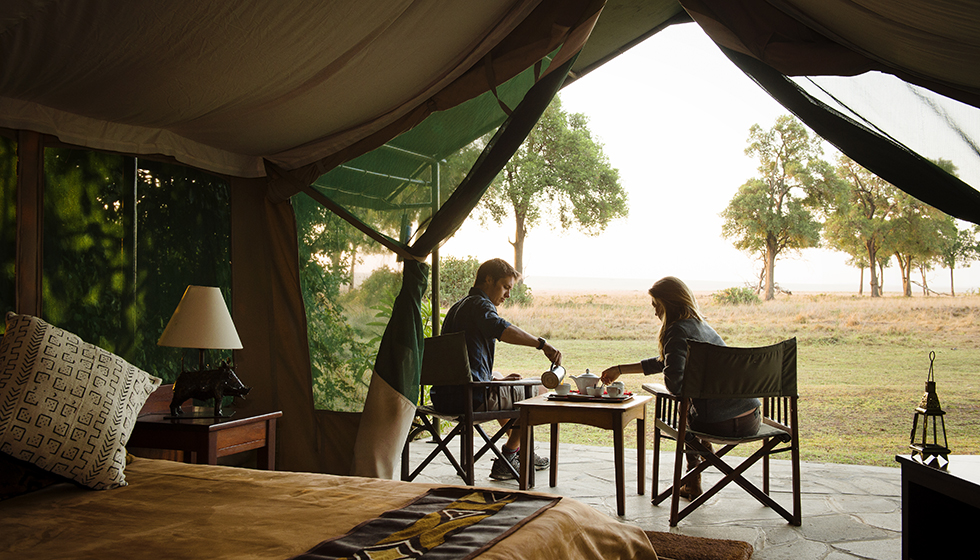
The first permanent tented camp in the Mara and enjoys prime location and is great for couples, families and friends wanting to experience the Masai Mara.
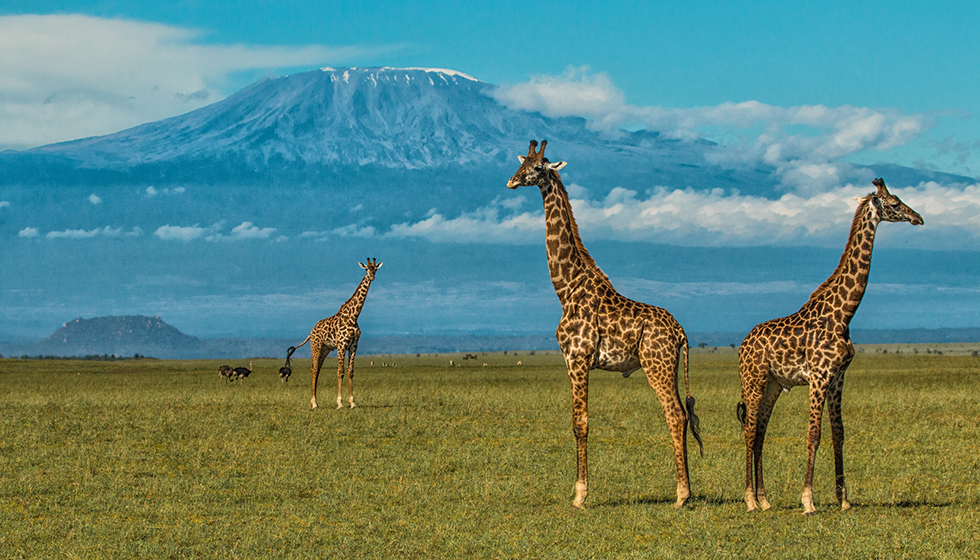
There are plenty of animals here, but don't come impatient to have it all on a plate, or you could end up frustrated.
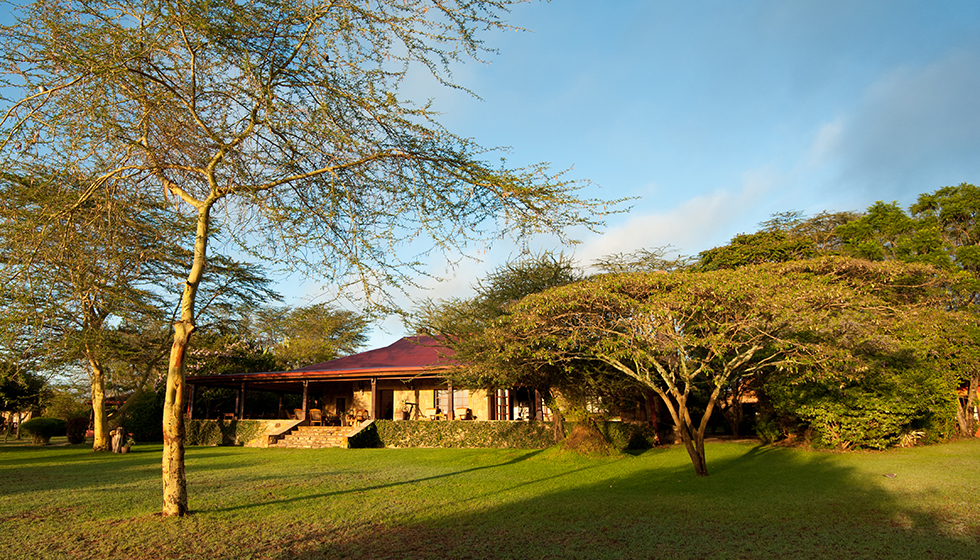
Sosian is a working ranch yet absolutely crawling with wildlife and offering an unusually diverse range of things to do from walking to wild swimming, riding camels, horses and mountain bikes.
Kenya (FAQs) Need to Know
What is the best safari in kenya.
We believe the key to an epic safari in Kenya is getting away from the crowds. Kenya is one of the best wildlife viewing destinations in the world, so naturally tourists flock here. However, being among so many other people can seriously devalue the authenticity of your experience.
We champion the lesser-visited parts of the country, like the Laikipia Plateau, the conservancies on the fringes of the Masai Mara or the Matthews Range where tourists are a rarity.
To really get a tangible sense of freedom, we recommend visiting the Laikipia Plateau. Rather than being a conventional National Park, this area is made up of a collection of independent working ranches. This means less rules, and more possibilities for exploration. Staying in Laikipia often leaves the impression that you have visited friends – family hounds might join you on game-drives and a swim in the river might replace the more common-or-garden siesta.
Refreshingly in northern Kenya, man and wildlife do merge. While there are undoubtedly challenges, if there is a model whereby traditional pastoralists, commercial farmers and wildlife can all coexist, this is it.
How long should I spend on safari in Kenya?
This all depends on what you’d like to see and how many areas you’d like to visit. Ideally we’d recommend a minimum of seven to nine days in the game-rich areas. This gives you a good chance of encountering the animals you’re hoping to see and also the time to visit a few, very different, parts of Kenya.
It’s also important to factor in some recovery time. If this is your first time on safari, you may be surprised how long and tiring the days can be. Activities tend to start early in the morning as this is the coolest time of day. To make sure you don’t burnout, we always recommend having some downtime, perhaps even adding on a trip to Kenya’s idyllic coastline for some recuperation at the end of the trip.
Is Kenya a good family safari destination?
Not only is Kenya a great destination for first-time safari-goers, it’s also an exceptional location for families. Away from the lure of Xbox, YouTube and social media, children can reconnect with nature, immersed in the wilderness with nothing but incredible landscapes and fascinating wildlife.
There are so many experiences that will inspire young ones, and arguably more importantly, keep them entertained.
Take a camel safari in Laikipia alongside Samburu Guides, for example. On this safari, you’ll navigate across Laikipia’s wilderness in the company of expert guides and crew, walking or riding on camels as you make your way between the camps. Your children will also meet and live alongside semi-nomadic Samburu people, learning about their way of living which is so different to their own.
From Our Travel Guides
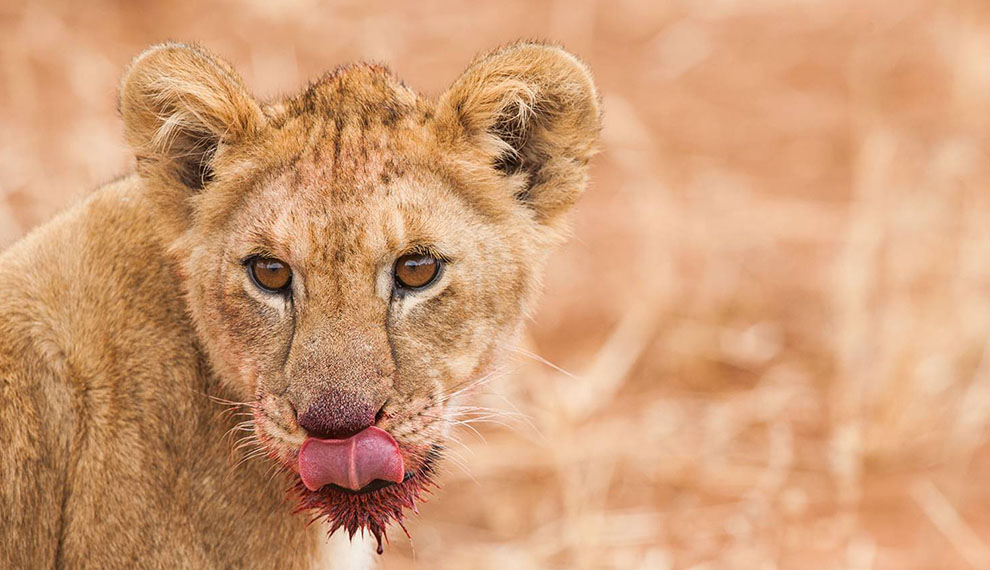
Top 5 Wildlife Safaris
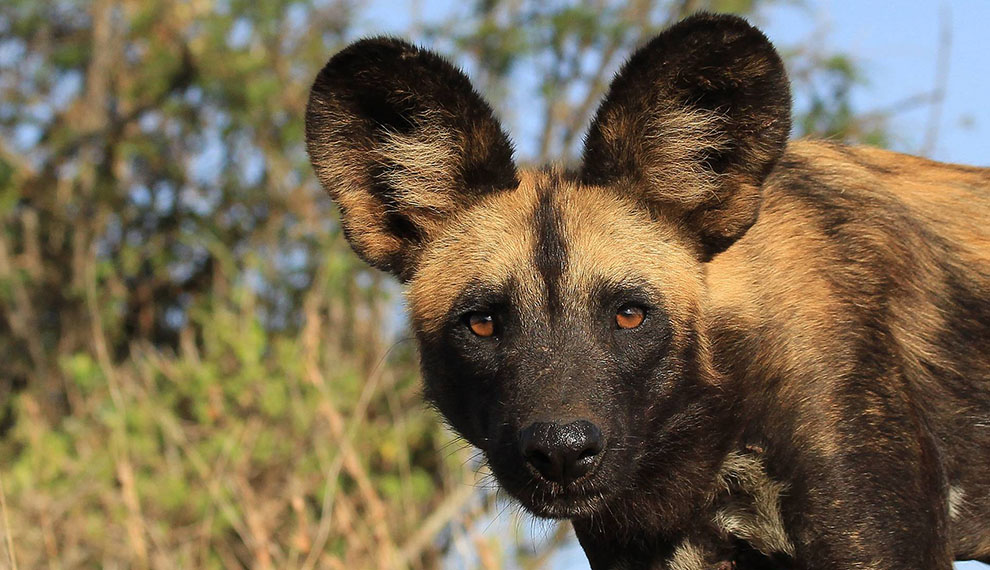
Top 5 Safari Destinations to see Wild Dog
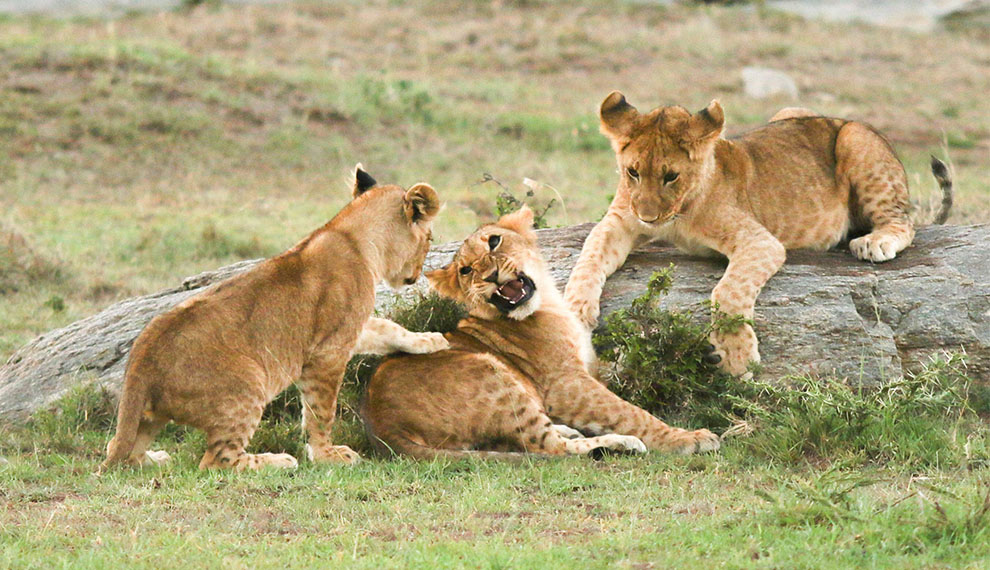
Top 5 Safari Destinations to see Lions
Meet our travel experts.
It takes genuine local knowledge to craft trips that go beyond the ordinary. The Natural High team have unrivalled experience and will take your ideas and turn them into your trip of a lifetime.
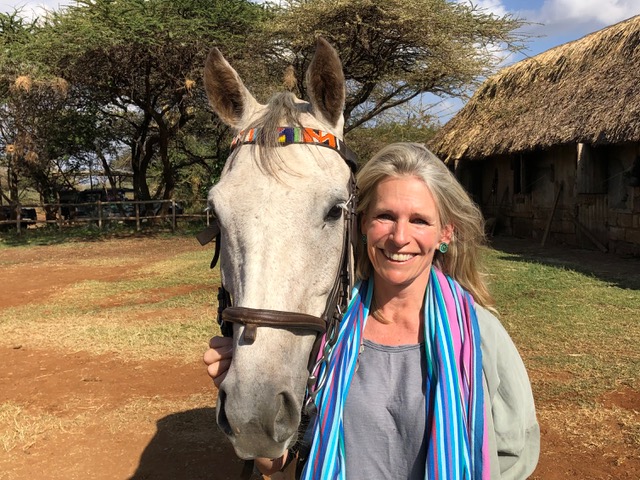
Into The Wild Brochure
Need some more inspiration? Request a copy of Into The Wild, our comprehensive anthology of safaris and wilderness travel.
WHAT PEOPLE SAY
Fantastic Natural High
TRUSTED CUSTOMER
Good safari experience
Superb responsive and accurate service and information. My extra requested destination was recommended and was absolutely what I was looking for and w...
superb travel planners for Madagascar
Rod’s communications were excellent- through the planning phases and during our trip. His advice on where to go and what to pack was consistently ex...
All round fantastic service.
Kept fully informed, well advised, Catherine was great at reminders and checking in that everything was organised. The recommended flight agent was a...
Beautiful trips!
Excellent service! All worked out perfectly letting us focus on just enjoying the trip without worrying about anything!...
The service on the ground was provided by Zeph Elias of Wilderness WAYO and it was really excellent...
Alex, Rachel, Ewan & George
Well organized and efficiently executed trip. Would definitely use them again and recommend them to others....
Charles & Jo Mercey
Amboseli trip...fantastic
incredibly helpful whilst planning trip, then everything went smoothly when we were there, great accommodation, transportation, food, guides etc etc. ...
Elizabeth Leece
When we weren't laughing we were moved to tears - thank you!
From my first conversations with Vanessa and Catherine I felt the comfort of knowing I was in good hands and had connected to people with an evident p...
The very best travel company organising unique bespoke trips
Outstanding bespoke trip. Every tiny detail was taken care of. We stayed in a variety of lodges and the service was excellent throughout, as were the ...
African vacation created with perfection!
We live in Canada and have relied on Vanessa Janion to plan and organize 3 trips to Africa for our family members. Without a doubt she has consisten...
Chris And Viviana
Best holiday ever
The Namibia safari, with Ultimate Namibia Safaris, introduced to me by Natural High Safari was by far one of the best organised holidays I have experi...
Angela Redman
A Dream come true.
Excellent service and trip....
Arranged an exctsafari with their regional partners. All in place perfectly with no exceptions....
Perfectly described and everything went as planned....
Great safari. Great sightings. Hiking. Had it all....
Thank you for organising an excellent trip. Your service was responsive and helpful. Occasional slip-ups in the written detail made me wonder how meti...
Brilliantly planned adventures in Uganda and Madagascar
Rod organised 2 excellent trips to Africa for me this summer - the first in June to Uganda and the second in August to Madagascar. Both trips benefit...
Saritha & Fionn
One of the most memorable Family Holidays - wonderful!
Simply first class on every level. Catherine Ronan was 'on it' from the start and built the most fabulous bespoke holiday for the family in Mozambiqu...
Murray & Amanda
Namibia 2023
We had wonderful four weeks in Namibia. Everything was really nice planned and we didn’t need to worry about anything. We made some incredible memor...
Vera & Tobias
Based on 383 reviews
Enquire Now
Please fill in the form below and one of our specialists will be in touch with you, or alternatively contact us on:
- +44 (0) 1747 830950
- [email protected]
- Travel Guides Plan your adventure
- Destinations Our favourite places
- Tours Book a trip
- Travel Companies Independent specialists
- Travel Guides
- Destinations
- Travel Companies
Safari in Kenya
Kenya's best safari reserves and camps.
Stuart Butler
- In this guide
- Samburu, Buffalo Springs & Shaba
Meru National Park
Lake nakuru national park, amboseli national park.
- Nairobi National Park
- Off the beaten track
Kenya besides safari
- Where to go
- Need to know
- Itinerary planning
- Hidden gems
- Conservancies
- How to plan & book
The best safaris in Kenya: Overview
I've been going on safari in Kenya for decades, as a travel journalist and guidebook author writing about safari, conservation and life among the Maasai tribes. This is the original home of the safari and, in my view, it’s still one of the finest safari destinations in Africa.
The main thing I've learned: there's so much more to safari in Kenya than the mainstream of luxury camps and the famed “big five” (so named because they were the prize targets of colonial–era hunters).
Kenya safari: at a glance
- My favourite safari park: the Masai Mara is the part of Kenya I've spent most time in and have some magical memories living with Maasai herders. A tie for my favourite Kenya safari park would be the virtually forgotten and blissfully quiet Meru .
- My favourite conservancy: Kenya's privately-run conservancies are consistently excellent, in the Masai Mara, the Nashulai Maasai Conservancy is particularly interesting, as it’s the only one that was 100% established by local Maasai and the only one where they remain in their homes within the conservancy.
- Overrated: accommodations within the national parks are often drab, for a real treat look at the adjacent conservancies.
- When to go: In my experience the best time for safari in Kenya – especially in the busier parks – is either June before the crowds arrive or September-October as the crowds are thinning out.
Ready to go? Read on for my guide to the best safaris in Kenya. Safari njema! – (Have a nice trip!)
The best safaris in Kenya
Kenya’s most popular – and some underrated – safari highlights.
Don't be swayed by the Masai Mara's magnetic pull. There are many hidden gems to be discovered in Kenya: here are a few of my top recommendations.
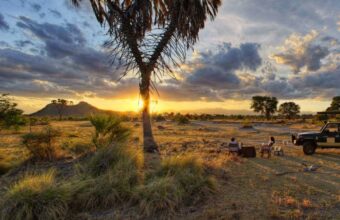
Elsa’s Kopje
This is the best lodge in what is, for me, one of the best safari parks in Kenya. Named after Elsa the lion, of Born Free Fame, the lodge sits on an outcrop with simply incredible views over Meru. Owned by Kenya-based Elewana Collection, it’s undeniably pricey – rooms start at around USD $950 per night and climb steeply from there – but worth a night or two if your budget can stretch that far. If that’s beyond your means I can also recommend Meru Camp and there are cheaper options in the nearby town of Maua.
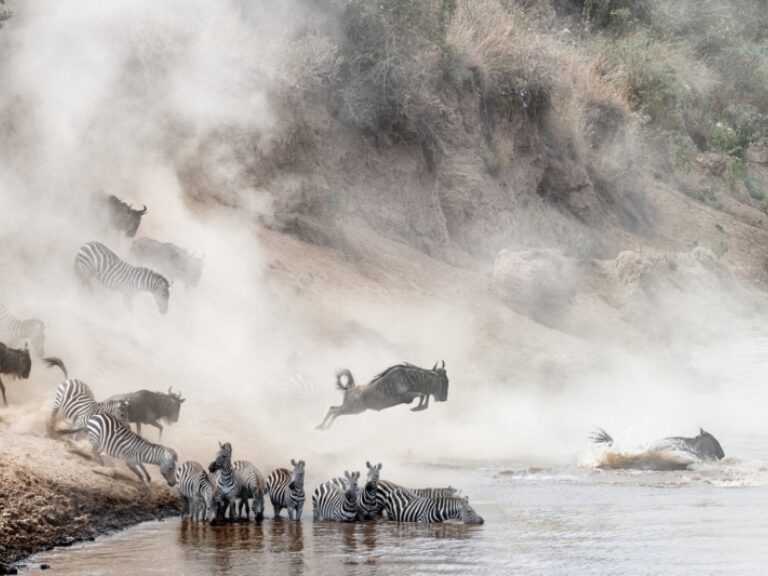
Witness the migration river crossings – but expect crowds!
The wildebeest migration is one of the world’s greatest natural phenomena, and watching the herds dodge hungry crocodiles as they surge across the Mara River is a staple of Kenya safari.
The migration moves into the Masai Mara from Tanzania’s Serengeti between June and October. This is by far the busiest time and place of the year, so expect crowds, higher prices and limited availability.
If you’d rather see the migration untroubled by crowds, I recommend you look at Tanzania instead.
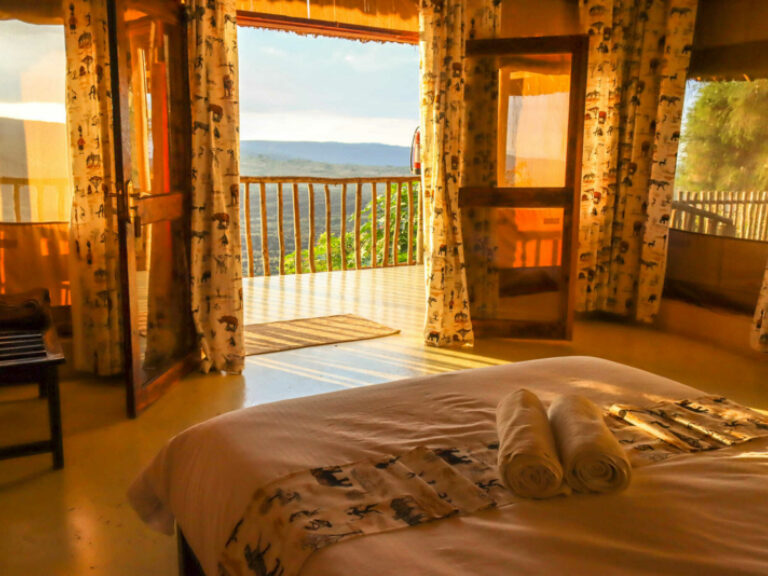
I can highly recommend Maili Saba. It has a picturesque location overlooking the Great Rift Valley and volcano region, with lovely permanent tents each with en-suites and balcony, and all very nicely decorated. There is a communal pool and outside gazebos for relaxing. The main dining room and lounging area is stunning with striking cathedral ceiling and beautiful decor.
The food is absolutely outstanding and the staff are warm, friendly and go out of their way to assist their guests.
The first time I visited was a complete surprise organised by my Kenyan partner, and I've included it in our tour itineraries ever since.
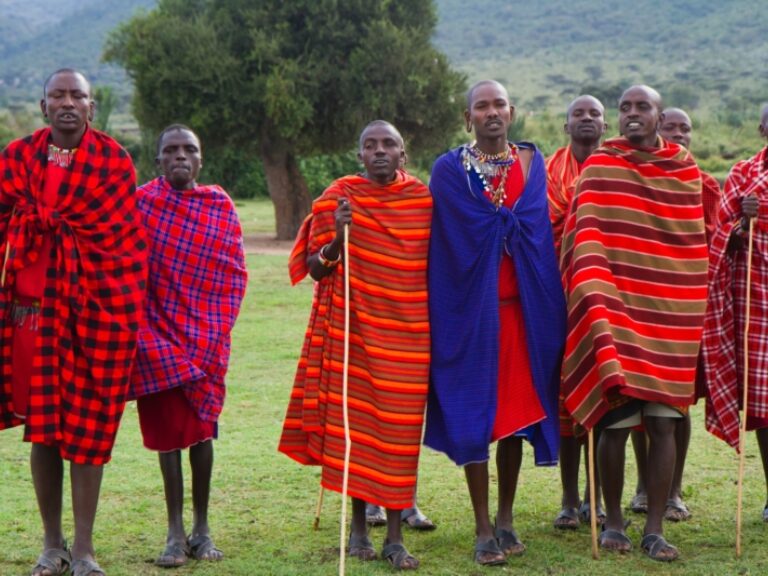
Stay in a community-owned conservancy
One of the great success stories of Kenya safari has been the emergence of networks of conservancies, usually adjacent to the better known national parks. These are community-run or privately-operated protected areas, run for the benefit of wildlife and local communities.
In the Masai Mara, the Nashulai Maasai Conservancy is particularly interesting, as it’s the only one that was 100% established by local Maasai and the only one where the Maasai remain in their homes within the conservancy. There are two accommodations in the conservancy, the small and exclusive Wageni camp and the mid-market Oldarpoi. It's also possible to visit as a day visitor, but you must still book ahead.
In the same area I can also highly recommend Mara North, Naboisho, and Ol Dereski; you’ll likely have an amazing time in any of them.
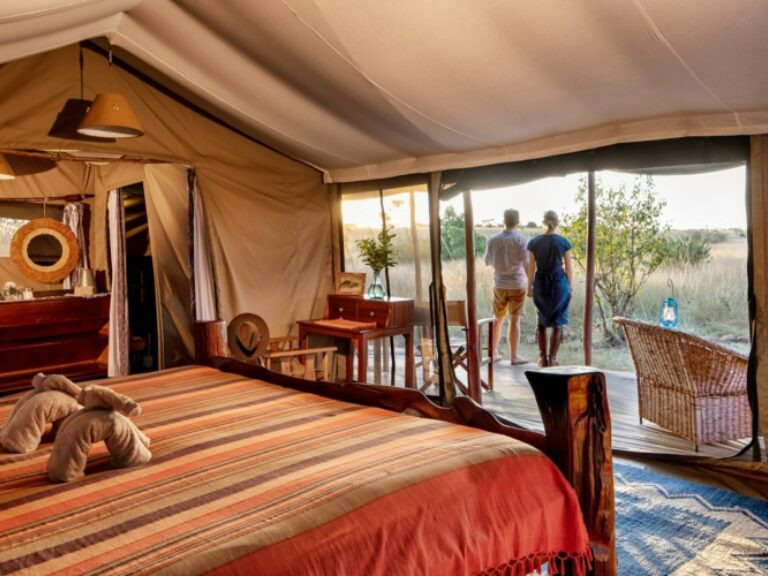
Offbeat Mara
Mara North is perhaps the best known conservancy in the Masai Mara, and Offbeat Mara is one of my favourite camps in the entire place.
It's a small, un-showy camp of just seven tents including two family tents. In addition to the standard game drives you can do night drives, guided bush walks, horse riding, hot air balloon flights and even do some Maasai running coaching!
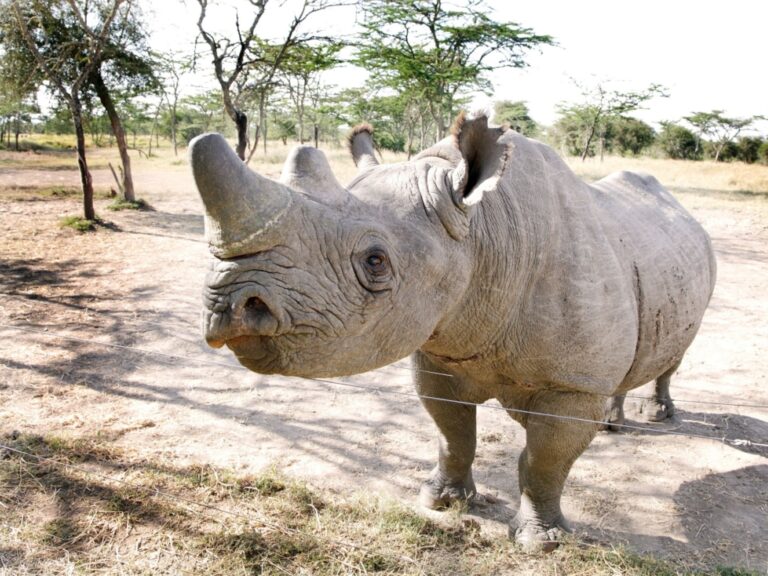
Ol Pejeta Conservancy
If you’ve ever wondered what the hide of a rhino feels like, wanted to experience a safari at night or dreamed of running (or riding) in the wild, open air of a safari reserve, head to Ol Pejeta Conservancy. The conservancy is in the Laikipia region, at the foothills of Mount Kenya. The sanctuary is the largest in East Africa to host black rhino, as well as the world’s last two remaining white northern rhino. Ol Pejeta is also the only place in Kenya where you can see chimpanzees. Conservation is at its core, with several experiences available for intrepid safari-goers who want to do more than just watch the animals.
Those looking to get their hands dirty can join one of the one or two-week volunteer programmes and learn wildlife research and tracking, veterinary care and more of what goes on behind the scenes. The conservancy has several accommodation options from simple cottages to basic campsites and luxury tented eco-camps.
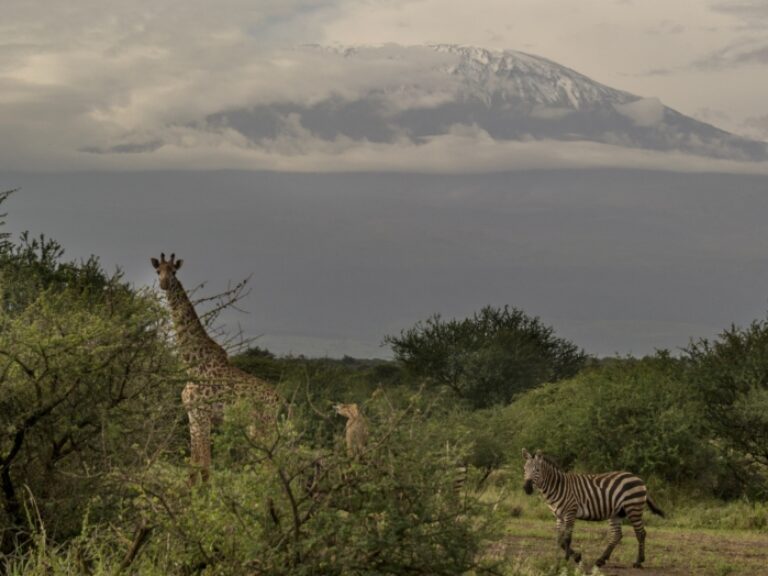
Campi ya Kanzi
If elephants are your thing, you can’t do much better than Amboseli where herds of these magnificent beasts graze in the shadow of the equally magnificent Mt. Kilimanjaro.
By far the best place to stay is not in the park itself but 30km away at Campi ya Kanzi in the Kimana Community Wildlife Sanctuary, situated between Amboseli and Chyulu Hills.
It’s a very high-end Maasai-run camp that was set up to aid the local community and conservation projects. Its excellent location means you can see wildlife in the conservancy, Amboseli and Chyulu all from one base.
Saruni Rhino Camp
This camp in the Sera Conservancy, just north of the Samburu Reserve in northern Kenya occupies a stunning location in the semi-desert. Their specialism is a thrilling rhino tracking walking safari, probably my favourite place to see rhinos in all Kenya. I spent five days here and by the end still couldn’t decide if coming within ten metres of the steamroller-like rhinos was thrilling or simply terrifying!
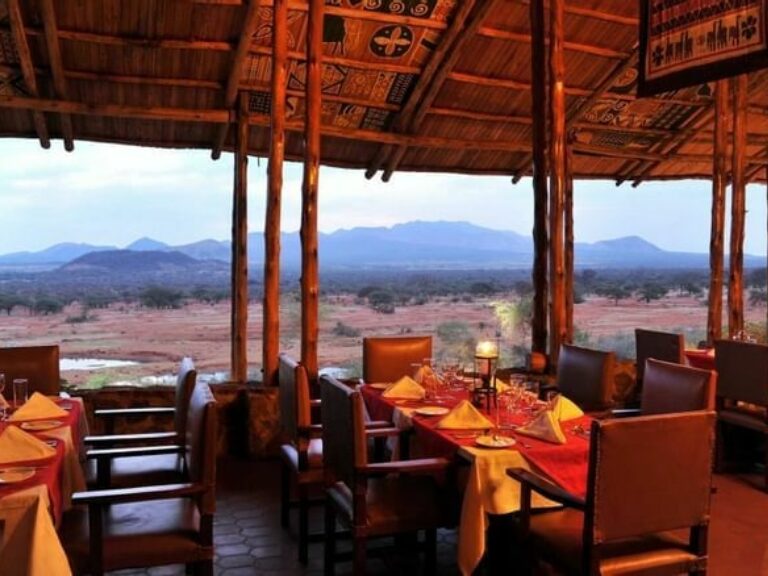
Kilaguni Serena Lodge
In Tsavo West most of the accommodation is fairly expensive (unless you have your own camping gear in which case there are three spartan public campgrounds). A reasonably-priced option is the Kilaguni Serena Lodge – it’s far from a budget offering but the Serena collection is generally pretty good value. If you have the budget to blow, Finch Hattons is the most exclusive camp in the park, with an eye watering price tag to match.
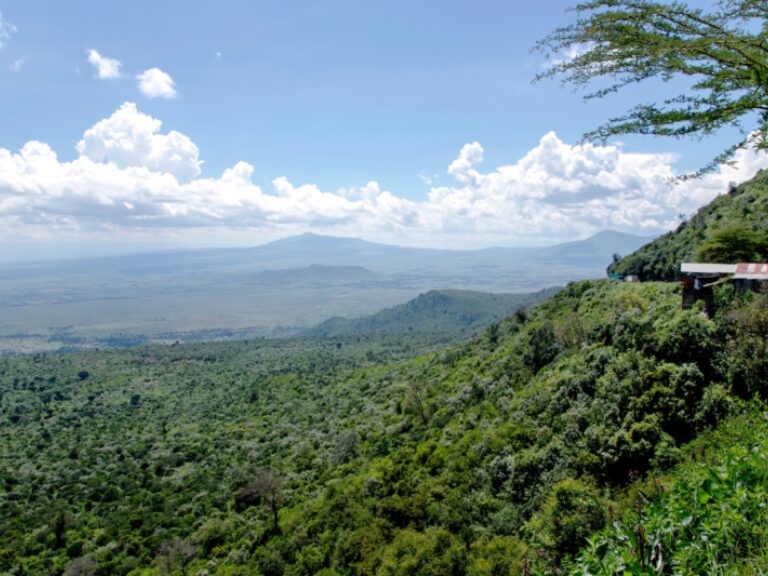
Best walking safari
In my opinion the best way to experience a safari is to ditch the 4X4 and explore on foot. With a good tracker-guide you’ll see all the little things you’d otherwise miss if you’re stuck in a vehicle all day. Walking is often forbidden within state-run national parks but is usually allowed, even encouraged, in conservancies. If I had to pick a favourite place for a walking safari in Kenya it’d be Loita Hills without question. Although not far from the Masai Mara, Loita Hills is barely visited by tourists despite boasting superb and varied scenery, a lovely climate, very different wildlife to the lower savannah plains, and fascinating interactions with very traditional Maasai culture.
Also, while Kenya doesn’t really compete with the multi-day Tanzania trekking scene, some organised trekking may be found here, as well as in the Aberdares and around Mt. Kenya.
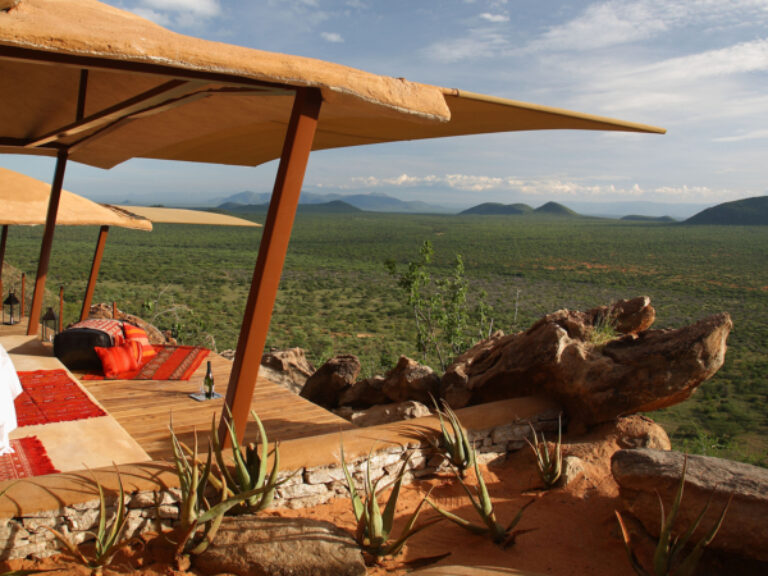
Saruni Samburu
There’s only one lodge within the Kalama conservancy, immediately to the north of Samburu Reserve, and it’s likely going to be one of the most spectacular places you’ll ever stay. Built into, around and onto a huge granite outcrop, Saruni Samburu is almost invisible from a distance but the stunningly turned out rooms offer a cliff side view over what feels like half of northern Kenya.
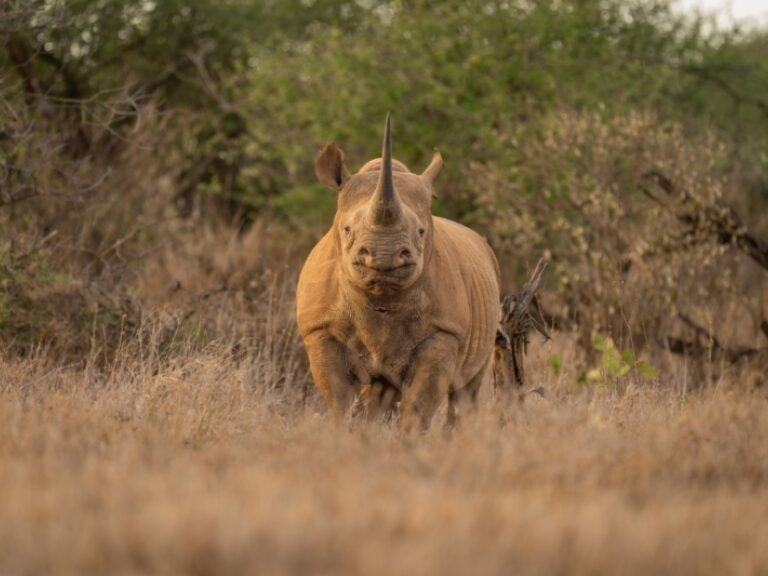
Lewa Conservancy
Lewa, in the Laikipia plateau area, is perhaps the most famous of all Kenya’s conservancies. And for good reason: this is safari to order. Want to see a black rhino? No problem. One of the superb guides will manage to find one. Lions, cheetah, elephant. They are all found here in abundance.
And it’s not just the wildlife that’s outstanding. The landscape is cinematic in its scope. Rolling sun bleached grasslands, table flat acacia trees, meandering rivers and a backdrop of the glinting glaciers of Mt Kenya.
The other great thing about Lewa (and this is common to all the Laikipia area conservancies) is exclusivity. If you’re not a guest of one of the handful of lodges then you can’t go on a safari here.
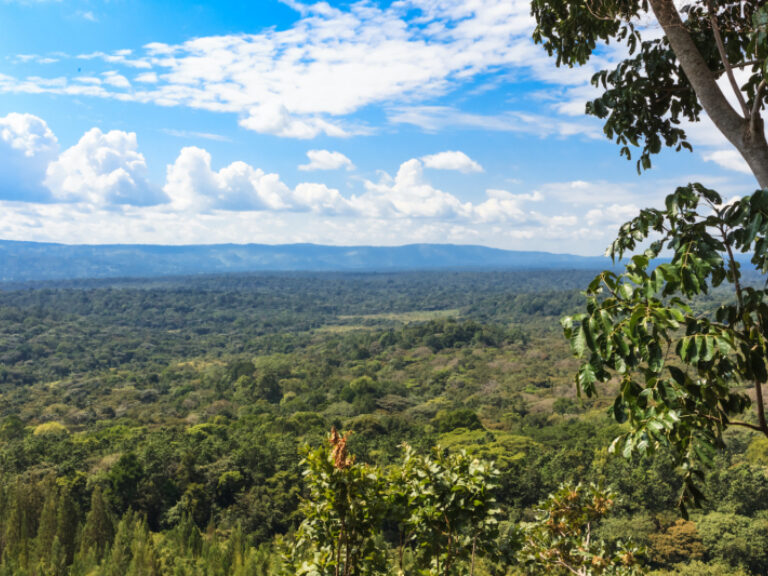
Kenya’s safari hidden gem
Just north of the equator in far western Kenya, is Kakamega Forest — Kenya’s only tropical rainforest. The land here is wet, green and intensely cultivated with a mix of subsistence farming and large tea estates. In amongst all this though are a few pockets of the dense rainforests that once covered large parts of western Kenya.
The Kakamega Forest Reserve is a fine example of this kind of forest and interesting walking safaris here reveal bird and primate life that has more in common with the forests of Uganda and the Congo than anything you’ll see on safari in Kenya. Wander the forest’s network of trails and take in the huge variety of flora and fauna it supports, including hundreds of bird species, some of which are not found anywhere else.
In my opinion, Kakamega is one of the most delightful places in Kenya, but yet hardly any tourists know of its existence. It should be a must visit for any ornithologist or herpetologist. As well as birds, reptiles and primates, I found the visit to the old mine shaft to look for bats especially memorable.
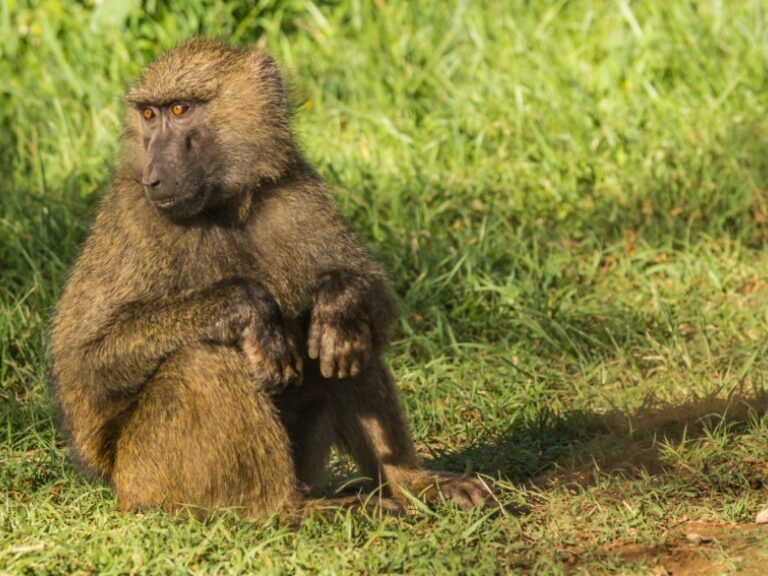
Up close and personal with baboons
Laikipia is known for its rhino conservation, but my own personal highlight in this area wasn’t the rhinos. Rather it was the day I spent with a biologist in very close proximity to around 200 habituated baboons. Having a huge male baboon shove its way past you as it bares its teeth was an experience easily on a par with gorilla and chimpanzee encounters in East Africa. The other nice thing about this particular experience is that it doesn’t involve staying inside an expensive conservancy but rather you are hosted by a grassroots Maasai womens’ project. And hardly anyone – even other Kenyans – know about it!
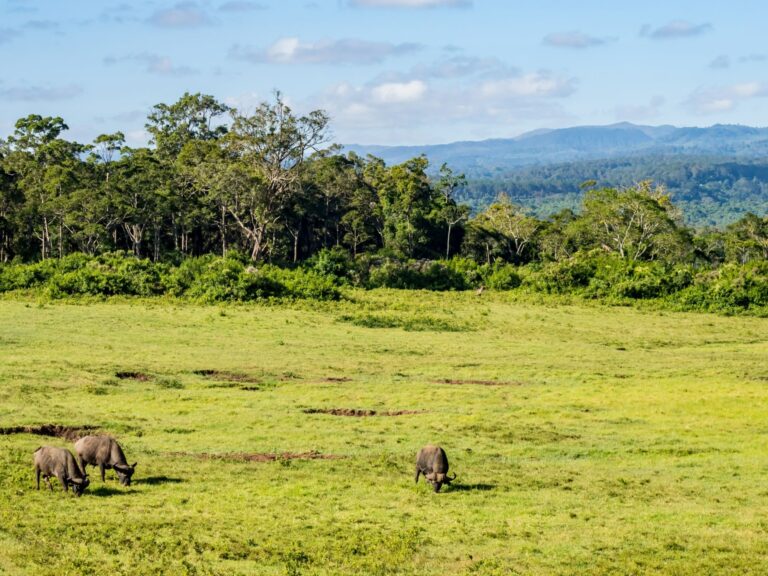
Hiking in Aberdare National Park
A world away from the African safari image of savannah grasses and drooling sunsets, the Aberdares consists of two different ecosystems. A high, cold and often bleak moorland and, below that, dense tangled montane jungle.
The wildlife here is a little different and a little harder to spot. But elephants are very common as are big grumpy buffalo. There are also montane species you won’t see anywhere else including bongo antelope, bush pigs and melanistic leopard and serval.
Unusually among Kenyan national parks, you can also get out of the vehicle here and enjoy long, lonely hikes over the moorlands: I have really enjoyed the sensation of trudging across the bleak moorlands in cold afternoon drizzle while always keeping a beady eye out for roaming buffalo.
The park also has some history. In 1952, a young English lady named Elizabeth was staying at the famed Treetops Lodge here (today’s version is actually a reconstruction of the original) when it was announced that her father had died. And so it was, that on a remote Kenyan mountain slope, that young lady became Queen Elizabeth II. Many years later her eldest grandson, and future king, proposed to Kate Middleton in a small wooden fishing cabin in a spot not so far away from where his grandmother became Queen.
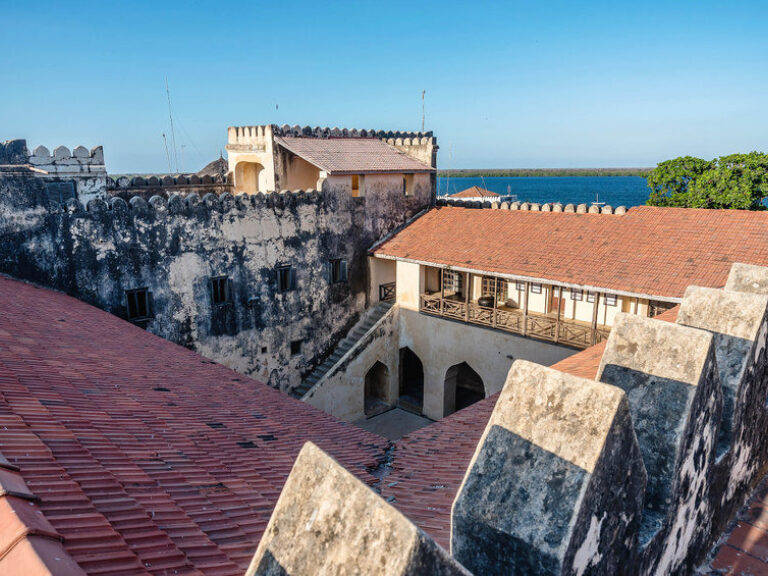
Post-safari beach time
If time allows I highly recommend you find a couple of days to wash away the safari dust on Kenya’s palm-fringed coastline. The country has many beautiful beach destinations but the standard itineraries tend to focus on Diani, south of Mombasa. My vote goes for the underrated Lamu archipelago, and in particular the old Swahili trading town of Lamu, which always leaves me enchanted.
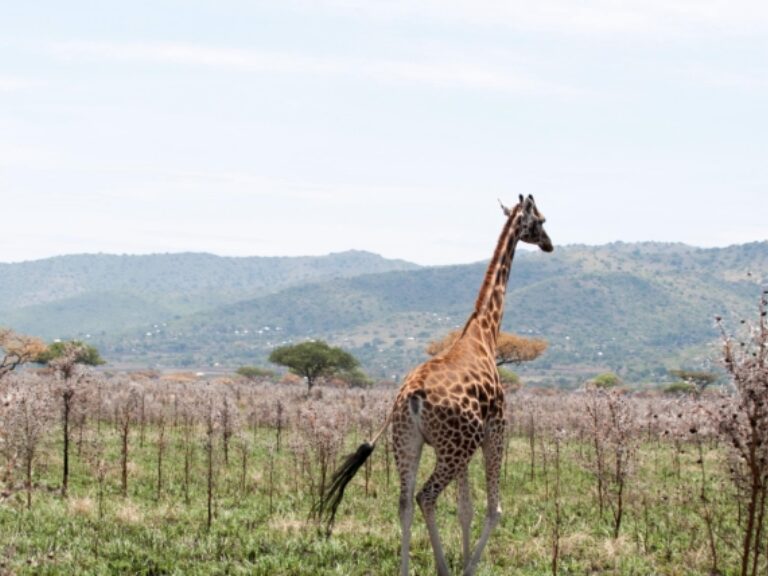
Get seriously off-the-beaten track
Another of western Kenya’s unsung wildlife highlights is the seriously off the beaten track Ruma National Park.
This park is a mixture of dense forest and thick, tall tropical grassland where large numbers of rare, and very beautiful, Rothschild giraffe can be found, as well as the massive, elegant roan antelope. On any visit here you will see plenty of these two creatures.
What you almost certainly won’t see however are the park’s rhino population. Rangers have told me there are quite a few here – all translocated from less secure areas – but in my three visits I’ve never seen any and the rangers tell me you have to be very lucky to see one.
But there’s something else you won’t see here either: other tourists. Once again I think that each time I have been I have had the entire park to myself and this makes for a very compelling reason to make the trek out here.
There are no facilities for tourists within the park, and only a few specialist operators will offer Ruma in a safari itinerary.
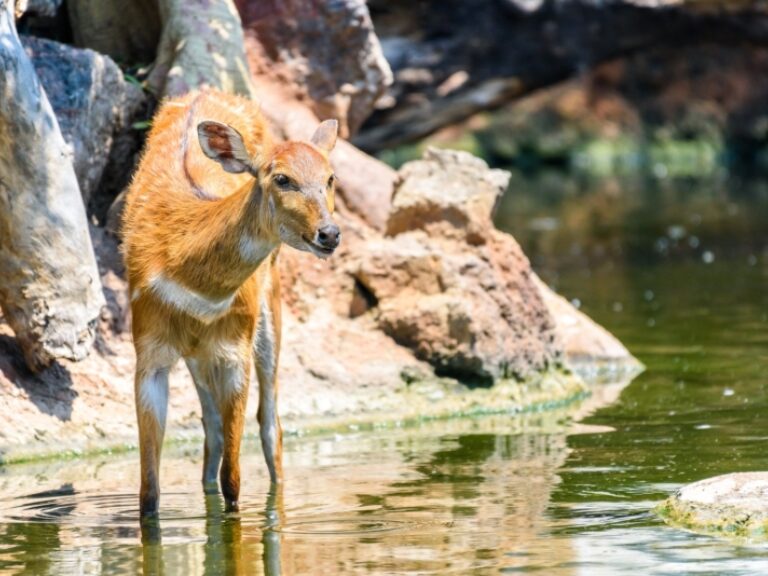
Stretch your legs at Saiwa Swamp
Kenya’s smallest national park, Saiwa Swamp, out in the far west near the farming town of Kitale, is another of Kenya’s underrated delights.
The park encompasses one small area of swamp surrounded by farmland and is home to a rare population of sitatunga antelope, an unusual semi-aquatic species that in Kenya can only be reliably seen here.
The park also offers stunning birdlife. My favourite thing about this park is that you can only visit on foot, following the walking trails and boardwalks that run through the park. It’s a delight to break free of the safari vehicles and stretch the legs.
In addition you will almost certainly have the entire park to yourself. I’ve been three times and never seen another person here. One word of warning though: Be careful of flash floods during heavy thunderstorms. I was once caught out by one of these: the waters rose very quickly, drowning the footpaths and I had to wade thigh-deep back across the marsh while trying very hard not to think about all the creatures that might live in a remote African swamp…
There are no facilities for tourists within the park, but nearby Kitale has plenty of fairly-priced hotels.
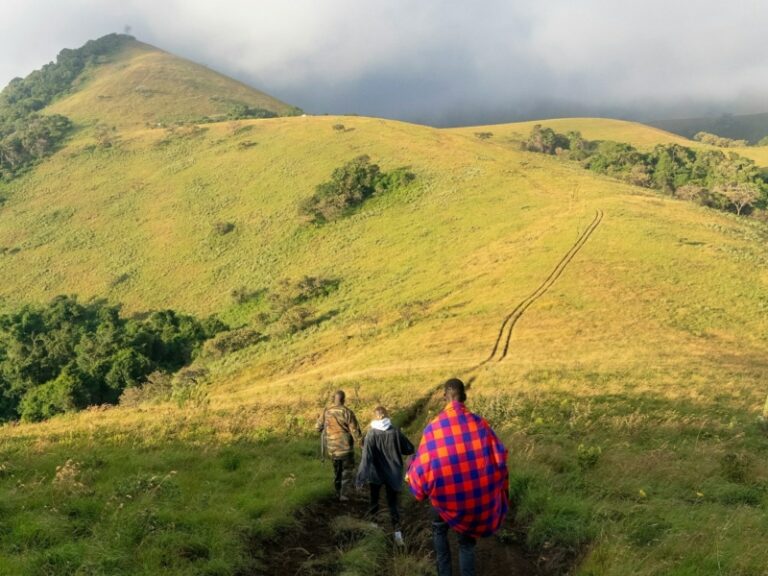
Chyulu Hills National Park
Bursting up above the hot red plains of Tsavo and Amboseli National Parks, the Chyulu Hills are a little visited, little known paradise of rolling green hills and forest.
The wildlife can be a bit hit and miss but there are still plenty of grazers around plus there are opportunities to mingle with Maasai herdsmen, walk across pretty landscapes and visit lava tubes.
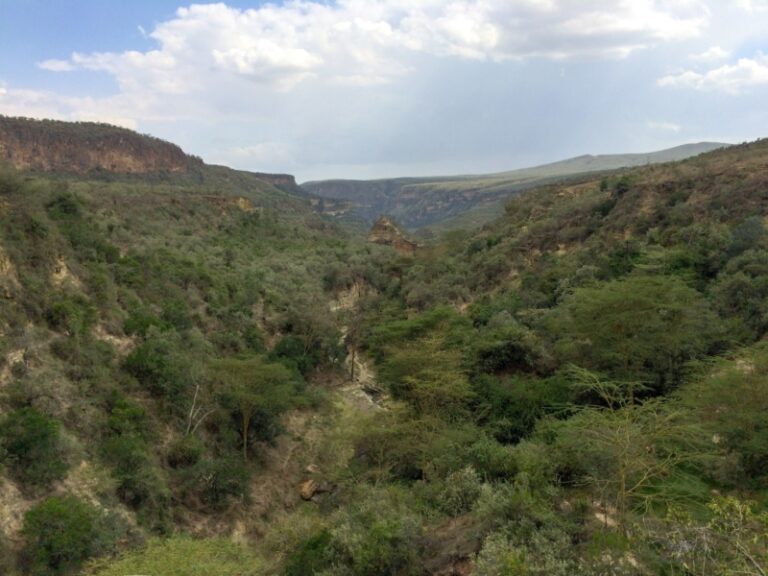
Hells Gate National Park and Lake Naivasha
If you’re looking for a quick escape from Nairobi then Lake Naivasha and the neighbouring Hells Gate National Park is just a couple of hours from the city and a great place for a quick wildlife fix.
Lake Naivasha is a huge freshwater lake famed for its birdlife and hippos while Hells Gate is a small savanna park with plentiful antelope, zebra, giraffe and baboons. The nice thing about this park is that you can walk or cycle through it (very battered bikes can be hired) which allows you to get close to wildlife without the barriers of a vehicle. If you’re a climber then you can also arrange to scale some of the rock spires within the park.
There’s no facilities for tourists within Hells Gate but a massive array of places to stay and eat around the shores of Lake Victoria.
I recommend you avoid visiting during weekends, when it can seem as if half of Nairobi is out here.
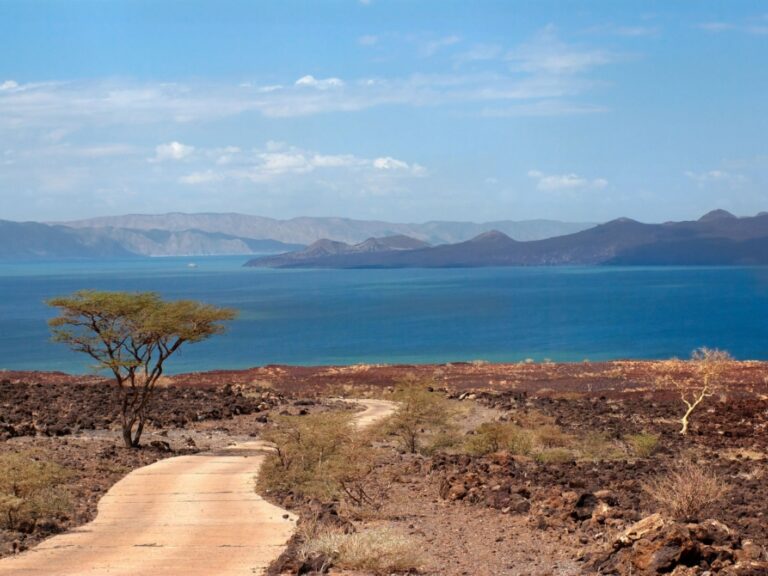
Chalbi Desert and Lake Turkana
If you're ready to test your adventurous side, look north to the Chalbi Desert, east of the stunning and remote Lake Turkana where dry, cracked earth meets lush oases surrounded by palm trees and herds of zebra, giraffe, ostrich, oryx and hyena come to drink.
This arid part of northern Kenya is largely unvisited, even by domestic visitors. It’s unique, otherworldly landscape is believed to be formed from a lake that dried thousands of years ago. You’ll find volcanic hills in the background and desert wildlife in the sand dunes.
Thrill seekers can take part in adrenaline-filled activities like sandboarding and dune racing in 4WD vehicles alongside local residents on camelback, nights spent stargazing and perhaps even a swim in Lake Turkana, itself in a national park with good game sighting opportunities. It’s far from easy to get to Chalbi — it’s 425km north of Nairobi — so expect to fly in and then use a local driver who knows the roads and terrain (and an appropriate hardy vehicle).
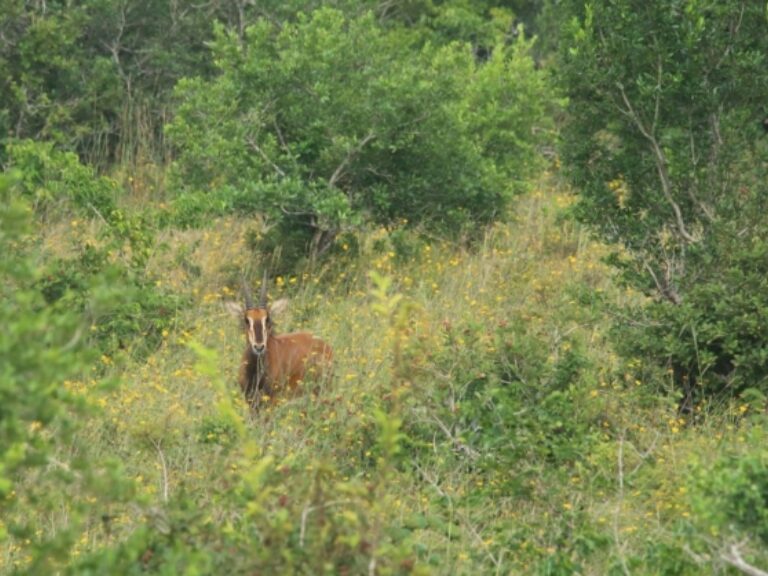
Shimba Hills National Reserve
Just inland of the popular Diani Beach, Shimba Hills makes for a brilliant short safari from the coast. The densely vegetated park has a large and visible elephant population and is the only place in Kenya where the stately sable antelope can be seen.
There’s also plentiful warthogs, baboons, vervet monkeys, buffalo and some introduced giraffes. Half and full day safaris can be easily organised from most of the beach resorts south of Mombasa. It’s a good bet for a family safari.
Masai Mara National Reserve
Mara north conservancy, samburu game reserve, tsavo east & west national parks, loita hills, kakamega forest reserve, aberdare national park, lamu island, ruma national park, saiwa swamp national park, lake naivasha, chalbi desert.
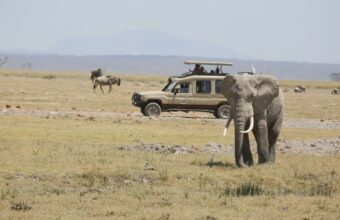

Wings Over Kenya Flying Safari
Kenya's most exclusive safari experience.
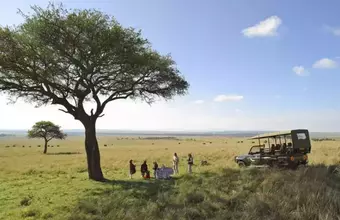
Affordable Masai Mara Safari
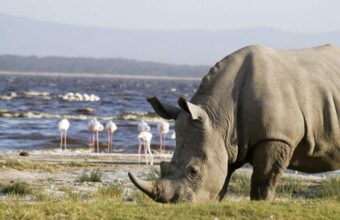
Lions, Rhinos, Hippos & More
Lakes naivasha & nakaru & masai mara.
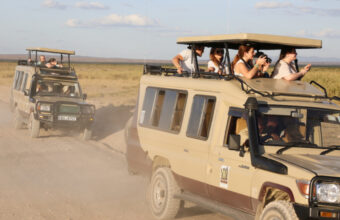
Essential Kenya Safari
See the best of kenya in one week.
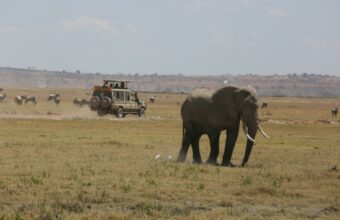
Highlights Of Kenya Private Safari
See the very best of kenya on this exclusive adventure.
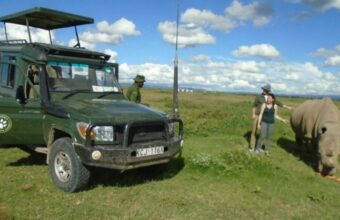
Ol Pejeta Wildlife Sanctuary Safari
Two day safari from nairobi.
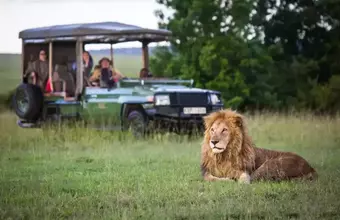
Enchanted Kenyan Safari
Samburu, Rhinos and Mara Safari
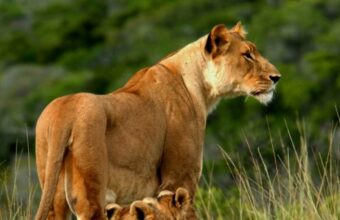
Tsvao & Amboseli Safari
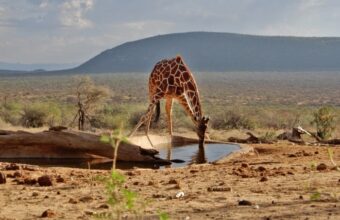
Samburu Safari From Nairobi
Featured kenya safaris.
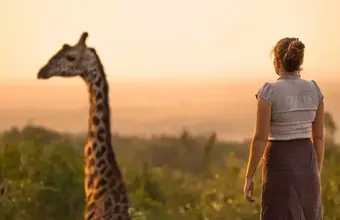
Kenya Safaris
Private safaris, custom itineraries.
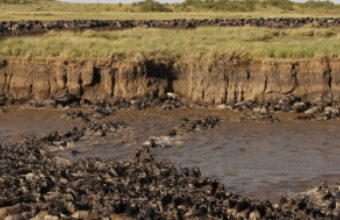
Kenya Safaris & Holidays
Safaris to unique accommodations, kenya's best safari parks, kenya’s most popular safari parks and lesser-known hidden gems.
Kenya proudly boasts of an impressive network of protected spaces made up of 65 national parks and reserves as well as dozens of private and community conservancies. Together these cover a huge proportion of Kenya’s diverse landscapes and provide a home for animals as large as an elephant and as tiny as an elephant shrew.
Some parks, such as the Masai Mara and Amboseli , are rightly world famous. Other parks, such as Meru National Park or Kakamega Forest Reserve, barely make a blip on the mainstream safari circuit but are every bit as rewarding (and much quieter!) then the big name parks and reserves.
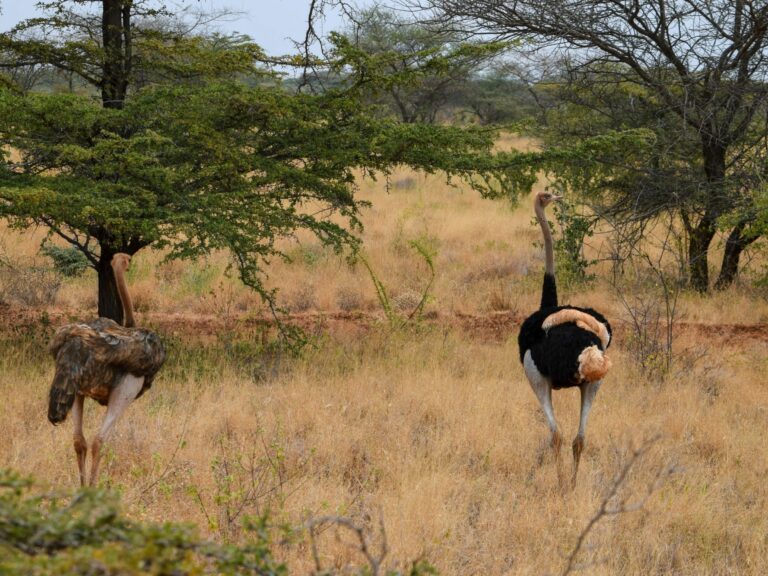
Best for tranquil, crowd-free safaris
Meru, the country’s forgotten national park, is easily one of my favourite of all Kenya’s safari parks. This was once one of the most popular parks in the country but during the 1980s, when Kenya was going through a rough political patch and instability overwhelmed some parts of the country, Meru turned into a hotbed of poaching.
Security and stability have long since returned, yet somehow this park never returned to its former fame. But for those in the know – and that now includes you – Meru National Park is safari gold.
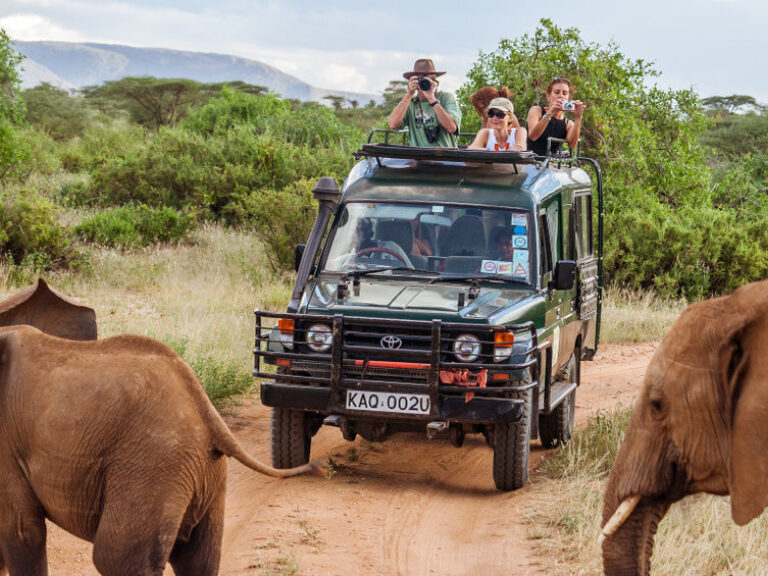
For the classic – if busy – Kenya safari
The very essence of an African safari landscape, the Masai Mara stretches along the Kenya-Tanzania border and forms the northern fringe of the greater Serengeti ecosystem (most of which is in Tanzania ).
This is the part of Kenya in which I have spent the most time (months and months if I added it all up), and was the scene of one of my best ever travel experiences. Some years ago a Maasai friend and I set out on a five week hike that took us across the entire Mara ecosystem. By day we walked alongside the wildlife and Maasai herders. By night we camped out under the stars and slept in traditional Maasai villages. An unforgettable adventure!
This is the place to see large prides of black-manned lions, bellowing elephants, grumpy buffalo and a pick ‘n’ mix box of antelope and gazelles. And that’s before we even touch on the smaller creatures and huge array of birds. But, above and beyond all else, the Mara is renowned for the spectacular wildebeest migration .
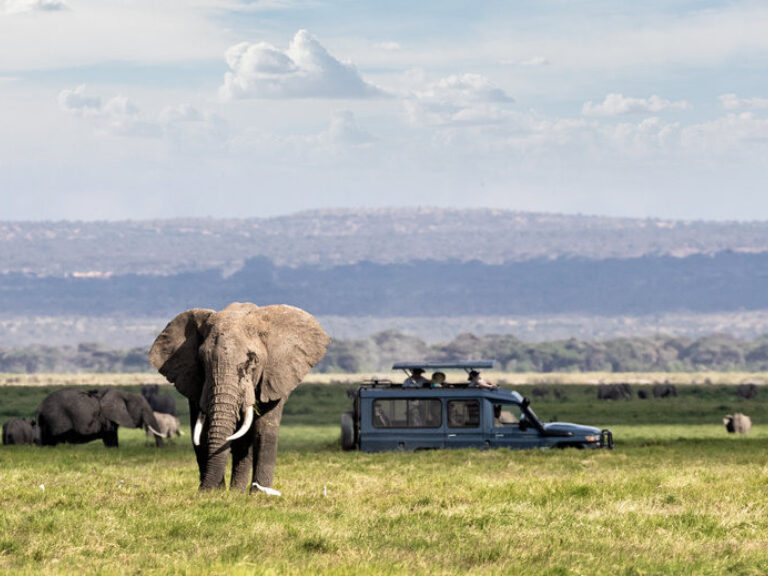
For elephants & Kilimanjaro views
Amboseli National Park is the postcard park of Kenya. This is where those photographs are taken of elephants with a backdrop of the (fast melting!) glaciers of Mt Kilimanjaro. I have spent many dreamy mornings parked under an acacia tree, a thermos of coffee in hand watching the rising sun tinge the snows of Kilimanjaro a pinky-red.
The elephants and the scenery are the real highlights of this park. In dry periods they flock here from miles around to quench their thirst in the swamps and pools that splash the dusty landscape in greens.
Another big reason to visit Amboseli is the chance to see conservation in action in the conservancies and other environmental and community projects surrounding the park.
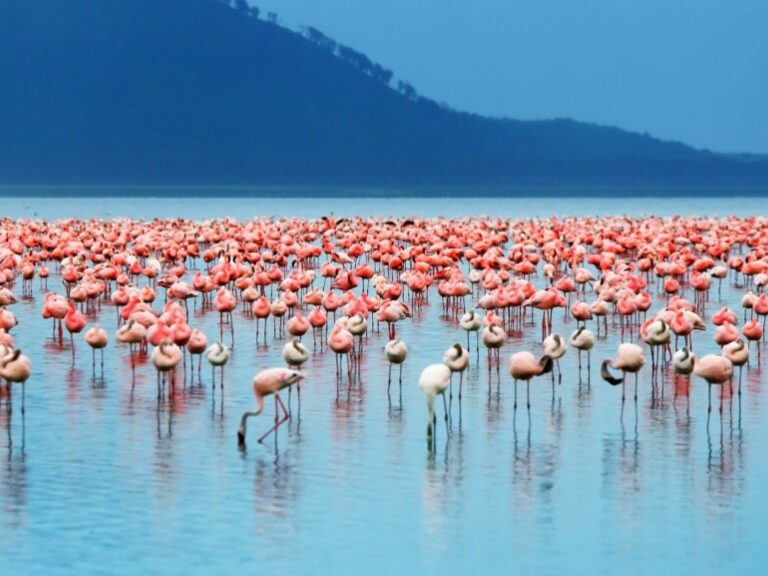
For wetland safari & birdwatching
Just 5 kilometres from the big city of Nakaru, Lake Nakuru National Park’s accessibility makes it one of the most popular Kenya safari hotspots. It’s centred on the large Rift Valley soda lake of the same name, but also encompasses fringing grasslands, acacia woodlands and rocky escarpments.
The park is best known for its sometimes huge flocks of flamingos and a large rhino population. Back in the 1990’s, Lake Nakuru was the first place where I saw a really huge flock of flamingos. I’d seen the odd handful before, but the thousands upon thousands I saw here on that day sticks in my memory. The smell (ah yes the smell!), the noise, and of course the searing pink colours; It was one of the moments that made me fall in love with Kenya.
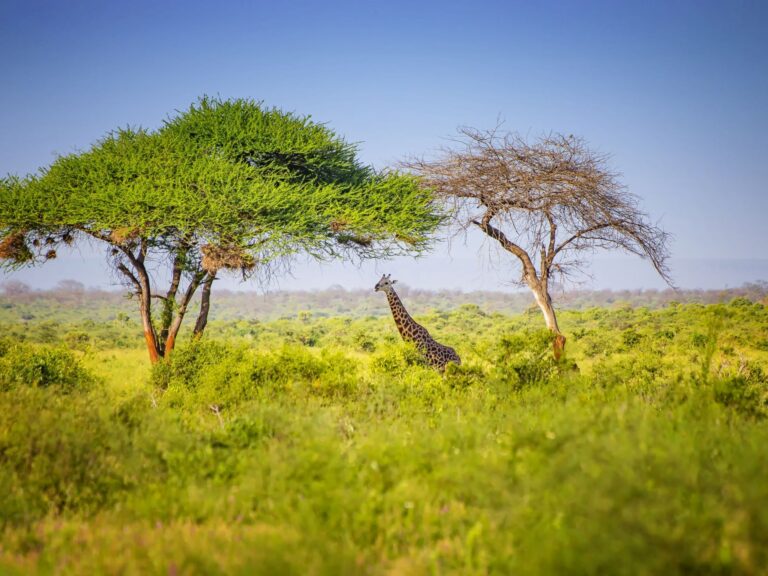
Best for wide open spaces
Combined, Tsavo East and West National Parks cover an enormous swathe of acacia scrub Kenyan wilderness. Tsavo West alone (the bigger of the two parks) covers an area greater in size than Wales, or two and half times the size of Yellowstone National Park.
The two parks are separated from each other by the Nairobi-Mombasa highway and are easy to reach from either city.
Despite being directly adjacent, the two parks are radically different from one another with the green hills of Tsavo East a marked contrast to the red soil and volcanic landscapes of Tsavo West. Because of their diversity and sheer size, I strongly recommend you devote enough time to the parks if you’re going to visit them. The rushed two-day safaris from Mombasa (or Nairobi) simply don’t allow enough time to get much out of a visit.

For world-leading conservation
The Laikipia plateau area in central Kenya is one of the most exciting places in African conservation. This isn’t a single national park or reserve, but rather a network of interlocking private and community-run conservancies where people, livestock and wildlife live together to the benefit of all.
Laikipia hosts all the classic East African safari mammals but is best known for its rhinos, including the critically endangered northern white rhino, only two of which are left alive. Both are female and so, tragically, this is a species awaiting extinction. They can be seen at the Ol Pejeta conservancy.
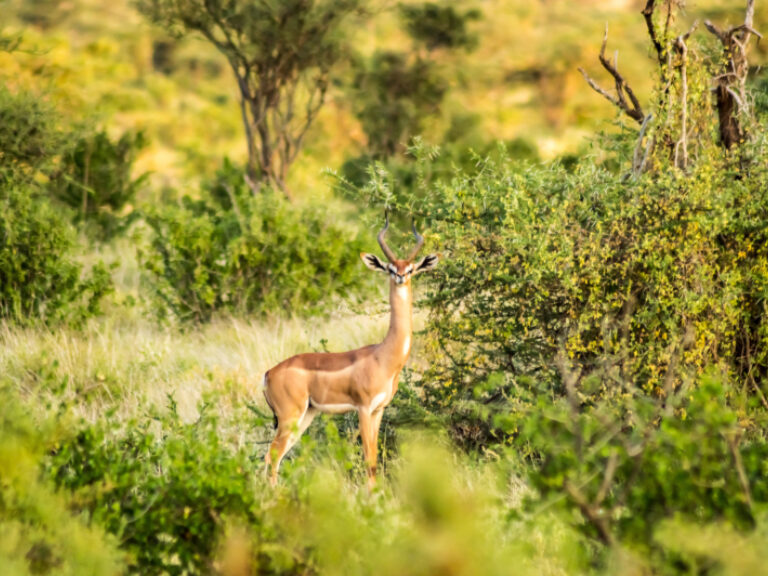
Kenya’s remote far north
Samburu, Buffalo Springs and Shaba National Reserves are three interconnected reserves on the edge of northern Kenya’s vast semi-desert wilderness.
Far removed from mainstream Kenyan life, these northern regions have a wild reputation. The landscape is harsh with endless sunburnt plains of acacia thornbush out of which rise the occasional fertile and densely forested mountain peaks, ranges, table lands and volcanic plugs.
Elephants, in particular, are the main event here. There are large herds who can migrate huge distances in search of water.
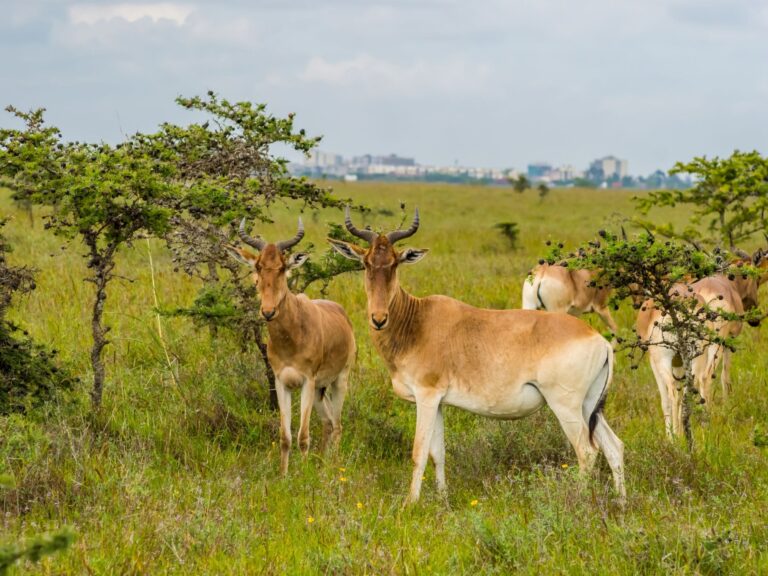
Safari in the big city
While most capital cities have their collection of ornate parks filled with neatly cut lawns, manicured flower beds and perhaps a boating lake, Nairobi has gone one step further.
Its biggest ‘park’ is in fact a 117 square kilometre swathe of undulating savannah grassland and acacia woodland. And while it doesn’t have a boating lake, it does have lions. And buffalo. And rhinos. All of which means that it’s probably not such a sensible place for an after work stroll.
It’s a fabulous safari destination but is woefully overlooked by international visitors to Kenya. This is a shame, because Nairobi National Park is an excellent safari location in its own right. I have been many times, often just for a quick half-day drive from the city. This was the place I first witnessed the thrill of a hunt: a cheetah racing, but failing, to grab dinner for her cubs.

A pair of ostrich in Meru National Park
Kenya safaris: Need to know
Everything you wish you'd known before you booked.
My first Kenya safari was in 1994 and I’ve been coming back pretty much every year since. Here’s what I’ve learned over the years about the best way to plan and book a safari in Kenya.
Mix up your itinerary
My single most important tip for Kenya safari first-timers is to avoid the mistake of non-stop game drives. Standard tour operator itineraries shuttle you from park to park with a gruelling schedule of game drives. Yes, this is the best way of seeing large mammals up close, but the bumpy tracks, early starts and long hours quickly exhaust even the most ardent wildlife-watcher. And there is so much more to safari in Kenya that you’ll miss from racing around in a jeep. Break it up. Look for operators who offer bush walks, village visits, and conservation projects. Or simply take an afternoon or two to sit back under a tree enjoying the sights, sounds and smells.
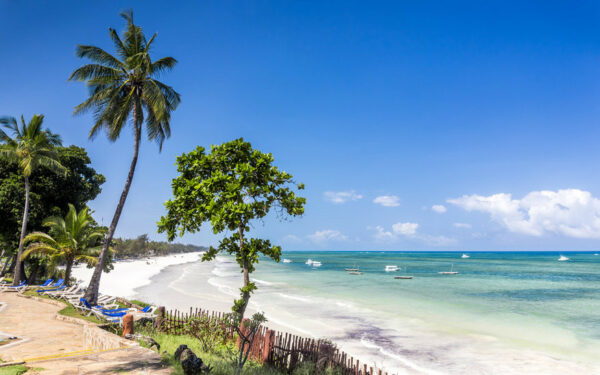
Many visitors to Kenya devote their entire trip to going on safari…
Don’t miss Kenya’s many hidden gems
Most standardised Kenya safari itineraries reduce the entire country to the blockbuster highlights: the Mara, Amboseli, Lake Nakuru… maybe Tsavo and Samburu if they’re feeling adventurous. This does a great disservice to the country’s true diversity. There’s so much more to a Kenya safari than racing around the savannah chasing the big five and I’d strongly advise you find time to visit some of Kenya’s numerous hidden gems.
For instance, out in the far west is Kakamega Forest Reserve which has more in common with the rainforests of Uganda and the Congo than the classic Kenya landscape. In my opinion this is one of the most delightful places in Kenya, yet hardly any tourists know of its existence.
Another personal favourite that’s a world away from the classic Kenya savannah is Aberdare National Park where dense tangled montane jungle gives way to a high, cold and often bleak moorland. Unusually among Kenyan national parks, you can also get out of the vehicle here and enjoy long, lonely hikes over the moorlands.
But that’s not it: Saiwa Swamp, the Chyulu Hills, Hells Gate, Ruma National Park, and many more that rarely feature on the mainstream Kenya safari circuit but are usually accessible on a self-drive safari, or with more specialist safari operators.
Get out of the safari bubble
Many safari goers, especially those on a high end tour just bounce from one heavenly safari camp to another. Sure, you live the Hollywood Africa dream but you’ve not really experienced real Kenya. Instead, hop on a bus and head out to one of the numerous small market towns where most Kenyans live. You’ll experience a totally different side of the country and it’s one that will stay with you long after the sundowner safari drinks fade from memory.

Kenya off the beaten track
The parks and reserves covered in my Kenya safari guide are only the best-known and most visited of the country's numerous protected and other natural areas…
Stay in at least one conservancy
National parks, reserves and conservancies are mentioned a lot in this guide, but just what is the difference and why does it matter?
A national park or reserve is a government or local council run protected area. Most of the best-known protected areas in Kenya fall into this category.
These areas are run solely for the benefit of wildlife and tourism, sometimes at the expense of local people. Tourism in these areas creates jobs, but locals are often forbidden from entering these protected areas other than for work reasons and communities were often (but not always) removed from their land when the parks and reserves were created. Corruption can be a problem with the money generated by these parks not always going where it should.
A conservancy is a different affair. A conservancy is normally located on either communal land owned by the community as a whole or on private ranch land and has no official government status. On a community conservancy the tourism stakeholders (i.e. the safari camps) lease the land from the local communities on the condition that the land is managed in a manner that is of benefit to both people and animals. The (normally very high) fees you pay to stay in a conservancy go toward paying the land leasing fees as well as various community and environmental projects.
Other conservancies may be located on private ranchland, in which case they have to make enough money for the landowner to financially justify turning his land over to wildlife conservation over cattle ranching.
In other words, a conservancy is run for the benefit of both wildlife conservation, tourism and the needs of local communities (in many cases local people are allowed to continue to graze their cattle on a conservancy but in a controlled and sustainable manner).
All of this means that staying in a conservancy is not just a great safari experience but it’s also very good news for conservation!
Do a homestay
For a cultural experience you’ll never forget, try spending a night at a Maasai homestay near the Masai Mara. Finding authentic, community-run homestays can be a bit of a minefield. I can recommend Sekenani Maasai Development Project (Semadep) but there are others – make sure you book with a community owned and operated outfit, and check reviews carefully.
Caution needed: "Human safaris"
Denise Carnihan
In my opinion, one of the big problems with the safari industry is the way it prioritises seeing wildlife over having meaningful connections with local people. In fact, other than being served by their guides, drivers and camp employees, a typical safari-goer might not have any interaction with a local at all. To me, this is the exact opposite of how it should be done! In my experience, a good trip to Kenya isn't just about seeing wildlife: it should put intimate, authentic interactions with local people at the heart of the whole experience. You can make genuine connections and real friendships as you sit around, sharing stories, laughing and learning from each other.
On the other hand, mainstream Kenya safaris are often sold with "village tour" or even "slum tour" add-ons. These "goldfish bowl safaris" as I call them are unethical and nothing short of exploitation. They violate the privacy, integrity and dignity of local communities and undermine sustainable development by perpetuating a myth of backward, poverty-stricken people. The traveller thinks they're doing the right thing by getting some cultural interaction, but in reality it's deeply damaging. I strongly encourage visitors to avoid anything that feels contrived, and look for trips that put real people at the heart of the experience, rather than an afterthought.
How to plan & book a Kenya safari
There are three broad categories of safaris in Kenya.
The first and easiest option is to book a week(s)-long, multi-stop itinerary through a tour operator, either locally-based or international. This provides the most hand-holding and support for cautious visitors, plus more protection should things go wrong. The potential downside is getting shunted onto one of the more formulaic itineraries and simply following the crowds around the most popular parks. If you book a full tour with an operator, try to find a genuine specialist and ask about visiting some of the lesser-known locations mentioned in this guide.
Secondly you can simply show up and book a safari tour once in-country from the hundreds of operators in Nairobi. There’s nothing inherently wrong with doing it this way but I strongly advise you don’t just book something in the street. Do your homework first and find a reputable, responsible operator. Things to double check include whether park entry fees are included in the price, vehicle type (avoid cramped minibuses), and accommodation type.
Thirdly, and probably my recommendation for all but the most cautious of visitors, is to book the accommodation yourself, rent a car (or a car plus driver), and head out solo. You can take your own camping gear or book into lodges or camps (booking ahead is essential!), or mix camping with more comfortable nights in lodges. I strongly advise renting a vehicle plus driver. It’s often cheaper plus you get an unofficial local guide who knows the ropes. A good driver will become a cultural and language translator, wildlife guide, fixer, and general guardian angel.
Aim for shoulder season if possible
High season in Kenya is the peak summer months of July to September, before the rains begin. In my experience the best time to visit – especially in the busier parks – is either June before the crowds arrive or September-October as the crowds are thinning out, wildlife viewing is excellent and temperatures are ideal.
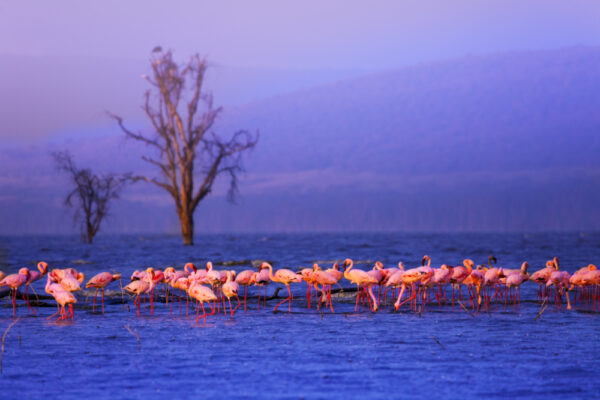
The best time to visit Kenya for safari
January & FebruaryThis is a hot and dry period…
Be prepared to splash out!
There are almost as many different ways of doing a safari as there are stripes on a zebra and how, when and where you safari makes a huge difference to what you pay. Expect to pay anything from $150 to $1,000+ per person per day.
You can find very low budget two or three day safaris to the Mara from around $250 all in, but these are generally rushed, crowded and uncomfortable. If you’re looking to shave off some costs without compromising on the experience, consider doing a DIY camping safari with your own vehicle and driver.
My other big Keny safari tip is to spend as much as your budget allows on fewer nights in better conservancies and camps. Packing more into fewer days gives you much greater bang for your buck.

Kenya safari costs
For a multi-day, mid-range safari visiting some of the big name parks and reserves then you’re looking at around USD $300-600 per person, per day…
Kenya safari FAQs
Your questions, our expert answers, is it safe / a good idea to rent a car in kenya and drive yourself around, or is it better to join a tour.
Yes, it's perfectly easy to do a self-drive Kenya safari . When you ask if it's "safe" that depends a little on what you mean. If you mean are there bandits, car jackings, dangers from wildlife, etc, then no you are quite safe. Instead the danger is from other drivers, as the driving conditions can be a little 'hectic' in places and accidents are common.
I'd recommend hiring a car with a driver, which can be a cheaper and, in my opinion, a much better option. A good driver will know the lay of the land, the driving conditions, best places to stop for lunch, etc. And they are often knowledgeable of the wildlife. A good driver will be both your driver and guide, and probably become your friend!
Almost any tour company in Nairobi or Mombasa can organise a private vehicle with a driver. Standards and prices vary hugely, so explain to the tour company exactly where you want to go and get in writing exactly what is and isn't included. Pay particular attention as to whether fuel, and the drivers food and accommodation is included in the rates. Also make sure you're booking the right vehicle: a 4WD may be needed for more remote areas.
Where’s the best place to see the big five in Kenya?
Seeing all the big five (lion, leopard, elephant, buffalo & rhino) in one park is hard. Only Lewa and some of the conservancies in Laikipia can honestly claim to offer easy sightings of all five. But, who cares! This fixation on racing around to tick off just five species is an anachronism from colonial-era big game hunting days. There’s so much more to Kenya’s wildlife and the modern safari experience.
We're visiting the Masai Mara but would like to visit another area on safari in Kenya. Can you recommend anywhere very different to the Masai Mara to see different wildlife and landscapes?
The most common combinations for a short add-on to the Masai Mara are Amboseli , Laikipia or the Samburu area.
For your requirements of a different habitat and wildlife then without doubt I would suggest Samburu National Reserve. This is a much drier and hotter area than the Mara with different vegetation and animals. And, even the animals you might have seen in the Mara are different up here with different species of giraffe, zebra and ostrich all present (and in my opinion all more beautiful than the kinds in the Mara). The park is also superb for elephants.
Samburu, though still popular, is notably quieter than the Mara and, once away from the river, it's easy to feel you have the place all to yourself (and especially if you go into the co-joined Buffalo Springs and Shaba reserves). Depending on when you are there you will find direct flights from the Mara, but otherwise will have to go via Nairobi. If you're driving it's a long way – a 10 hour non-stop drive, so flying is the better option.
Would you recommend staying at Elephant Bedroom Camp in Samburu Reserve, or at Sarara Camp in Namyunak Conservancy?
The quantity and ease of seeing the wildlife is better in Samburu Reserve than in the neighbouring Namyunak Conservancy (because the wildlife is drawn to the river running through the reserve). But there's not a huge difference in habitats or species between the two.
Elephant Bedroom Camp, in Samburu, is a fabulous, small camp. You'll see a lot of elephants and the owners are some of the worlds foremost elephant experts.
In Namyunak Conservancy, Sarara Camp is one of the most exclusive – yet low-key – camps in Kenya. There's slightly less wildlife than in the reserve but it's very close to the reserve and safaris from Sarara often enter the reserve.
The bonus with Sarara is exclusivity. You and the other camp guests will have the entire place to yourself meaning no crowding around animals (though that's rarely a problem in Samburu).
Unlike in the reserve itself you can do walking safaris in the conservancy and there will be more interaction with local people. The final plus is that by staying on a conservancy you will be actively helping to fund private/community conservation initiatives, which isn't always the case when staying only in a reserve or national park.
Overall then, I would opt for Sarara Camp, but I suspect it does cost more, so it might come down to budget!
We are travelling with a large group of 5 families with 3-4 kids per family. What are the best budget friendly safaris in Kenya in July?
If most of the children in your group are very young, your options are fairly limited as the reality is that a longer, multi-day safari can be a bit much with very young kids. I first did a safari with my kids when they were five and two years old and although it was good I probably wouldn't do it again! Past the age of about eight or nine the safari experience gets much easier, as they'll will tolerate sitting in a jeep on a bumpy road for longer.
Do be aware that some safari camps don't accept children below the age of 12. These are normally the unfenced camps and it's done for safety reasons.
You will also need to keep in mind that you will either need several safari jeeps and to travel in convoy or a bus (and these aren't always allowed in some parks). Because you will be travelling with so many children I would suggest small safari camps which you can book out for your group alone. Some of these are more child friendly than others. Some possibiltles that I believe might work well for your group are: Maji Moto Eco Camp, Loita Hills Basecamp, and if you are interested in a Maasai homestay style experience then I'd suggest Semadep Camp, who can arrange homestays around the Masai Mara.
As for specific parks and reserves the Masai Mara area is good because there's a lot of animals to see everywhere you look which keeps children interested. Also good are Nairobi and Narok national parks because of easy access and good roads. Lake Naivasha is good for families too.
It would be easy to combine all these places into a 10 day safari and then you could maybe finish up on the beach (Lamu and Watamu are both superb for families).
Can you recommend any family-friendly camps/lodges in the Masai Mara?
I would suggest rather than staying within Masai Mara proper, stay in one of the conservancies that now fringe the Mara.
In the most basic of terms these are like private, community-run wildlife reserves. Conservancy operators lease the land from local people and each local family receives a guaranteed monthly payment. The conservancy also provides employment and sets up development projects. People continue to graze their cattle but in a more controlled manner. And in return, fences are removed and the wildlife encouraged to return to the lands they were once driven out of. The conservancies have been a great success both for wildlife and local people. And, for tourists, they offer a very exclusive experience and the world's finest safaris.
Each conservancy has only a handful of very discreet high end camps and only guests of those camps can go on a safari in the conservancy, which means crowds of vehicles around a lion are non-existent.
The conservancies also allow activities not permitted within the reserve such as walking (highly recommended), bush camping, night safaris, etc. This makes them ideal for kids because it breaks up the routine and allows a little more freedom.
The safari vehicles and guides used in the conservancies are absolutely the best in the game and the wildlife populations are the equal of the actual reserve. However, there's a catch (of course...), conservation like this doesn't come cheap. All of the conservancies are superb but some names are Naboisho, Mara North and Nashulai Maasai Conservancy (this last one being slightly cheaper than the others and lots of focus on meeting local people). As for actual camps you cannot go wrong with any of them. All the conservancy camps are superb. I'm a big fan of the Basecamp offerings, Off-Beat and Kicheche. All are a little less extravagant than some of the other camps.
If you want to only visit the reserve and not a conservancy then I suggest either Basecamp Mara, Oldarpoi or you could go for a Maasai homestay in Sekenani village. Expect basic but perfectly comfortable rooms but an amazing experience. Your kids would really enjoy this.
Is February a good time to visit the Masai Mara, or would June-July be better? What would be the differences?
February is a very good time for safari in the Masai Mara , but also very different to the experience in June and July.
It's hotter and drier in February and generally there are fewer other tourists. There will still be plenty of zebra and wildebeest around but these are the non-migrating resident herds, so they don't form the massive iconic herds that you might see on TV.
July is good because the migrant wildebeest are all normally in the Mara by then, but its also absolute peak high season so can be busy and expensive. June is perhaps my overall favourite month. Everything is green after the rains and it's nice and cool with far fewer tourists than July, but the first migrant wildebeest might start to arrive (it all depends on rains and the state of the grass).
In short, all three months are excellent but each is different so it might be best to go with whatever just suits your timings better.
I will be in Kenya in early March and am looking for a five day safari for wildlife photography and birdwatching. Where would you recommend for me noting it is the start of the rainy season?
Early March is still a bit early for the rainy season so you might just get the odd thunderstorm. If birds are your real interest and you only have five days then probably the easiest is to go down to the Masai Mara via the Rift Valley lakes of Naivasha and Elementia or Nakuru. This would give you a good range of avian habitats and species in a short space of time. Don't forget as well that Nairobi itself has some excellent birding in the various forests and parklands in and around the city. Plus of course, there's the superb Nairobi National Park where you will see a lot of wildlife and birds.
In this guide:
Typical prices for a safari in kenya, when to go on safari in kenya, things to do in kenya other than safari, best safari camps and lodges in the masai mara, about the author.
Stuart is an award-winning travel journalist covering safari, trekking and conservation in Africa for the Lonely Planet, Rough Guides, BBC, Bradt Travel Guides, amongst many others. He is the author of Walking With The Maasai , a journey through some of Kenya's lesser-visited Maasai lands.
Featured tours
Other guides you might like, south africa safari, an expert guide to safaris in south africa.
Anthony Ham
Wildebeest migration safaris, an essential guide to planning a migration safari in tanzania and kenya.
Hans Cosmas Ngoteya
Safari in zambia, an expert guide to zambia's best safari parks, camps & lodges.
Sarah Kingdom
Safari in tanzania, an expert guide to tanzania's best safari parks & camps, safari in botswana, an expert guide to botswana's best safari reserves, camps and experiences, where and how to see the big 5 on safari in africa, safari in africa, our travel writers' top africa safari picks, zimbabwe safaris, an expert guide to the best safari camps in zimbabwe, chimpanzee trekking, an expert guide to seeing chimpanzees in the wild.
Philip Briggs
Namibia safari, an expert guide to the best safaris in namibia.
Melanie van Zyl
Why horizon guides.

Impartial travel guides
Our guides are written by the leading experts in their destinations. We never take payment for positive coverage so you can count on us for impartial travel advice.

Expert itineraries
Suggested itineraries and routes to help you scratch beneath the surface, avoid the tourist traps, and plan an authentic, responsible and enjoyable journey.

Specialist advice
Get friendly, expert travel advice and custom itineraries from some of the world's best tour operators, with no spam, pressure or commitment to book.
Our guides are 100% impartial and are written by independent, professional travel journalists. We make money by charging carefully-screened travel companies to list their business on our website. Our advertisers have no influence on our editorial content and we never accept payment for positive coverage.
Read more about how we work and what we believe in here .
- Travel guides
- Work with us
Sitemap , Privacy Copyright © 2024 Horizon Guides
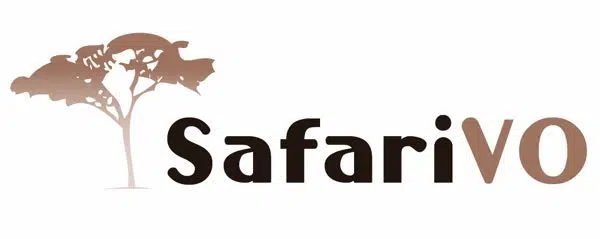
- Safari Afrique
- 01 70 23 93 40 Demande d'information
Kenya en novembre
En novembre, la petite saison des pluies offre de nombreux avantages
Kenya en Novembre
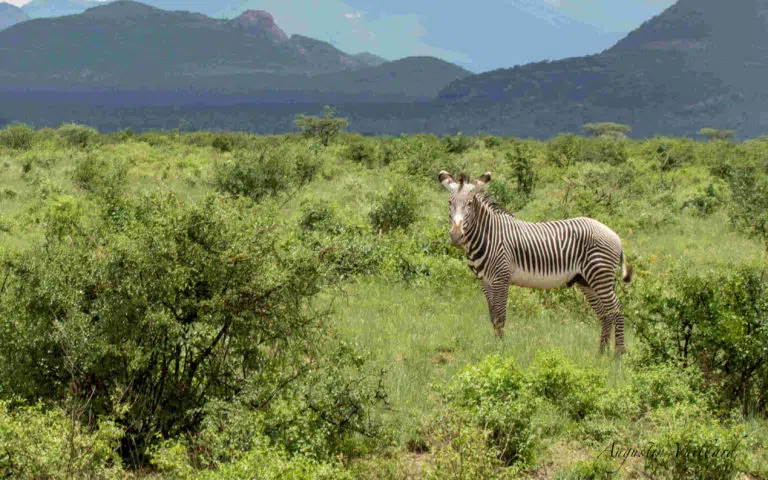
Kenya > Tanzanie
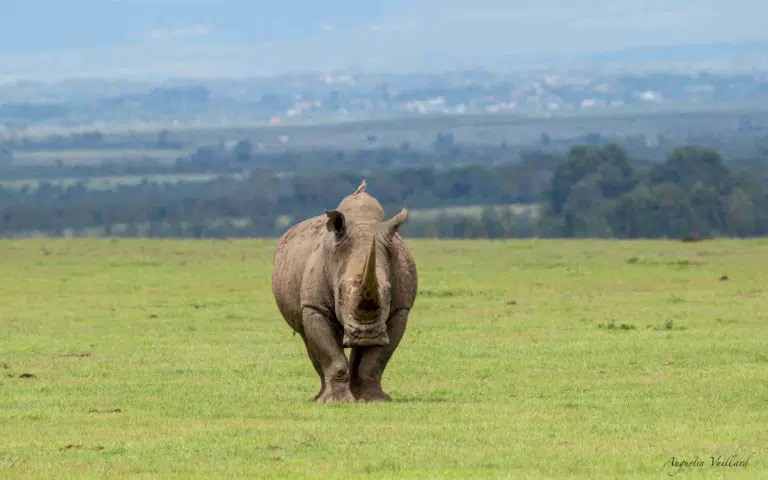
Partir au Kenya en novembre
Si vous décidez de partir au Kenya en novembre, vous profiterez d’une fréquentation touristique peu importante et de tarifs attractifs, ce mois étant celui de la petite saison des pluies. Elles viennent de l’océan et se déplacent sous forme d’orages qui se produisent parfois dans l’après-midi. Mais les pluies sont peu abondantes. Et, certaines années, inexistantes.
La nature est verdoyante avec de magnifiques paysages de savane : acacias en fleurs, concentration d’oiseaux près des lacs, belle luminosité…
Le temps doux de Nairobi se prête idéalement à la découverte de la capitale.
Dans le parc du Masai Mara, les températures se réchauffent et vous aurez des journées offrant de bonnes conditions pour observer les troupeaux d’herbivores (antilopes, gazelles, girafes…).
Au lac Bogoria, vous pourrez découvrir les geysers et les flamants roses qui viennent ici trouver une nourriture abondante : des crustacés qui sont présents dans les eaux sulfureuses du lac.
À Samburu, les quelques pluies viennent rafraîchir l’atmosphère et permettent de bonnes conditions d’observation des espèces animales qui ne se trouvent que dans les parcs du nord : le zèbre de Grévy aux rayures serrées, la girafe réticulée au pelage brun, le gerenuk, sorte d’antilope à long cou, l’autruche de Somalie… Les animaux profitent de la présence de la rivière Samburu qui traverse le parc, dans cette région très sèche.
Sur la côte du Kenya, le temps est appréciable avec des températures douces et une brise apportée par le kaskazi, cet alizé du nord-est.
- Mentions Légales
- Gestion des cookies
COMMUNICATION
Travel , Destinations
Kenya Safari Destinations – 10 Must Visit National Parks and Reserves
November 28, 2023
Kenya , known as the jewel of East Africa, is a country blessed with diverse landscapes and abundant wildlife, making it a premier destination for safari enthusiasts. From vast savannahs to lush forests, Kenya offers a captivating array of safari experiences.
Kenya Safari Destinations
1. maasai mara national reserve, 2. amboseli national park, 3. samburu national reserve, 4. tsavo east and west national parks, 5. lake nakuru national park, 6. aberdare national park, 7. mount kenya national park, 8. hell’s gate national park, 9. meru national park, 10. chyulu hills national park.
In this article, we’ll explore 10 must-visit safari destinations that showcase the rich biodiversity and natural beauty of this African gem.
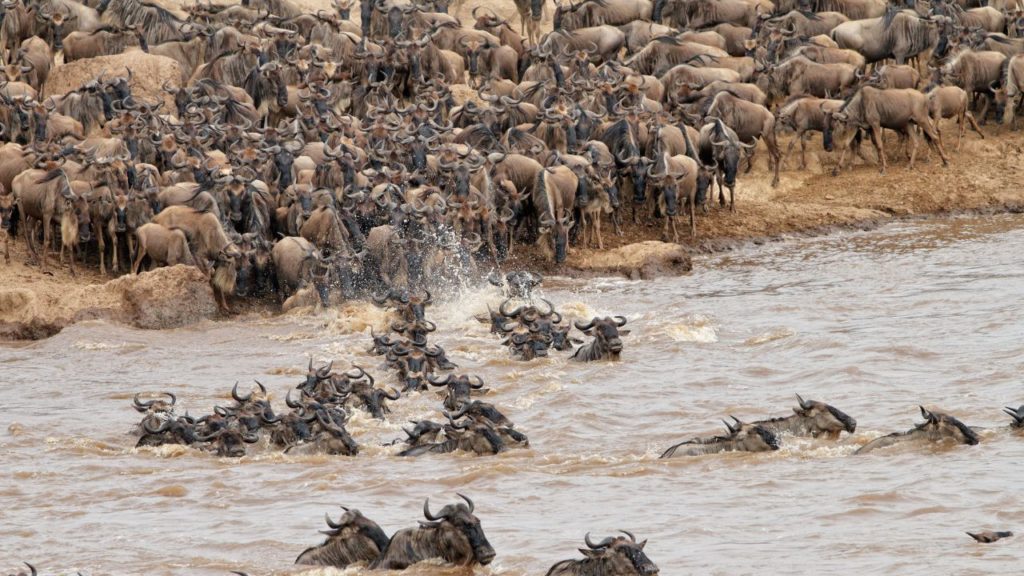
The Maasai Mara is perhaps the most iconic safari destination in Kenya, renowned for its breathtaking annual wildebeest migration. This vast expanse of savannah is home to the Big Five (lion, elephant, buffalo, leopard, and rhinoceros) and offers exceptional opportunities for game viewing. The Mara River, cutting through the reserve, is a spectacle of drama during the Wildebeest migration season .
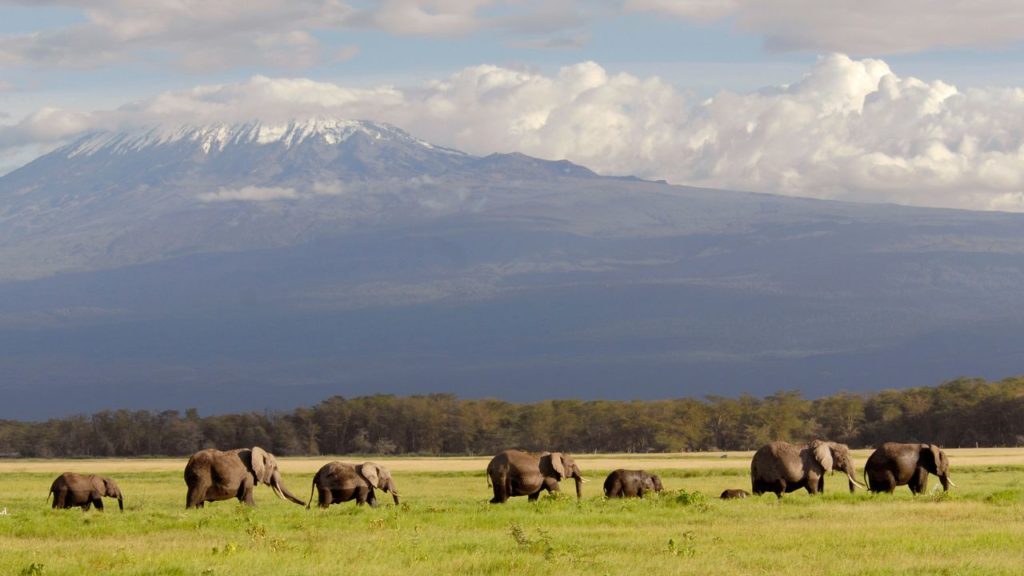
Located at the foot of Mount Kilimanjaro, Amboseli National Park provides a unique safari experience with the stunning backdrop of Africa’s highest peak. Famous for its large elephant herds, the park offers fantastic views of wildlife against the backdrop of Kilimanjaro. The swamps and lakes within the park attract a variety of bird species, adding to the overall charm.
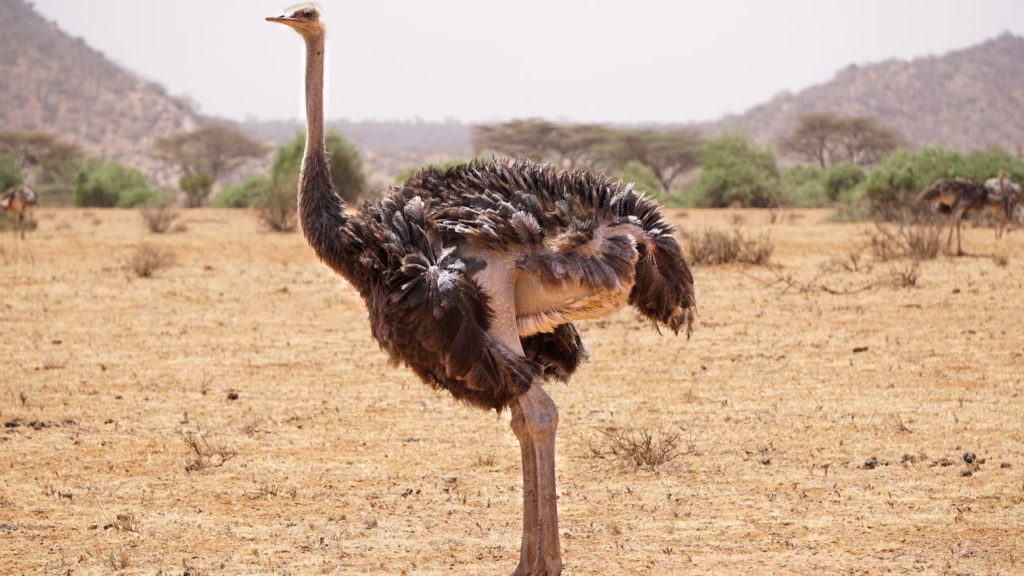
For a taste of Kenya’s northern frontier, Samburu National Reserve is a must-visit. This arid landscape is home to unique wildlife such as the Grevy’s zebra, Somali ostrich, and the reticulated giraffe. The Ewaso Ng’iro River flowing through the reserve sustains diverse flora and fauna, creating a striking contrast to the surrounding aridity.

Known for their sheer size, Tsavo East and West National Parks collectively form one of the largest wildlife conservation areas in the world. Tsavo East is characterized by vast plains and the iconic Yatta Plateau, while Tsavo West boasts diverse landscapes including volcanic craters and Mzima Springs, a freshwater oasis that attracts a variety of animals.
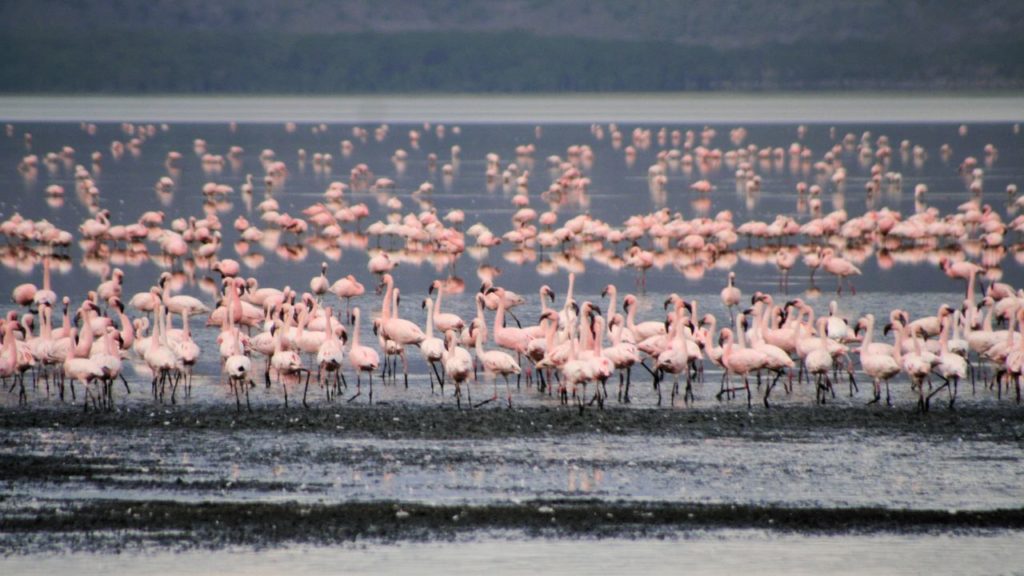
This compact yet remarkable park is famous for the vast flocks of flamingos that transform the shores of Lake Nakuru into a sea of pink. Beyond flamingos, the park is a haven for rhinos, both black and white, as well as lions, leopards, and a myriad of bird species. The picturesque landscapes surrounding the lake provide a serene setting for safari adventures.
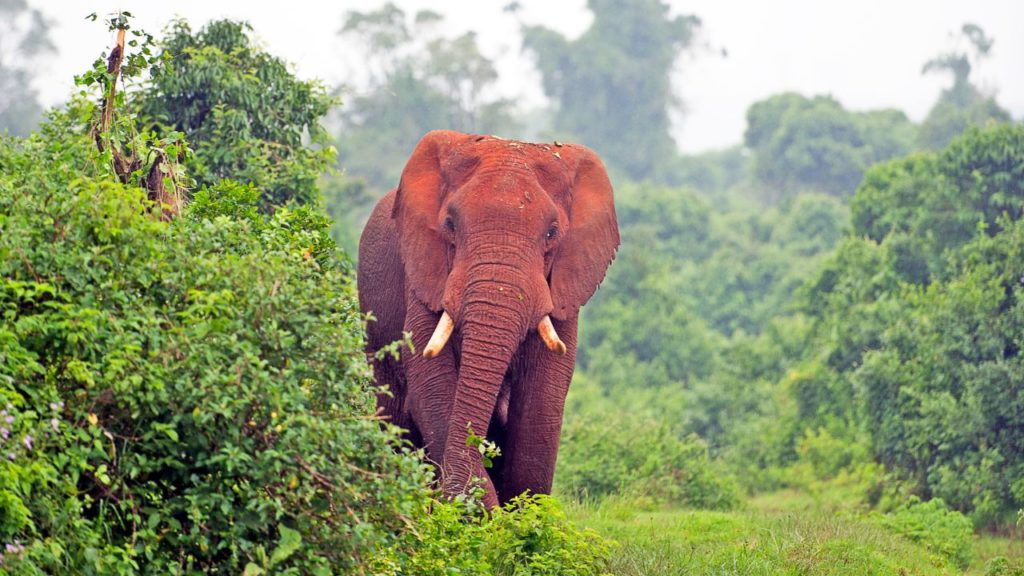
For a safari experience in the highlands, Aberdare National Park offers lush forests, waterfalls, and diverse wildlife. The park is renowned for its tree lodges, providing a unique opportunity to observe animals at close range from elevated vantage points. Elephants, buffaloes, and various primates are among the inhabitants of this scenic park.
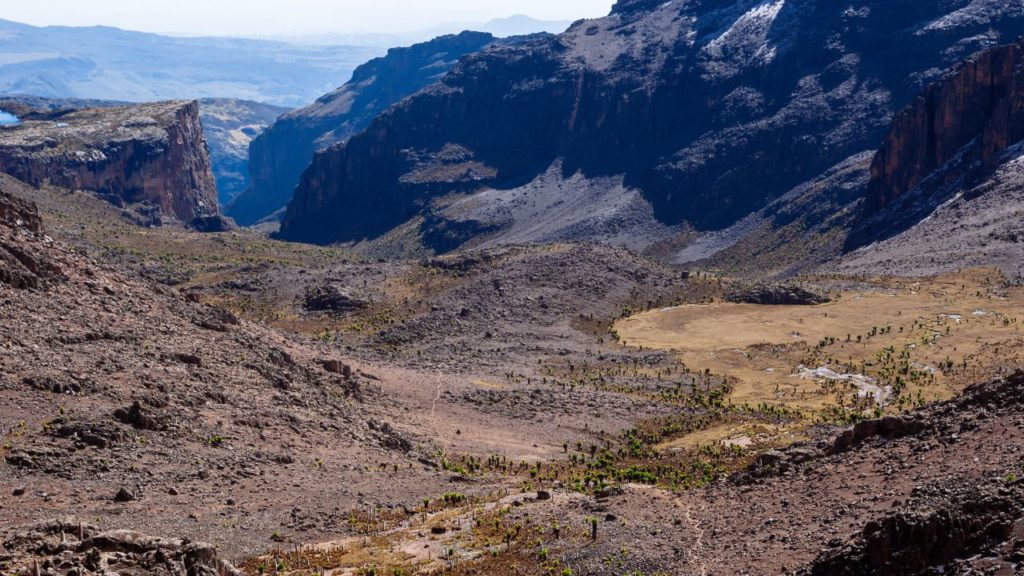
A UNESCO World Heritage Site, Mount Kenya National Park is centered around Africa’s second-highest peak. The park is a haven for hikers and climbers, but it also offers an opportunity for a unique safari experience in the foothills. The lower slopes are home to a variety of wildlife, including elephants, buffaloes, and the elusive bongo antelope.
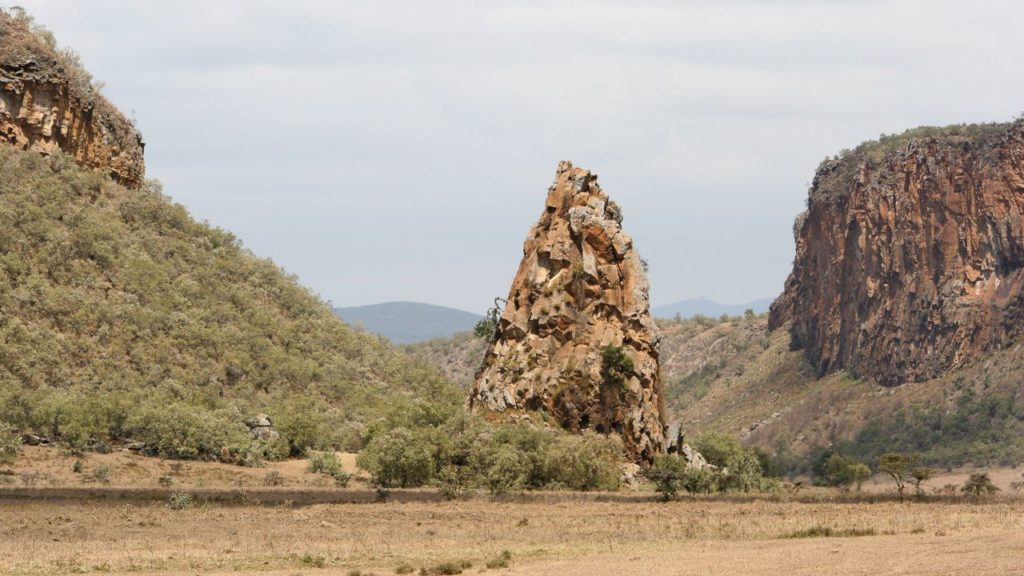
For a change of scenery, Hell’s Gate National Park is a geothermal wonderland featuring hot springs, geysers, and towering cliffs. This unique park allows visitors to hike and cycle amidst the wildlife, including zebras, giraffes, and baboons. The dramatic landscapes served as the inspiration for Disney’s “The Lion King.”
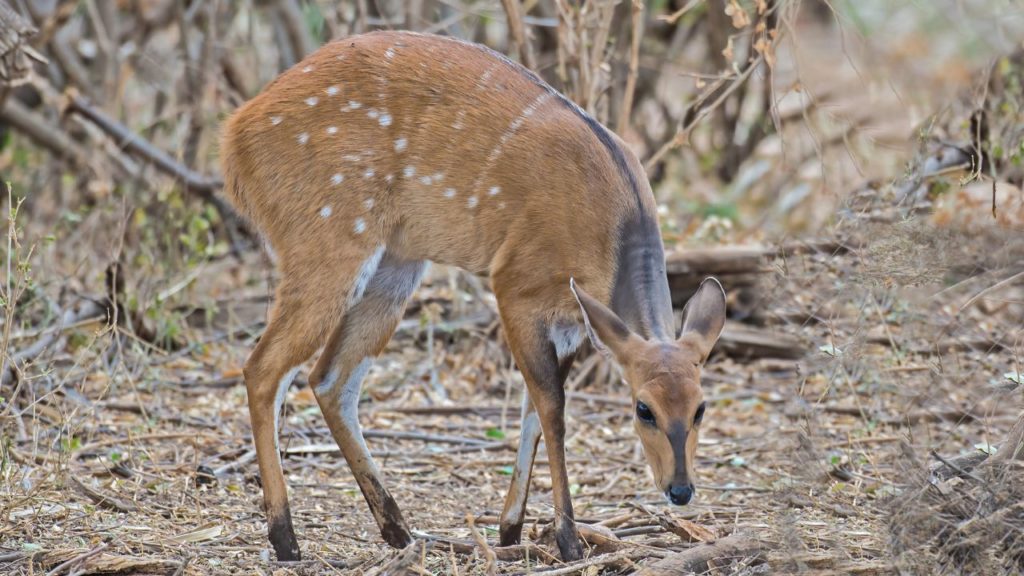
Immortalized in Joy Adamson’s “Born Free,” Meru National Park offers a quieter, off-the-beaten-path safari experience. The park is known for its diverse habitats, including riverine forests, grasslands, and swamps. Visitors can explore the park’s hidden gems, such as the Elsa’s Kopje, named after the famous lioness from “Born Free.”
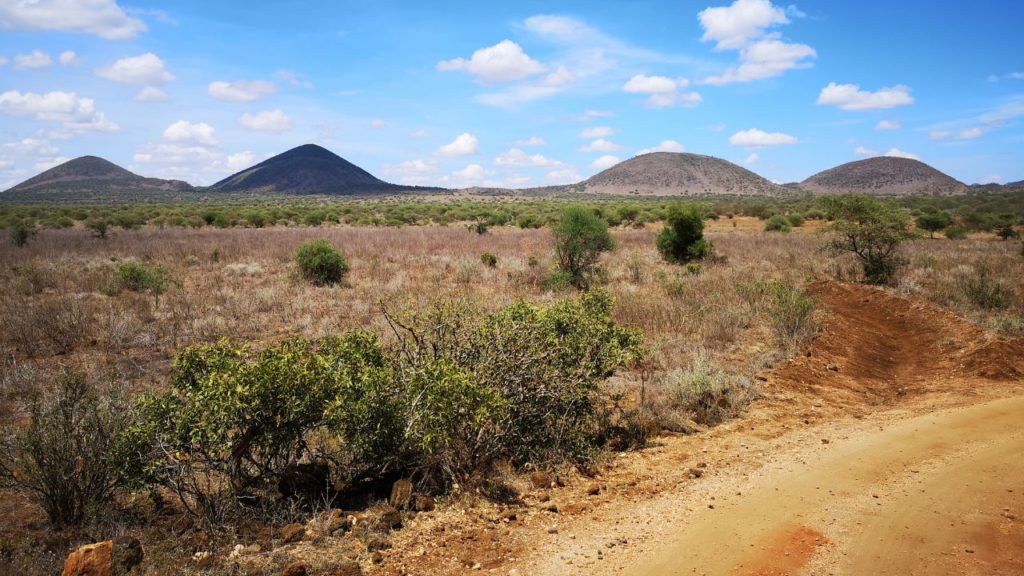
Tucked between Amboseli and Tsavo West, Chyulu Hills National Park is a hidden gem known for its rolling green hills and ancient lava tubes. The park provides a serene setting for walking safaris, offering a chance to spot a variety of wildlife, including elephants, giraffes, and a range of bird species.
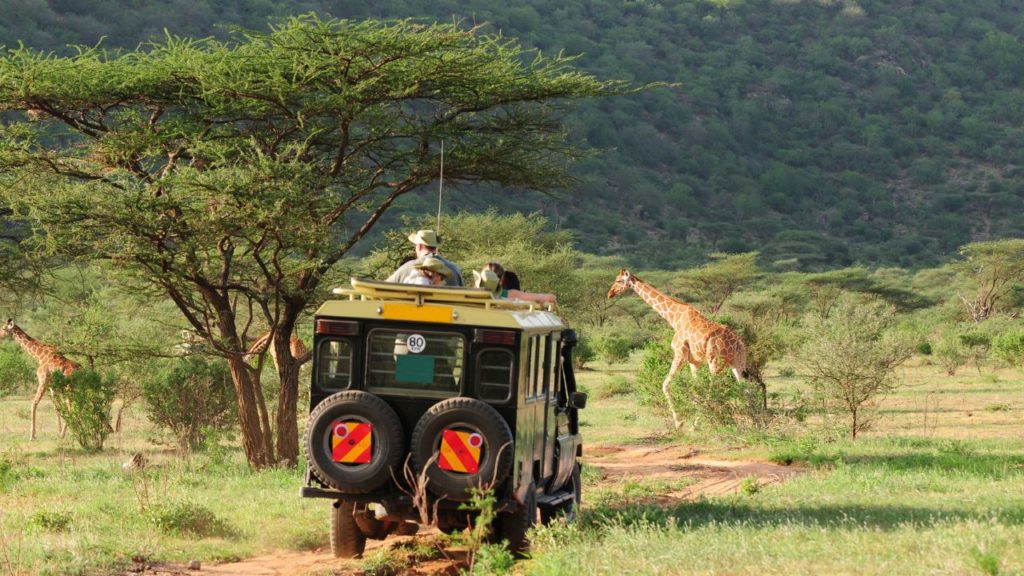
Kenya’s safari destinations offer a tapestry of landscapes and wildlife experiences that make it a dream destination for nature lovers and adventure seekers. Whether witnessing the Great Migration in the Maasai Mara or exploring the geothermal wonders of Hell’s Gate, each destination contributes to Kenya’s reputation as a safari paradise. Go on a journey through these 10 must-visit Safari destinations and immerse yourself in the raw beauty of Kenya’s wilderness.
Related posts:
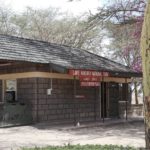
Kenya Traditional Attires and the Tribes That Adorn Them
Davis chirchir biography: age, party, education, family, wife, photos, net worth and latest news, leave a comment cancel reply.
Save my name, email, and website in this browser for the next time I comment.

A 10-Day Safari Itinerary in Kenya.
- October 31, 2023
- trek Afrika

A 10-day safari itinerary in Kenya is not just a journey; it’s a profound immersion into the heart of Africa. It’s a chance to witness the circle of life in action, from predators on the prowl to the great wildebeest migration across the Mara River. It’s an opportunity to capture stunning photographs of majestic elephants against the backdrop of Mount Kilimanjaro, and to feel the thrill of tracking elusive leopards through the thicket.
Day 1: Nairobi – The Gateway to Kenya
The Journey Begins
Your safari adventure commences in Kenya’s bustling capital, Nairobi. Spend your first day exploring the city’s rich history and vibrant culture. Visit the Karen Blixen Museum, delve into the Nairobi National Museum, and don’t forget to feed the gentle giraffes at the Giraffe Centre. Stay overnight at a charming Nairobi hotel to recharge for the adventure ahead.

Day 2: Samburu National Reserve – Land of the ‘Special Five’
Kenya Wildife
Depart Nairobi for the Samburu National Reserve, a haven for Kenya’s “Special Five” wildlife species. Witness unique animals like Grevy’s zebra, reticulated giraffe, and the elusive Beisa oryx. Enjoy a game drive and relax in your luxurious lodge overlooking the Ewaso Ng’iro River.
Day 3: Samburu National Reserve – Exploring the Wilderness
Captivating Samburu
A full day of wildlife encounters awaits you. Explore the reserve’s pristine wilderness, capturing iconic images of elephants and lions against the backdrop of the Ewaso Nyiro River. As the sun sets, enjoy a bush dinner under the starlit African sky.
Day 4: Mount Kenya – The Majestic Peaks
Up in the Clouds
Travel to Mount Kenya, Africa’s second-highest peak. Hike through lush forests, spot unique birdlife, and savor the serene beauty of the mountain. Stay in a luxurious lodge with breathtaking mountain views.
Day 5: Ol Pejeta Conservancy
Conservation at its Best
Visit the Ol Pejeta Conservancy, home to the last two Northern White Rhinos on Earth. Enjoy a game drive through the conservancy, where you might also spot the “Big Five.” Spend the night in a luxurious tented camp surrounded by nature. Ol Pejeta is committed to wildlife conservation, and you can visit the Endangered Species Enclosure, which houses endangered species like the northern white rhino. Learn about the conservation efforts and maybe even witness these magnificent animals up close.
Day 6: Lake Nakuru – A Birder’s Paradise
Wings and Waters
Drive to Lake Nakuru, a haven for birdwatchers. The lake is adorned with pink flamingos and a plethora of other bird species. Don’t forget to explore the surrounding parkland, where you may encounter the rare white rhino. Enjoy a comfortable overnight stay at a lodge by the lake.

Day 8: Maasai Mara – The Crown Jewel of Safaris
The Grand Maasai Mara
Drive to the iconic Maasai Mara, Kenya’s most famous safari destination. Experience thrilling game drives, seeking the Big Five and the Great Migration. Stay at a luxurious Maasai Mara lodge to savor the wilderness at its best.
Kenya Wildlife Sfari Itinerary
Day 9: Maasai Mara – A Day of Wildlife Marvels
Wild Encounters
Another day in Maasai Mara for unrivaled wildlife viewing. Witness the untamed beauty of the African savannah, and perhaps even a Mara River crossing. Prepare for a farewell dinner under the African stars.
Day 10: Maasai Mara to Nairobi – Farewell Kenya
Bid farewell to Maasai Mara and return to Nairobi, reminiscing about the incredible journey you’ve had. Optionally, explore the Kazuri Beads Women’s Cooperative or visit the David Sheldrick Wildlife Trust to see orphaned elephants before departing.
Exploring Kenya’s National Parks in 10 Days
But it’s not just the natural wonders that make this safari exceptional. It’s the warm smiles of the local people, who share their stories and traditions with open hearts. It’s the vibrant colors of the Maasai beadwork and the rhythmic sounds of traditional dances that offer a glimpse into the rich cultural tapestry of Kenya.
As your 10-day Safari itinerary in Kenya comes to a close, you’ll find yourself profoundly changed. The memories etched into your heart will serve as a constant reminder of the fragility and importance of our natural world. You’ll return home with a deeper understanding of the delicate ecosystems that sustain life on Earth and a stronger commitment to conservation and responsible tourism.
In conclusion, a 10-day safari itinerary in Kenya is an adventure that goes beyond the physical boundaries of the country. It’s a spiritual journey that connects you with nature, humanity, and the timeless rhythms of the wild. It’s a transformational experience that leaves an indelible mark on your soul and leaves you yearning to return to Kenya’s wild beauty.
FAQs How much does a 10 day safari cost in Kenya?
1. Budget Safaris: Budget safaris typically involve basic accommodations and may cost anywhere from $1,200 to $2,800 per person for a 10-day safari. These options may involve camping or staying in more modest lodges. 2. Mid-Range Safaris: For mid-range safaris with more comfortable accommodations and services, you can expect to pay anywhere from $3,000 to $6,000 per person. 3 . Luxury Safaris: Luxury safaris in Kenya can range from $6,000 to $10,000 or more per person. These often include high-end lodges, gourmet meals, and additional services.
How many days is enough for a Kenya safari?
The ideal duration for a Kenya safari can vary depending on your interests, budget, and the specific wildlife and experiences you want to encounter. However, here are some general guidelines for the duration of a Kenya safari: Short Safaris (2-4 Days): Short safaris are ideal for travelers with limited time or those looking to focus on a specific area or wildlife.You can enjoy a brief safari experience in a single national park or reserve, such as the Maasai Mara or Amboseli National Park. These shorter safaris are often more budget-friendly. Standard Safaris (5-7 Days): A 5 to 7-day safari is a common choice for most travelers, as it allows you to explore multiple parks and reserves and experience a variety of wildlife and landscapes. This duration allows you to visit different regions of Kenya and increases your chances of seeing a wide range of animals. Extended Safaris (10+ Days): If you have more time and a greater budget, an extended safari of 10 days or more can provide a more comprehensive and immersive experience. You can explore more remote and less-visited areas, spend more time observing wildlife, and include additional activities, such as cultural visits.
Which is the Cheapest Safari in Kenya?
The cost of a safari can vary widely, and the price depends on various factors, including the destination, duration, type of accommodation, level of comfort, and the specific tour operator you choose. If you’re looking for a more budget-friendly safari option, consider the following: 1. Self-Drive Safaris: One of the more cost-effective ways to go on a safari is to plan a self-drive safari in a national park or wildlife reserve where it’s allowed. You can rent a 4×4 vehicle and camping equipment, reducing the cost of accommodations. Keep in mind that this option requires you to have some experience in self-driving in the wilderness. 2. Group Tours: Joining a group safari with a reputable tour operator can often be more cost-effective than a private safari. Group tours allow you to share expenses with other travelers. 3 . Budget or Mid-Range Accommodations: Choose budget or mid-range accommodations like tented camps or lodges rather than luxury lodges. These options can significantly reduce the cost of your safari while still providing comfortable lodging. 4. Shorter Duration: Consider a shorter safari, such as a 2-4 day safari, which can be more budget-friendly than longer trips. 5. Off-Peak Season: Travel during the off-peak or shoulder seasons when accommodations and tour prices may be lower. However, keep in mind that wildlife sightings might not be as abundant during these times. 6. Local Tour Operators: Consider booking your safari with local tour operators based in the destination, as they may offer more competitive prices compared to international tour companies.
What to do in Kenya in 10 days?
Day 1: Arrival in Nairobi Arrive in Nairobi, the capital of Kenya. Explore the city’s attractions, including the Karen Blixen Museum, Giraffe Centre, and David Sheldrick Wildlife Trust. Enjoy a traditional Kenyan dinner at a local restaurant. Day 2: Nairobi to Amboseli National Park Drive or fly to Amboseli National Park, known for its stunning views of Mount Kilimanjaro. Go on a game drive to spot elephants, lions, zebras, and more. Stay in a lodge or tented camp within the park. Day 3: Amboseli National Park Spend the day exploring Amboseli and capturing photos of the iconic wildlife with Mount Kilimanjaro in the background. Visit Observation Hill for panoramic views of the park. Day 4: Amboseli to Tsavo West National Park Depart for Tsavo West National Park, famous for its scenic landscapes. Visit Mzima Springs, a natural spring with underwater viewing points for hippos and fish. Explore Chaimu Crater and Shetani Lava Flow. Day 5: Tsavo West to Tsavo East National Park Travel to Tsavo East National Park, the largest national park in Kenya. Enjoy game drives in search of diverse wildlife, including the “Red Elephants” of Tsavo. Relax at your chosen accommodation within the park. Day 6: Tsavo East to Mombasa Leave Tsavo East and drive to the coastal city of Mombasa. Explore Fort Jesus, Old Town, and the vibrant markets. Relax on the beautiful beaches or take a dhow cruise. Day 7: Mombasa to Diani Beach Head to Diani Beach, a popular beach destination. Enjoy water sports, relax on the white sandy beaches, and explore the surrounding area. Day 8: Diani Beach Spend a full day at leisure on Diani Beach, taking in the sun and sea. Consider activities like snorkeling, diving, or visiting a nearby marine reserve. Day 9: Diani Beach to Maasai Mara Fly or drive to the world-famous Maasai Mara National Reserve. Go on a game drive to witness the incredible wildlife, including the Great Migration if visiting during the migration season. Stay at a lodge or tented camp within the reserve. Day 10: Maasai Mara Spend the day exploring the Maasai Mara, with morning and afternoon game drives. Experience the unique culture of the Maasai people by visiting a local village. Depart from Maasai Mara and head back to Nairobi for your departure.
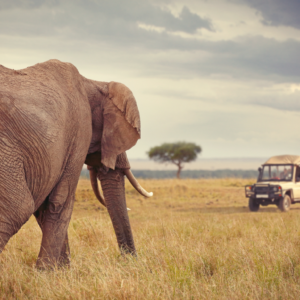
How to Plan Your First Safari to Kenya in 2024
Plan Your First Safari to Kenya in 2024 Kenya, often referred to as the “Safari Capital of the World,” is a land of awe-inspiring landscapes
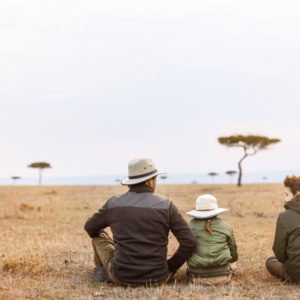
Exploring the Magic of Kenya with Kids in 2024
Exploring the Magic of Kenya with Kids in 2024 Envision your family surrounded by the mesmerizing landscapes of Kenya, with endless plains stretching to the

Embrace the Magnificence of the 2023/2024 Kenya Safari with the Great Wildebeest Migration!
Embrace the Magnificence of the 2023/2024 Kenya Safari with the Great Wildebeest Migration in Maasai Mara. The enchanting wilderness of Kenya offers a multitude of

Exploring the Wonders of Kenya on a Budget Camping Safari.
Prepare to embark on an extraordinary adventure through the heart of Africa as we delve into the captivating realm of exploring the wonders of Kenya
Send Us A Message
+254 725 925339, email for us, [email protected].
- Tours and Safaris
- Terms and Conditions
- Privacy Policy
TOUR CATEGORY
- Adventure Safaris
- Bush & Beach Safaris
- Cross Border Safaris
- Cultural Safaris
- Family Safaris
- Kenya Big Five Safaris
- Romantic Holidays
SECURE PAYMENT

Copyright 2024 © Trek Adventures. Design and developed by Wayne graphics Solutions

Kenya, the original safari destination, is a place steeped in safari tradition. It's renowned for its iconic Masai Mara, where generations have come to witness the Big 5 and the breathtaking annual wildebeest migration. A visit here offers an authentic "Out of Africa" experience that's both captivating and unforgettable.

Kenya is the original safari destination. Home of the world-famous Masai Mara, the country has a decades-long history as the place to see the Big 5 and the annual wildebeest migration. Here you can have the real Out of Africa experience.
Alternatively, a Kenya safari could take you north to Laikipia & Samburu for incredible leopard and rhino sightings, or to Amboseli with its stunning views of Kilimanjaro, or even to the picture-perfect beaches on its Indian Ocean coastline.
What to look out for
properties.

Elephant Pepper Camp

Serian Camp

Giraffe Manor

Offbeat Mara

Ol Lentille

Cottar's 1920s

Lewa Wilderness

Segera Retreat

Ol Donyo Lodge

Kinondo Kwetu

Angama Mara

Tortilis Camp

Serian Nkorombo

Saruni Samburu

Angama Amboseli

WaterLovers

Offbeat Ndoto

Kichwa Tembo

Chale Island

Bateleur Camp

Richards River Camp

Kicheche Bush Camp

Serian Ngare

Peponi Hotel

Angama Safari Camp

Alfajiri Villas
What to see in .

When to visit
January marks the start of the 'short dry season' although timings can be unpredictable. Expect lush and green conditions and new-born animals in sight. It is hot with passing clouds, but brief afternoon showers cool things down without compromising your safari. On the coast, it will be hot with bright days and clear waters, making it ideal for diving and snorkelling.
We are still in the short dry season with higher temperatures, little rain and a sunny coastline. A lovely time to travel.
The end of March sees the arrival of the long rains. The time of their arrival can be a little unpredictable.
The long rains reach full flow. We advise against travel at this time of year.
A slightly unpredictable month where you can expect great weather and rain rolled into one.
June is a transition month that sees dry weather return on safari with good game viewing. However, June is wetter month on the coast and not suitable for beach holidays or underwater activities.
The long dry season is in full flow and the first herds of The Great Migration enter the Masai Mara from Tanzania. Temperatures are pleasant and conditions for game viewing are perfect. A great time to be on safari.
The migrating herds fill the Masai Mara. Dry conditions and pleasant temperatures make for superb game viewing. The perfect time for a holiday with virtually no rain.
Another dry season month as temperatures start to rise. The Great Migration herds graze in the Masai Mara and game viewing remains excellent across Kenya's National Parks.
The last month of the dry season. Temperatures start to rise and wildlife gathers round scarce water sources. Conditions on the coast are excellent for exploring reefs as the diving season resumes.
November heralds the start of the 'short rains' with hotter temperatures. Some camps across Kenya are closed, but the Masai Mara remains open and and despite occasional stormy skies, the game viewing is still very good. Fewer crowds and lower prices make this an attractive month to visit.
The short rains ease as the month goes on and the landscape is verdant with wildlife and abundant with birds. The Kenyan Coast is the perfect Christmas destination with hot sunny days.
Inspiration

Safari & Beach Family Holidays

Kenya Honeymoon

Diani Beach

Kenya's Best Beach Hotels

Offbeat Safaris

Diani Beach or Lamu

When to visit Kenya
Feeling inspired.

African Safari
destinations.

Start planning your tailor-made holiday
Speak to one of our travel specialists
Join the club
Partners & protection.

Deals of the Week Must-haves for 2025 Up to 50% OFF
Kenya Safari Tours and Holiday Packages
- Kenya Safari Luxury
- Masai Mara Safari
- Kenya Safari Budget
- Amboseli National Park Safari
Best Kenya safari tours based on 1,278 reviews

Safari Family Wildlife Jeep & 4WD Big Five Christmas & New Year +3
6 Days Kenya Budget Tours (with FREE NIGHT at Nairobi Hotel)
"I was so astonished by watching wildlife on a 6-day budget safari in Masai Mara! The safari was organized perfectly." Mary, traveled in September 2023
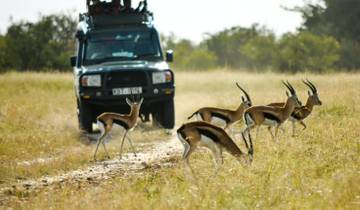
Amboseli & Masai Mara Budget Safari By 4x4 Jeep
"Τα lodge στο πάρκο Amboseli και Masai Mara ήταν πανέμορφα, καθαρά και με πλούσιο μπουφέ στο πρωινό και τα γεύματα." Christos, traveled in January 2023
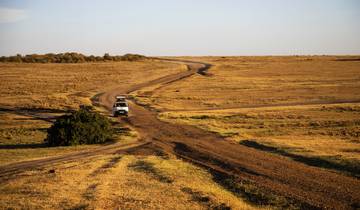
Safari Camping Wildlife Jeep & 4WD Christmas & New Year +2
Journeys: Kenya Safari Experience National Geographic Journeys
"Great trip to the Masai Mara, Lake Nakuru and Amboseli. The experience was excellent." David, traveled in December 2016

Safari Family Wildlife Jeep & 4WD Christmas & New Year +2
5 Days Masai Mara and Amboseli Wildlife Safari
"Our 5 day Kenya Masai Mara safari was fantastic. Everything was very good. Good company I can recommend." RebekahPetinak, traveled in July 2019
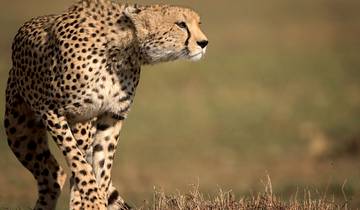
Safari Camping Wildlife Big Five Christmas & New Year +2
Kenya Camping Safari
"Excellent support from the entire GAdventures team. Delicious food from chef Francis." Johannes, traveled in August 2022

5 Day Kenya Flying Safari
"The price was competitive for the level of personal service we received." S, traveled in September 2022

Safari Camping Wildlife Jeep & 4WD Great Migration Big Five Christmas & New Year +4
Kenyan Highlights (6 Days)
"The trip exceeded all expectations." Hamed, traveled in June 2022
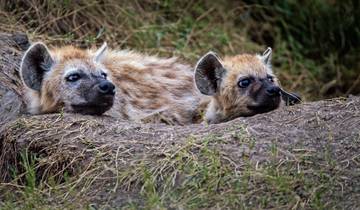
7 Days Taylor -Made Kenya Luxury Safari
"This is one of the best tours ever. I just loved the experience." Stella, traveled in June 2019
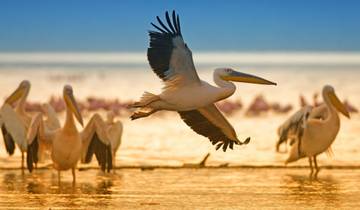
Kenya Classic, Sopa Lodges

Safari Family Wildlife Big Five Christmas & New Year +2
Kenya Classic, Sentrim Lodges - Private Tour
"My tour of Kenya was an amazing experience that has enhanced my life." Valerie, traveled in December 2023
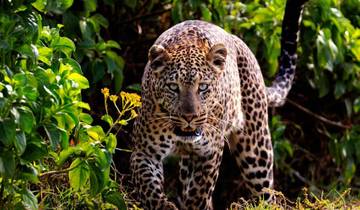
Magic of Kenya Safari Tour - 7 Days
"The game drives were much full of satisfaction with most unexpected views in the park." Joe, traveled in June 2023
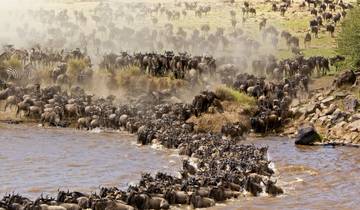
3 Days, 2 Nights Masai Mara Group Joining Safari From Nairobi with Complimentary Airport Pickup.
"We were glad we upgraded our hotel. It was perfect." Lisa, traveled in April 2024
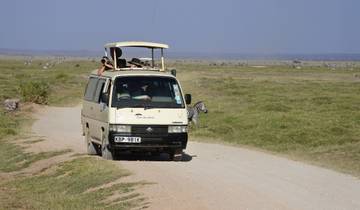
Safari Family Camping Wildlife Jeep & 4WD Christmas & New Year +3
6 Days Kenya Budget Small Group Safari
"Very knowledgable expert guides and a great way of experiencing Kenya's beautiful nature & wildlife." ISIL, traveled in December 2019

Safari Beach Family Wildlife Jeep & 4WD Great Migration Christmas & New Year +3
Affordable Classic Highlights of Kenya and Beach 2023 & 2024
"Nice and friendly Service in all Issues." Caleb, traveled in July 2021
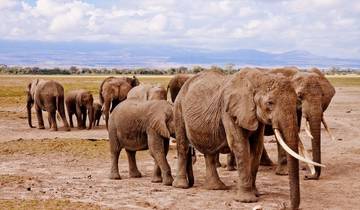
Safari Family Wildlife Jeep & 4WD Great Migration Big Five Christmas & New Year +4
7 Days Masai Mara, Lake Nakuru and Amboseli budget Safari
"Great and friendly customer service. As a wildlife lover it's a 10/10 for me." Elizabeth, traveled in June 2023
- $99 deposit on some dates
Kenya Safari Tour Reviews
My 6 day safari with Bon Voyage Safaris to Maasai Mara and Serengeti was a once-in-a-lifetime adventure. The professionalism, expertise, and passion displayed by the staff, coupled with the breathtaking landscapes and abundant wildlife, made it an experience beyond compare. I highly recommend Bon Voyage Safaris to anyone seeking an unforgettable safari experience in East Africa.
It was definitely an experience of a lifetime and you would not regret it.
Absolutely fantastic! I was with a lovely group of people, the guide and driver were brilliant and the accommodation was out of this world. Only down side is lots of travelling but the experience made up for it. Loved the Fig Tree and masi mara.
Safari Tours
- Big Five (380)
- Great Migration (168)
- Flying Safari (18)
- Honeymoon Safari (8)
National Park
- Masai Mara National Reserve (127)
- Lake Nakuru National Park (71)
- Amboseli National Park (50)
- Amboseli National Park (34)
- Tsavo National Park (25)
- Samburu National Park (12)
Regions in Kenya
- Masai Mara National Reserve (130)
- Masai Mara (126)
- Lake Nakuru National Park (73)
- Amboseli National Park (51)
- Central Kenya (14)
- Mount Kenya (5)
Travel Styles
- 10 Best Safaris in December 2024/2025
- 10 Best Safaris in August 2024/2025
- 10 Best Safaris in January 2024/2025
- 10 Best Safaris in November 2024/2025
- 10 Best Safaris in October 2024/2025
- 10 Best Safaris in July 2024/2025
- 10 Best Safaris in June 2024/2025
- 10 Best Safaris in May 2024/2025
- 10 Best Safaris in April 2024/2025
- 10 Best Safaris in March 2024/2025
- 10 Best Safaris in February 2024/2025
- 10 Best Luxury African Safari Tours 2024/2025
- Kenya Travel Guide | All You Need to Know
- Best Time to Visit Kenya for a Ultimate Safari Experience
Discover TourRadar
- Big Five Safari
- USA East Coast Tours
- Croatian Islands tours
- Adventure Together - Agenda 2022
- Colombia Travel Guide | All You Need to Know
- Laos Travel Guide | All You Need to Know
- Do I need a guide for visiting Machu Picchu?

SAFARI AU KENYA

MODALITÉS DE PAIEMENT : par chèque ou argent ou carte de crédit
DÉPÔT : $1500 par personne à la réservation
PAIEMENT FINAL : 90 jours avant le départ
DEMANDE DE PARTAGE POSSIBLE : Informez-vous
Maximum 2 occupations simples par départ
TARIFS VALIDES JUSQU'À 90 JOURS AVANT LE DÉPART OU SELON DISPONIBILITÉ
PASSEPORT OBLIGATOIRE, AVEC UNE POST-VALIDITÉ DE 6 MOIS APRÈS VOTRE DATE DE RETOUR
OCTOBRE 2024 : l'hôtel pour les deux nuits à Tsavo Ouest est le Kilaguni Serena Lodge (ou similaire)
AVANT D'EFFECTUER VOTRE RÉSERVATION, VOUS AVEZ L'OBLIGATION DE LIRE LES CONDITIONS GÉNÉRALES :
https://www.levoyagistedequebec.com/conditions-generales
- Les prix annoncés sur notre site sont valides si vous achetez des services pendant la même session. - Si vous vous déconnectez de notre site, le prix pourraient changer lors de votre prochaine session. - Les tarifs sont sujets à changement sans préavis et sous réserve de disponibilité.
Le déroulement de l’itinéraire et l’ordre des visites prévues, de même que les horaires indiqués peuvent être modifiés en fonction des circonstances, de situations imprévues et des conditions qui prévalent sur place, météo, achalandage extraordinaire sur certains sites etc. Les compagnies aériennes, les types d’appareils utilisés, les hôtels, les moyens de transport et d’autres prestations peuvent être sujets à changements si des circonstances imprévues, la sécurité, les autorités locales ou les conditions l’exigent.
Avec la levée de la majorité des mesures sanitaires par le gouvernement du Canada depuis le 1 er octobre 2022, nous vous recommandons de consulter régulièrement ce site gouvernemental pour connaître les dernières mises à jour : http://voyage.gc.ca
Il est de votre responsabilité de vérifier les conditions et exigences de votre voyage jusqu’au départ puisque celles-ci peuvent changer à tout moment ; Le Voyagiste de Québec ne peut être tenue responsable pour tous refus d’un voyageur ou toute modification à ces informations et aucune compensation ne sera offerte par le Voyagiste de Québec.
POUR EFFECTUER CE VOYAGE, LES CITOYENS CANADIENS DOIVENT ÊTRE MUNIS D’UN PASSEPORT VALIDE POUR 6 MOIS APRÈS LE RETOUR
JOUR 1 : MONTRÉAL - VILLE DE CORRESPONDANCE
En compagnie de votre accompagnateur qui sera présent avec vous durant tout le voyage, départ de l’aéroport Montréal-Trudeau vers Nairobi via une ville de correspondance. Pour ceux qui le désirent, vous avez l’option de partir en autobus spécial de Québec en direction de Montréal aller-retour, avec un minimum de passagers requis ($).
JOUR 2 : VILLE DE CORRESPONDANCE - NAIROBI
Correspondance vers Nairobi, capitale du Kenya où l’arrivée est prévue en soirée. Plusieurs repas/snacks seront servis durant le vol. Accueil à l’arrivée et après les formalités de douane et d’immigration, rencontre avec vos chauffeurs-guides francophones et transfert à l'Eka Hotel (ou similaire) bien situé en périphérie de la capitale. Souper libre et nuit à Nairobi.
JOUR 3 : NAIROBI - MASAI MARA
Petit-déjeuner à votre hôtel, et départ matinal pour le début de la grande aventure. Vous partirez, avec votre chauffeur-guide francophone, en convoi, par petits groupes de six par véhicule spécialement aménagé pour les promenades et safaris en brousse (game drives). On vous emmènera vers la très célèbre réserve de Masaï Mara, la plus connue et la plus réputée du Kenya, prolongation au Kenya de la réserve tanzanienne du Sérengeti et qui couvre une superficie de 1,800 km carrés. Un véritable incontournable…! À votre arrivée, installation au Mara Sopa Lodge (ou similaire), pour le lunch. Vous y passerez les 3 prochaines nuits. En après-midi, départ avec votre chauffeur-guide pour votre premier « game drive » sur les pistes de cette extraordinaire réserve animalière, une des plus célèbres d’Afrique. Retour à votre lodge pour le souper et la nuit. Pour votre plaisir, votre lodge possède une piscine. PD-L-S
JOUR 4: MASAI MARA
Départ tôt après le petit-déjeuner à votre lodge pour un « game drive » de toute la journée dans la brousse et la savane de la réserve. À Masai Mara, les rivières Mara et Talek se rejoignent sur la réserve. Ce sera aussi l’occasion d’observer les animaux sauvages qui viennent s’y abreuver et de voir des crocodiles et des troupeaux d’hippopotames qui viennent y chercher la fraîcheur. Vous prendrez votre lunch en pique-nique en pleine réserve avec des paniers-repas préparés par la cuisine de votre lodge. La chance aidant, c’est aussi l’endroit tout désigné pour assister aux chasses des nombreux prédateurs qui y viennent pour se gagner un repas…Retour à votre lodge pour le souper. Depuis la terrasse de votre hébergement, assistez à l’inoubliable spectacle du coucher du soleil sur la jungle africaine. Souper et nuit au lodge. PD-L-S
JOUR 5 : MASAI MARA - LAC NAKURU - LAC NAIVASHA
Départ tôt après le petit-déjeuner en direction d’une autre réserve du Kenya, le lac Nakuru, véritable sanctuaire ornithologique et des rhinocéros noirs et blancs, où vous aurez l’occasion, à travers un paysage complètement différent, de découvrir de nouveaux aspects de la faune et la flore du Kenya tout en faisant de nouvelles expériences. Départ pour une journée complète de « game drive » à la réserve et le parc national du lac Nakuru au cours duquel vous pourrez observer des troupeaux de buffles et des rhinocéros. Vous prendrez votre lunch entre-temps au Lake Nakuru Lodge.
En fin d'après-midi, transfert à votre lodge au Lac Naivasha Sopa Lodge (ou similaire) avec son immense terrain en bordure du lac. Vous y séjournerez pour les deux prochaines nuits. Refuge naturel fréquenté par de nombreux hippopotames, buffles, girafes, singes, oiseaux exotiques et antilopes qui circulent en toute liberté sur le domaine. Le lodge possède également une belle piscine. Non sans avoir admiré le magnifique coucher de soleil, souper et nuit à votre lodge. PD-L-S
JOUR 6 : LAC NAIVASHA
Petit-déjeuner à votre lodge. Vous en êtes presqu’à mi-parcours de votre voyage-safari au Kenya, vous apprécierez ces heures de liberté pour repos et activités personnelles dans ce site paradisiaque. Profitez de la belle piscine, du spa et de l’excellente cuisine de votre lodge, tout en admirant les nombreux animaux qui fréquentent ce domaine en toute liberté. Sur cette propriété, il n’y a aucun prédateur et d’importantes équipes sont sur place pour assurer votre complète tranquillité. Après le lunch, vous quitterez pour une promenade en barque sur le lac Naivasha, suivie d'une balade à pied sur Crescent Island, au milieu des troupeaux de zèbres, des girafes, des grandes antilopes (water bucks) et autres gazelles (en toute sécurité). Retour à votre lodge en fin d'après-midi pour le souper et la nuit. PD-L-S
JOUR 7 : LAC NAIVASHA - AMBOSELI
Petit-déjeuner à votre lodge. Départ tôt par la route, vers la réserve animalière d'Amboseli, le deuxième parc le plus visité au Kenya. Amboseli offre comme toile de fond, les merveilleux paysages du célèbre Mont Kilimandjaro, le plus élevé d’Afrique (5,995 mètres) et ses neiges éternelles, décor mythique, paradis des photographes. Le parc est composé de vastes plaines dominées par le Kilimandjaro qui les alimentent en sources où viennent s’abreuver les troupeaux d’animaux, éléphants, buffles, antilopes, zèbres, girafes, gnous, surveillés par les prédateurs carnivores qui s’en donnent à cœur joie. C’est véritablement le « Parc du lion de Kessel ». Arrivée au Kibo Safari Camp (ou similaire) pour le lunch. Vous y séjournerez pour les deux prochaines nuits. Après un premier « game drive » en fin d’après-midi, souper au lodge et soirée au camp. Le séjour en lodges (tented camps) au Kenya est très confortable même s’ils sont situés en brousse, loin des axes de communication. L’électricité, le Wi-Fi et le téléphone y sont présents (quoique fréquentes coupures). La nourriture y est particulièrement soignée et le confort, quoique rustique, est tout à fait adéquat. Les chambres sont toutes équipées de douches avec sanitaires privés et les lits possèdent aussi tout le matériel, moustiquaires etc. qui protègent des insectes. PD-L-S
JOUR 8 : AMBOSELI
Petit-déjeuner à votre lodge. Journée complète dans la réserve animalière d’Amboseli. Vous profiterez d’un safari tôt le matin et d’un autre en fin de journée. Les trois repas seront pris à votre lodge et vous aurez la possibilité, entre deux « game drives » de profiter de la piscine tout en admirant le majestueux Mont Kilimandjaro. En après-midi, visite incluse d’un village traditionnel Masaï situé à proximité du lodge. Rencontre avec la population, ces grands guerriers aux tailles impressionnantes, leurs familles et visitez un petit marché où on vous proposera des petits objets d’artisanat confectionnés par les villageois. Retour au lodge pour le souper et la nuit. PD-L-S
JOUR 9 : AMBOSELI - TSAVO OUEST
Petit-déjeuner au lodge. Départ en matinée avec votre véhicule « safari » à travers la steppe et la brousse du Kenya vers le Sud, en direction la frontière avec la Tanzanie, vers la réserve de « Tsavo Ouest », la plus grande des réserves animalières de l’Afrique de l’Est. Elle couvre une superficie de 20 800 km carrés, environ la superficie d’Israël. Cette réserve offre des paysages absolument magnifiques et l’abondance de l’eau facilite grandement l’observation de la faune qui y est très abondante. À Tsavo, ce sont des paysages fabuleux constitués de collines parsemées d’épineux, d’acacias et de majestueux baobabs qui s’adossent aux superbes Chyulu Hills, la chaîne de montagnes la plus jeune au monde, avec un paysage volcanique et son immense champ de lave que vous traverserez.
Vous atteindrez le Voyager Ziwani Camp (ou similaire) en mi-journée pour le lunch. Vous y séjournerez pour les deux prochaines nuits. En après-midi, vous quittez pour un autre « game drive » passionnant à travers cette nature toute différente où vous aurez le loisir d’observer entre autres, de très nombreux animaux curieusement recouverts de latérite, cette poussière rougeâtre abondante dans la région et dans laquelle se roulent : éléphants, rhinocéros, zèbres… Souper dans un spectaculaire et magnifique restaurant-terrasse surplombant deux points d’eau d’où vous assistez, tout en mangeant au défilé des nombreux animaux, girafes, éléphants, zèbres, antilopes etc. qui défilent pour s’y abreuver. Souper et nuit à votre lodge. PD-L-S
JOUR 10 : TSAVO OUEST
Petit-déjeuner au lodge. Journée complète dans la réserve de « Tsavo Ouest ». Matinée libre pour profiter des nombreuses installations du lodge et jouir de la beauté du site. Après le lunch, départ pour votre dernier « game drive ». Les trois repas seront pris à votre lodge. Retour en fin d'après-midi pour le souper et la nuit. PD-L-S
JOUR 11 : TSAVO WEST - DIANI BEACH (FORMULE TOUT INCLUS)
Après le petit-déjeuner à votre lodge, départ avec votre véhicule-safari par une route et des pistes « typiques » qui vous feront traverser à tour de rôle la savane et la brousse africaine dans de beaux paysages et vous croiserez de nombreux villages africains, en route vers les magnifiques rivages et les plages paradisiaques de sable blanc de l’océan Indien. Accueil à votre arrivée en début d’après-midi au Baobab Beach Resort 4* (ou similaire) situé directement sur la plage, face à la mer pour un séjour que vous passerez en formule « tout inclus » durant 3 nuits. À votre arrivée sur la côte, vous dites adieu à vos chauffeurs-guides kenyans qui vous auront guidés tout au long de cette belle et mémorable aventure à travers les belles réserves d’Afrique de l’Est à la poursuite de cette belle faune et de ces beaux paysages qui vous laisseront d’impérissables souvenirs. PD-L-S
JOURS 12 ET 13 : DIANI BEACH (FORMULE TOUT INCLUS)
Profitez bien de ces quelques jours magnifiques dans ce bel hôtel situé directement en bordure de l’océan Indien avec ses immenses jardins tropicaux et sa magnifique piscine dominant une plage de sable blanc. Durant ces deux jours, vous bénéficierez de la formule « tout inclus » avec tous les repas et boissons alcoolisées ou non à volonté. Animation en soirée. Préparation des valises pour votre départ de demain. PD-L-S
JOURS 14 ET 15 : DIANI BEACH – MOMBASA – NAIROBI - MONTRÉAL
Petit-déjeuner à l’hôtel et temps libre jusqu’à l’heure de transfert vers l’aéroport. Une excursion facultative ($) de Mombasa vous sera proposée afin d’avoir un aperçu du premier port d’Afrique de l’Est, ancienne colonie portugaise et deuxième ville en importance du Kenya.
Pour les autres, départ en direction de Nairobi pour votre vol de nuit via une ville de correspondance. Arrivée à Montréal durant le jour 15. Pour ceux ayant choisi cette option, transfert en autocar spécial vers Québec, avec un minimum de passagers requis ($). PD
Le forfait comprend
- Le vol aller-retour de Montréal à Nairobi en classe économique avec escale
- Le vol intérieur Mombasa – Nairobi en classe économique
- Les transferts de et vers les aéroports de Nairobi et de Mombasa
- Le transport exclusivement en jeeps 4x4 (ou similaire), équipement spécial safaris, avec toit d'observation
- Hôtels 4* à Nairobi pour 1 nuit et à Diani pour 3 nuits
- L’hébergement en camps et en lodges (équipement sanitaire privé et complet par chambre incluant dispositifs appropriés, voiles, moustiquaires, etc.) en brousse durant le safari
- Tous les repas durant le safari (sauf les jours 2 et 14)
- Tous les repas à Diani en formule « tout inclus » incluant les boissons locales alcoolisées ou non
- Chauffeur-guide francophone (un par jeep)
- Petit guide animalier sur le Kenya
- Les taxes et frais d'entrée et de circulation dans les réserves et parcs visités : Massaï Mara, lac Naivasha, lac Nakuru, Amboseli et Tsavo Ouest
- Les sorties en brousse (« game drives ») et dans les réserves, visites incluses selon l’itinéraire, avec une recharge d’eau illimitée
- Excursion en bateau et randonnée à Crescent Island au Lac Naivasha
- Le safari « game drive » au parc de Nakuru
- Visite du village Masai à Amboseli
- 1 pochette de documents Le Voyagiste de Québec
- Étiquette bagage plastifiée Le Voyagiste de Québec
- 1 sac de voyage en bandoulière Le Voyagiste de Québec
- 1 lanière de cou Le Voyagiste de Québec
- Un accompagnateur du Voyagiste avec un minimum de 25 passagers
- Le Fonds d’indemnisation des clients des agents de voyages (FICAV)
Le forfait ne comprend pas
- Toute excursion ou activité non spécifiquement décrite comme incluse au programme.
- Le coût de l'autorisation électronique de voyage au Kenya (ETA) : environ 60.00$ CAD
- Tour panoramique de la ville de Mombasa
- Les boissons, autres que celles clairement spécifiées comme étant incluses (Ex. formule tout inclus à Diani).
- Toute dépense personnelle, blanchisserie, téléphones ou toute autre dépense de nature personnelle.
- Les pourboires au bar et au restaurant.
- Le pourboire sur place (chauffeurs-guides du jeep 4x4, rangers, capitaines des barques et autre) : environ $75.00 USD/personne
- Le pourboire à votre accompagnateur du Voyagiste de Québec
- Transfert en autocar de Québec vers Montréal ($) aller-retour par personne (minimum de passagers requis)
- L’assurance voyage
- Surcharge imprévue du carburant et des taxes aéroportuaires
En partenariat avec

- Destinations
- Comparateur
- OÙ ET QUAND PARTIR Accueil du site
- DESTINATIONS Toutes les destinations
- MAGAZINE Idées, infos pratiques, actualités
- COMPARATEUR Trouver un vol ou un hôtel
- DEVISES Conversions de monnaies
- BONS PLANS Les meilleures offres voyage
- Quand partir
- Quand partir au Kenya
- Le Kenya en novembre
LE KENYA EN NOVEMBRE

- Le climat mois par mois ▼
- Le Kenya en janvier
- Le Kenya en février
- Le Kenya en mars
- Le Kenya en avril
- Le Kenya en mai
- Le Kenya en juin
- Le Kenya en juillet
- Le Kenya en août
- Le Kenya en septembre
- Le Kenya en octobre
- Le Kenya en décembre
- Toutes les villes
- Avec des enfants
- Activités de plein air
- Voyage thématique
- Santé et sécurité
- Informations coronavirus
- Budget et coût de la vie
- Monnaie et change
- Décalage horaire
- Langue et communication
- Formalités et visa
- Acheter un guide de voyage
Le Kenya en novembre : budget et saison touristique
Votre budget voyage dépend de votre période de départ.
Au delà des saisons touristiques (basse, moyenne ou haute saison) du pays considéré, les prix des billets d'avion et des séjours all-inclusive varient également en fonction de la demande dans le pays de départ.
Ainsi, au départ de la France, un séjour sera souvent plus onéreux pour un départ lors des vacances scolaires.
Pour le mois de novembre, vous devriez envisager en moyenne les prix suivants :
• Séjour tout compris : 1185 € / semaine
• Vol Aller-Retour : 450 €
• Saison touristique : basse
Climat et météo dans les villes du Kenya en novembre
Nairobi en novembre.

Les températures moyennes sont comprises entre 14°C et 24°C mais sachez que selon les années elles peuvent descendre à 6°C et monter jusqu'à 27°C.
En résumé et en tenant compte uniquement de ces éléments climatiques (les évènements culturels ou artistiques par exemple ne sont pas pris en compte), notre conseil est le suivant :
Nairobi est une destination correcte en novembre
Climat défavorable ? Cherchez une autre destination : Où partir en Novembre
Nos pages sur le climat au Kenya
Suivez-nous sur nos réseaux sociaux :
Où partir : Janvier | Février | Mars | Avril | Mai | Juin | Juillet | Août | Septembre | Octobre | Novembre | Décembre © 2005 - 2024 QuandPartir : Destinations | Facebook | Twitter | YouTube
Où et quand partir - When and Where to Go - Wohin und wann reisen - Dónde y cuándo salir - Dove e quando partire - Onde e quando partir
- Infos pratiques

Melting Pot Safaris
Le spécialiste du safari photo au kenya.

Fermez les yeux, imaginez ...
Il fait encore noir lorsque le gardien de nuit Massai vous autorise à sortir de votre tente. Le café chaud estompe quelque peu la fraîcheur matinale. Dans quelques heures, la savane baignée de soleil sera brûlante... Le moteur du Land Cruiser ronronne comme un chaton et s’élance sur les pistes, à l’aventure d’une prometteuse journée de safari... A l’aube naissante, sur l’horizon rougeoyant, se découpe la silhouette fantôme d’un vieil éléphant mâle. A hauteur du marais de Musiara vous surprenez une troupe de lions. Quelques femelles surveillent quatre petits qui s’agitent. A l’écart, deux grands patriarches à crinière sombre somnolent paresseusement. Le long de la rivière, vous jouissez d’une vue imprenable sur les hippopotames et crocodiles... et la troupe de zèbres qui s’y aventure dangereusement. C’est par hasard que vous croisez la route d’un trio de guépards. Ils s’intéressent à un groupe de gazelles... la chasse ne saurait tarder... Les dernières lueurs s’estompent. Une escadrille de grues royales s’éloigne en cancanant dans un ciel violacé époustouflant et tire le rideau d’une journée de safari de rêve. Tard le soir, dans votre lit douillet, vos songes sont remplis d’images africaines. Le léopard maraude autour du camp. Au loin, le rugissement rauque d’un lion mâle déchire la nuit...
Prochains départs

Simba Spécial migration
10 septembre 2024
1 place disponible
2980 € / personne
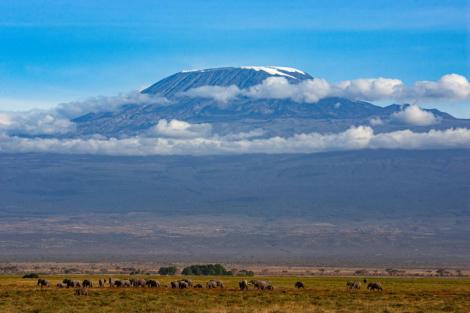
6 octobre 2024
2 places disponibles
4390 € / personne
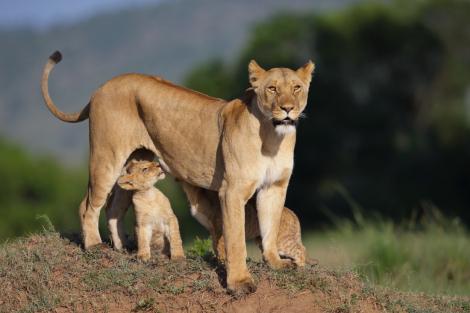
21 octobre 2024
3240 € / personne
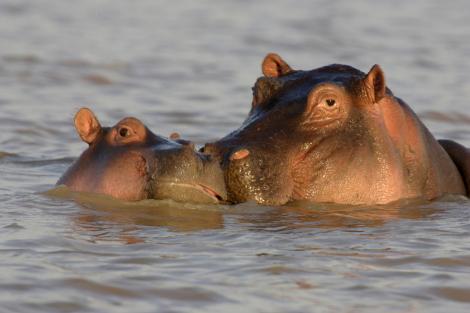
6 novembre 2024
4 places disponibles
3580 € / personne

3950 € / personne
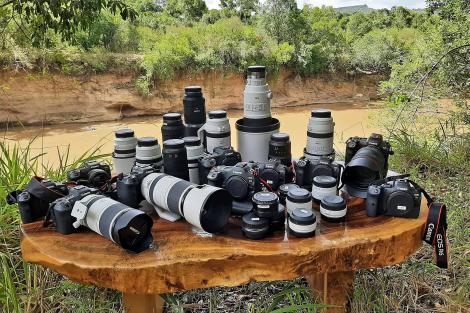
Workshop Canon avec prêt de matériel à Masai-Mara
Accompagnateur : Olivier Gadois & Tony Crocetta
7 janvier 2025
3 places disponibles
4320 € / personne

30 janvier 2025
3080 € / personne
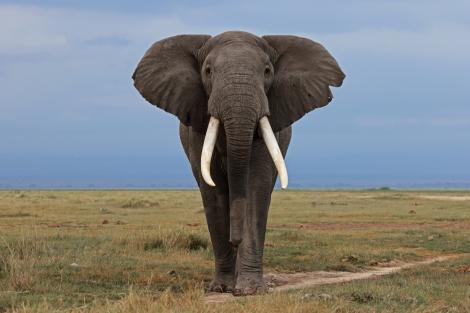
9 février 2025
4720 € / personne
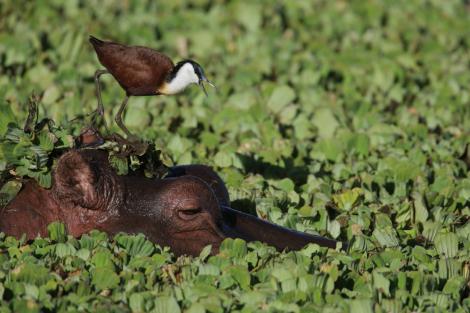
16 février 2025
3330 € / personne
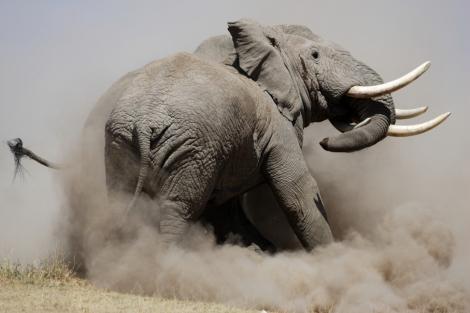
28 février 2025
4790 € / personne
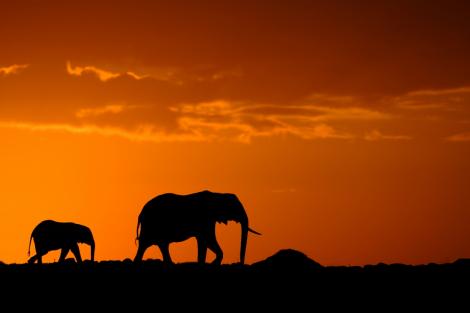
2 mars 2025
4250 € / personne
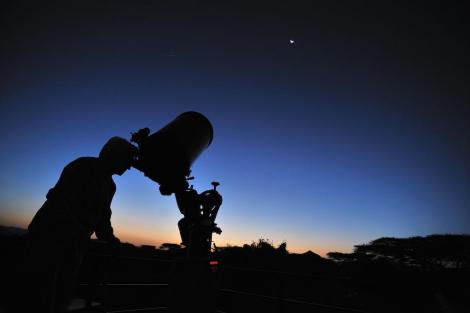
Nyota, la tête dans les étoiles
Accompagnateur : Olivier Sauzereau
20 mars 2025
6 places disponibles
3560 € / personne

16 avril 2025
4680 € / personne
pourquoi choisir Melting Pot Safaris
Francophonie.
Nous sommes une structure conçue pour les francophones ! Tous nos safaristes parlent ainsi la même langue. Selon disponibilité, vous serez guidés par un chauffeur/guide parlant le français.
Convivialité
Nos campements à taille humaine invitent à la convivialité. Nos espaces détentes permettent, le soir, des échanges décontractés à l’heure de l’apéro et du dîner.
Hébergements privés
Nous gérons nos propres hébergements : un authentique camp de brousse au bord de la rivière Mara à Masai-Mara et un lodge intimiste dominant le lac Baringo.
Véhicules adaptés
Notre propre flotte de véhicules 4x4 est idéalement transformée: habitacle rallongé, larges fenêtres panoramiques, et double toit-ouvrant. Pour plus de confort vous êtes 4 personnes maximum par 4x4.
Spécialiste du safari photo
Tous nos véhicules Land Cruiser sont équipés du kit de support de portière pour tête pendulaire.

Vous pouvez régler votre safari photo facilement en ligne, en Euro, via notre partenaire, le tour opérateur français LET’S GO TRAVEL par carte bancaire, par virement ou par chèque...
Nos hébergements

Melting Pot bush camp
Notre camp de brousse totalement privé au cœur du bush ! Une dizaine de tentes confortables à la philosophie « Out of Africa » avec vue imprenable sur la rivière Mara et ses débonnaires hippopotames. Authentique, au plus près de la nature.
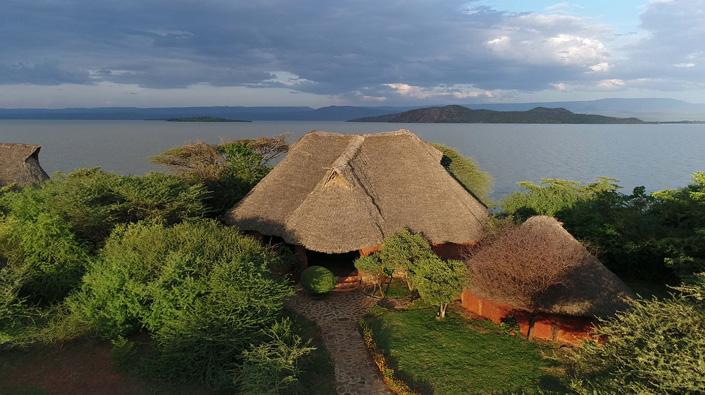
Tumbili Cliff lodge
Notre lodge est lové sur un promontoire rocheux dominant le lac et son paysage à couper le souffle ! Le lac Baringo, véritable miracle au cœur de la région centrale de la vallée du Rift, est un paradis ornithologique riche de 560 espèces d’oiseaux !
Qui sommes nous
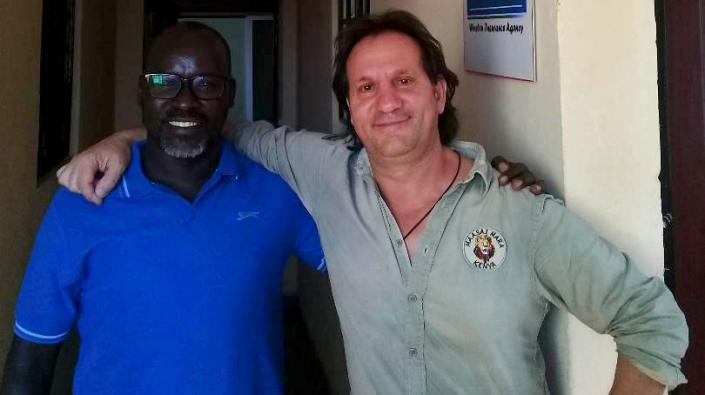
Eté 1998, vallée du Rift, Kenya. Sur les rives du lac Baringo, Tony Crocetta, photographe animalier en quête d’images nouvelles, croise la route de Simon Chebon, jeune guide naturaliste kenyan. Huit ans plus tard, fruit de leur expérience et de leur amitié, naîtra Melting Pot Safaris Ltd. Leur objectif : faire découvrir le meilleur du Kenya aux voyageurs francophones en organisant des safaris originaux au plus près de la nature. Camp de base de la structure, un authentique camp de brousse idéalement situé dans un coin confidentiel de la mythique réserve du Masai-Mara. Guide professionnel francophone et photographe animalier professionnel, Simon et Tony ont souhaité faire de Melting Pot, par philosophie et pour davantage de convivialité, le spécialiste francophone du safari photo au Kenya ! La clientèle de Melting Pot Safaris est internationale : vous êtes français, belge, suisse, québécois, luxembourgeois ou tout autre ressortissant parlant français… n’hésitez-plus, contactez-nous et vivez le safari dont vous avez toujours rêvé. Si notre structure est kenyane et que nous gérons intégralement la logistique des safaris sur place au Kenya, la partie vente/paiement est administrée depuis la France via le tour opérateur français partenaire Let’s Go Travel.
Plantez un arbre au Masai-Mara
Depuis la naissance de notre camp de brousse, avec l’aval des autorités gestionnaires de la réserve et en collaboration avec des écoles des villages limitrophes, nous avons planté plus de 1600 arbres indigènes, principalement des acacias, sokonoï ou croton bush. Si tous n’ont pas survécu (les éléphants et leur infaillible odorat n’ont pas leur pareil pour dénicher et consommer les jeunes acacias fraîchement mis en terre), nous continuons avec une motivation toujours plus forte ce programme de plantation. En séjournant dans notre camp de brousse, vous nous aiderez à participer à ce programme ambitieux et, si vous le désirez, avec l’aide de nos personnels, vous planterez votre arbre vous-même. A l’issue de votre safari photo, vous laisserez ainsi votre empreinte à Masai-Mara et participerez à un avenir prometteur.
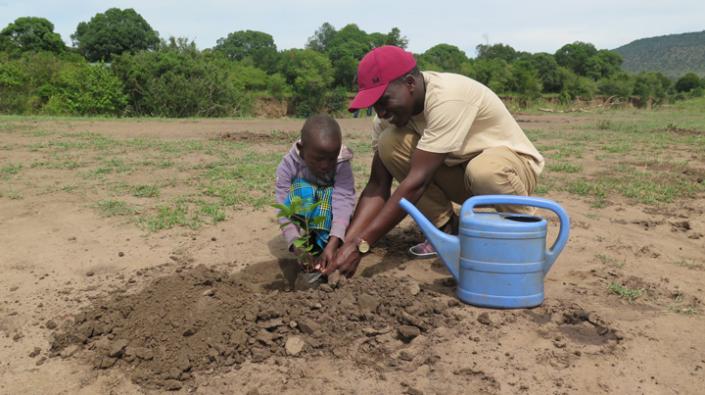
Ans d'existence
Safaris réalisés, meltingpotiens, arbres plantés.

IMAGES
COMMENTS
The Rift Valley and western interior are hot by day, cool at night and receive a moderate rainfall. November isn't the best time for beach holidays on the Kenyan coast, since it is quite wet and daytime temperatures can get very high. Game viewing in most safari destinations is good in November, though there is a risk of it being interrupted ...
Weather. The weather is varied in Kenya in November, depending on where you are in the country. In Nairobi and the central highlands, it tends to be hot and rainy with cools nights while the coast near the towns of Mombasa and Malindi is hot around the clock and not quite as rainy. In the hills near Hell's Gate National Park and other mountainous zones, temperatures are cooler and the rain is ...
1 - Le Parc National d'Amboseli. C'est sans aucun doute l'un des plus beaux parcs du continent africain et donc l'un des meilleurs pour faire un safari au Kenya. C'est le parc le plus connu et vous avez déjà forcément vu une photo prise dans ce parc avec le Kilimandjaro en arrière plan 🙂.
Encounter the breathtaking landscapes…. The inspiration for animators of Disney'sThe Lion King, Hell's Gate National Park covers roughly 26 square miles (68.25…. Take a game drive and spot some of Kenya's "Big Five" without truly leaving Nairobi on this experience. Ideal for those ….
November marks the start of the wet season. So expect overcast skies and torrential thundershowers, particularly during afternoons and evenings. It is best to head towards the coastal areas of the country for relatively drier and warmer conditions. Temperature-wise, Nairobi, the country's capital, scores a daily high of 25ºC and a low of 14ºC.
For a trip to Kenya, travellers are required to apply for a visa. The easiest, most commonly used visa for going on a safari in Kenya, is the Kenya e-visa . It is valid for 90 days, and can even be extended once to 180 days once you arrive in Kenya. The visa can easily be applied for online and will save you the hassle of having to apply at an ...
Why Kenya for a safari. Kenya is renowned as a premium destination for big 5 wildlife viewing, luxury lodges, Masai Mara safari tours, Amboseli National Reserve and incredible Kenya beaches have international visitors flocking from the U.S, U.K, Europe and beyond. Famous not just for its incredible wildlife at Tsavo National Park, Kenya is also surrounded by calderas and mountain ranges with ...
SEP. OCT. NOV. DEC. January is generally a warm and dry month in Kenya, with hot temperatures and low humidity. The weather is ideal for outdoor activities and wildlife viewing, making it a popular time to visit the country. The average temperature in Kenya during January is around 25°C (77°F), with average highs of 29°C (84°F) and lows of ...
Chicago, IL1 contribution. Hell's Gate and Naivasha tour. Definitely Worth a Half Day Trip! Michigan Center, MI108 contributions. Great experience of animals and culture. Copenhagen, Denmark2 contributions. beautiful sunset in nairobi national park. Top Kenya Safaris: See reviews and photos of Safaris in Kenya, Africa on Tripadvisor.
A safari in Kenya is an intoxicating blend for those after a real adventure. Expect sensational wildlife and wilderness, as well as wildly stylish camps and bush homes, a huge range of activities and a high degree of flexibility and freedom. The Kenyans practically invented the concept of safari; today's best guides were yesterday's ...
Witness the migration river crossings - but expect crowds! The wildebeest migration is one of the world's greatest natural phenomena, and watching the herds dodge hungry crocodiles as they surge across the Mara River is a staple of Kenya safari.. The migration moves into the Masai Mara from Tanzania's Serengeti between June and October. This is by far the busiest time and place of the ...
Si vous décidez de partir au Kenya en novembre, vous profiterez d'une fréquentation touristique peu importante et de tarifs attractifs, ce mois étant celui de la petite saison des pluies. Elles viennent de l'océan et se déplacent sous forme d'orages qui se produisent parfois dans l'après-midi. Mais les pluies sont peu abondantes.
8-Day Bush and Beach Holiday. Embark on a mesmerizing bush and beach holiday through the heart of East Africa to Masai Mara, Lake Naivasha, Amboseli and a beach holiday at Mombasa. Discover the enchanting landscapes, rich cultural tapestry and diverse wildlife. The majestic wildlife roaming the savannahs, the towering peaks of Kilimanjaro, and ...
1. Maasai Mara National Reserve. The Maasai Mara is perhaps the most iconic safari destination in Kenya, renowned for its breathtaking annual wildebeest migration. This vast expanse of savannah is home to the Big Five (lion, elephant, buffalo, leopard, and rhinoceros) and offers exceptional opportunities for game viewing.
Day 1: Arrival in Nairobi. Arrive in Nairobi, the capital of Kenya. Explore the city's attractions, including the Karen Blixen Museum, Giraffe Centre, and David Sheldrick Wildlife Trust. Enjoy a traditional Kenyan dinner at a local restaurant. Day 2: Nairobi to Amboseli National Park.
Looking forward to my next kid-friendly Kenya & Tanzania vacation." Hanna, traveled in January 2022 . Destinations Nairobi, Maasai Mara National Reserve, Lake Naivasha, Amboseli National Park +3 more Age Range 3 to 80 year olds Operated in English, French, Spanish +2 more Operator Bonvoyage Kenya Safaris
Kenya, the original safari destination, is a place steeped in safari tradition. It's renowned for its iconic Masai Mara, where generations have come to witness the Big 5 and the breathtaking annual wildebeest migration. A visit here offers an authentic "Out of Africa" experience that's both captivating and unforgettable.
A Kenyan Odyssey to the Mombasa Coast (private) Private Safari. 8 days / 7 nights. Discover Kenya's diverse landscapes and varied wildlife on this overland journey from the plains of the Masai Mara through the wilderness of Tsavo West National Park and on to the Mombasa coast. Guide Price: £2,529 pp.
I highly recommend Bon Voyage Safaris to anyone seeking an unforgettable safari experience in East Africa. 6 Days Kenya Budget Tours (with FREE NIGHT at Nairobi Hotel) JESICA ACHIENG 20 Mar, 2023. 5. It was definitely an experience of a lifetime and you would not regret it. Amboseli & Masai Mara Budget Safari By 4x4 Jeep. Sharon Norris 6 Oct, 2019.
SAFARI AU KENYA. à partir de 8 599 $ par personne (Occ. double) 15 JOURS / 12 NUITS. Masai Mara, les Lacs Naivasha et Nakuru, Amboseli (Kilimandjaro), le village Massai, la réserve de Tsavo et séjour balnéaire en tout-inclus à Diani sur l'Océan Indien. Le safari, le voyage d'une vie.
PROBABILITES. Pour un jour quelconque du mois de novembre, voici les probabiltés climatiques pour Nairobi. Précipitations : 31 %. Température < 0°C : 0 %. Température entre 0°C et 16°C : 1 %. Température entre 16°C et 32°C : 99 %. Température > 32°C : 0 %. Vent > 15 km/h : 17 %. Inconfort climatique : 61 %.
séjours disponibles en ce moment. Reste 4 jours. Kenya / Mombasa, Tsavo, Amboseli Severin Sea Lodge 4* avec safari inclus. Nouveauté. A partir de 743 €. Voir l'offre. Reste 6 jours. Kenya / Watamu et Parc National de Tsavo Ôclub Zen Lion Beach 4* et extension possible Safari à Tsavo. Nouveauté.
Melting Pot safaris est le spécialiste au Kenya du safari photo pour les francophones. Découvrez le parc du Masaï-Mara à bord de nos 4x4 Land Cruiser. ... 6 novembre 2024. 4 places disponibles. 3580 € / personne. ... Vous pouvez régler votre safari photo facilement en ligne, en Euro, via notre partenaire, le tour opérateur français LET ...